AUGUST 6 -23, 2025
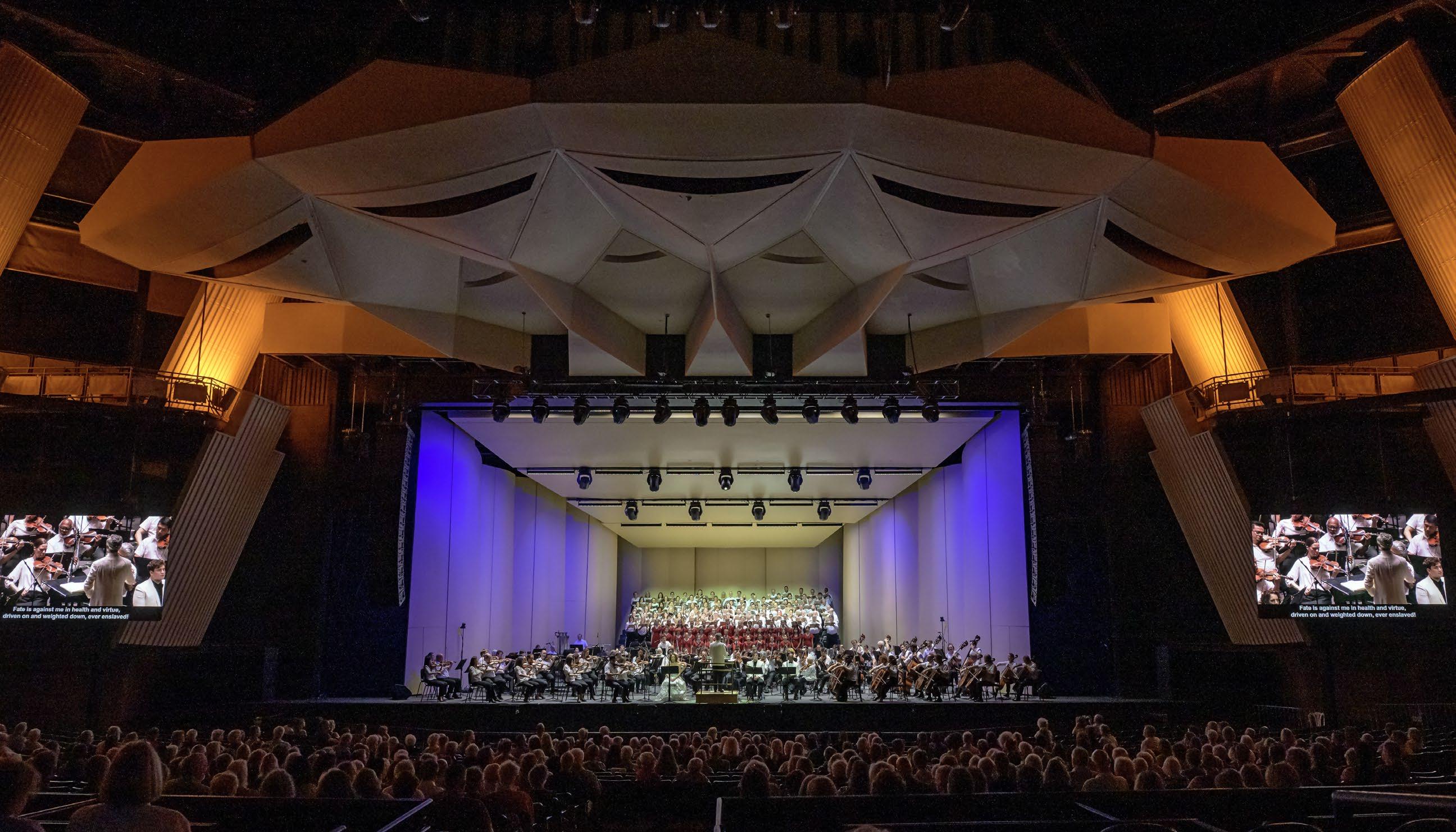

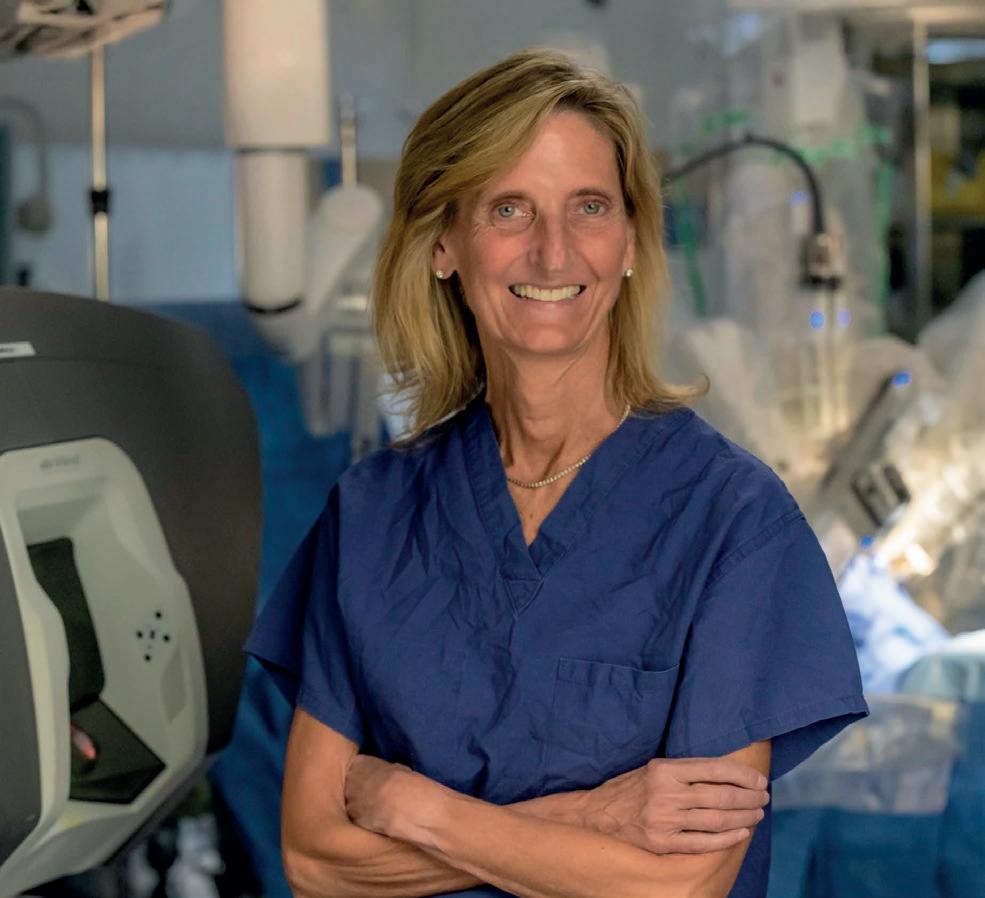
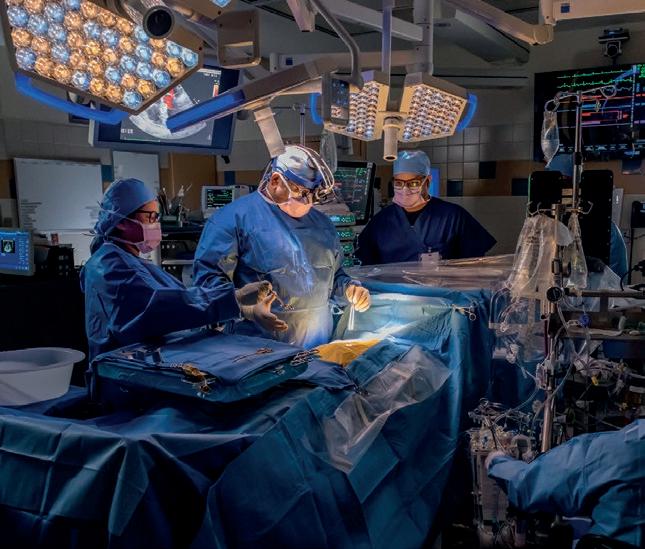

900
Four Hospitals, One Children’s Hospital, One College, and the Visiting Nurses

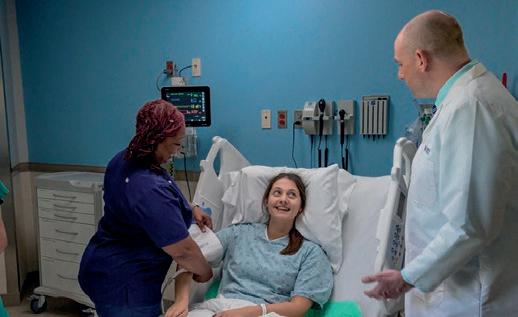

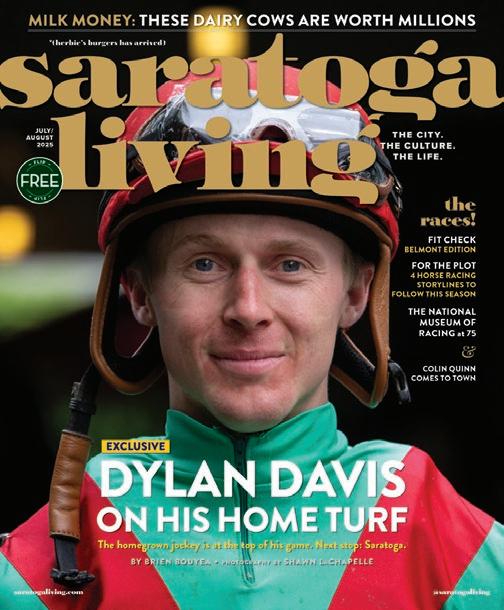
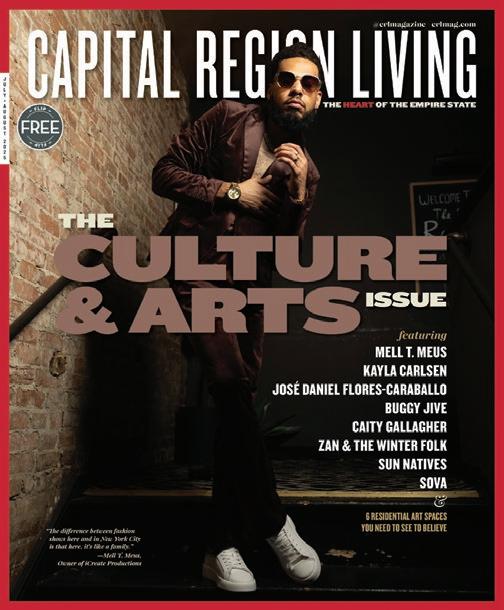

WE FLIPPED FOR YOU TWO GREAT MAGAZINES IN ONE PACKAGE!





AUGUST 6 -23, 2025





900
Four Hospitals, One Children’s Hospital, One College, and the Visiting Nurses






WE FLIPPED FOR YOU TWO GREAT MAGAZINES IN ONE PACKAGE!




Congratulations to SPAC for an extraordinary season. As long-time supporters of the performing arts in the Capital Region, we’re thrilled to see that live music and world-class ballet are flourishing in our community. For more satisfying ways to enjoy summer, visit Market 32 and Price Chopper. Our stores are packed with all the freshest fruits and vegetables, including your seasonal favorites.


Whether you’re joining us for the first time or you’ve been coming for years, we’re so glad you’re here. If you’ve visited us before, we are counting on your help to make SPAC an open and welcoming place for all. Here are some helpful tips to make your experience great!
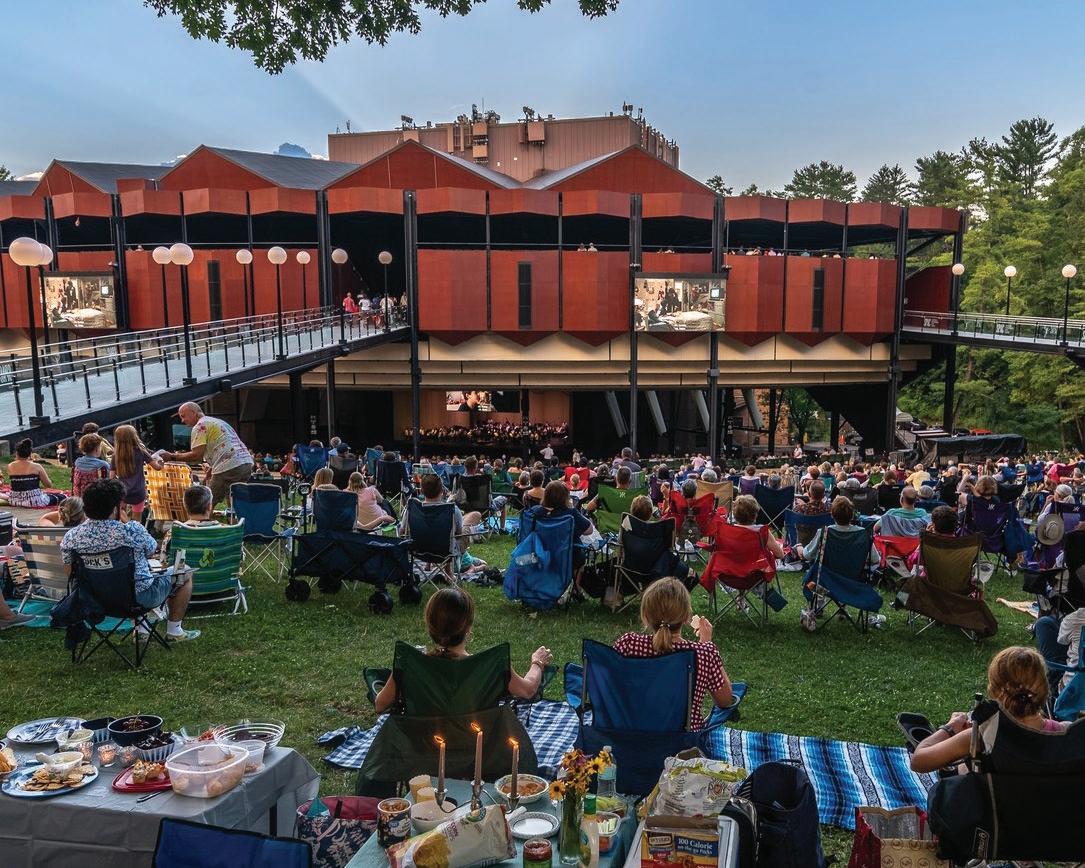
Most classical concerts and ballets last approximately 2 hours with one or two 20 minute intermission(s). Select productions are 90 minutes with no intermission. Run times are also listed on our website and this house program.
For orchestral performances, the concert will begin with the Concertmaster coming onstage. The audience claps as a welcome, and as a sign of appreciation to all the musicians. After the orchestra tunes, the conductor (and sometimes a soloist!) will come onstage and everyone will clap to welcome them, too.
A symphony or large orchestral piece may be comprised of multiple movements (they will be listed in your program). The audience will applaud at the conclusion of the entire piece and tries to avoid clapping
in between movements so as not break the concentration of the performers. When in doubt, it’s always safe to wait and follow what the rest of the audience does. If you do applaud between movements, don’t worry, what’s most important is you enjoyed the performance!
For ballet performances with live music, the audience will clap when the conductor first appears. Similar to movements of orchestral pieces, ballets have separate sections. However, unlike the orchestra, audiences will applaud at the end of each section and the ballet as a whole, or even when a dancer does something impressive.
If you are a seasoned concert-goer, it’s important to recognize guests around you may be less familiar with concert behavior. Thank you for helping us create a welcoming environment. We want to make sure that first timers are excited to come back.
Before the performance begins, we welcome photography and video of your SPAC experience– feel free to tag us on social media and we may share it to our stories! Once the curtain rises, please silence your electronic devices and refrain from using them until intermission or the end of the performance. The use of flash photography or any kind of recording devices are prohibited.
Listen for the chimes, which will sound approximately five minutes before the show. If you are sitting in the amphitheater, please stay seated until intermission. Latecomers will be seated with discretion of the ushers until there is a pause in the program.
Smoking is permitted on the SPAC grounds in designated areas only. Please ensure that all cigarette butts are disposed of properly.
Guests are welcome to bring blankets and umbrellas but please consider others around you — if your items are disruptive to others, you may be asked to remove them.
In the event that guests need or prefer to stand or move during a performance, please note that there is a grassy area behind the Julie Bonacio Family Pavilion with access to a video screen which would allow them to continue watching the show.
There is an accessible ramp allowing easier access into the amphitheater located on the north side of the venue behind the Hall of Springs Gate. All reserved seats on the lower level (sections 1-14) can be accessed without using stairs. Although the balcony can be accessed via balcony ramps, only the accessible reserved seats behind sections 16-17 can be accessed without using stairs. All other sections of the balcony require the use of stairs.
The venue provides a limited number of courtesy carts to help move guests closer to their seats. These carts are available at most events including SPAC’s classical season and Jazz Festival. Guests may be dropped off at the Route 50 Gate near the Sun Dial or Hall of Springs Gate where venue staff will further assist them.
Most restroom locations within the SPAC Grounds offer fully accessible and ambulatory restrooms stalls. Additionally, The Pines main restroom location has two private family / inclusive restrooms. Upon request, the SPAC Medical Clinic may be accessed for assistance and privacy with accessible restroom needs. Please note that House restrooms and Hall of Springs restrooms are not fully accessible due to stairs.
For SPAC events, we offer a limited number of Assisted Listening Devices (ALD) for guests. SPAC’s system is an ultra-high frequency, in-ear personal monitoring system. An induction neckloop for t-switch hearing aids or earbuds are available depending on need. Guests may pick up their ALD at Guest Services prior to the performance. If you’d like to reserve an ALD for future shows, please visit our website or call our Box Office.
On SPAC Family Nights (July 11, August 6, and August 23), an outdoor sensory space will be available. Located on the green space behind our Pinecone building, this calming area will offer supportive tools for individuals with sensory needs and is open to anyone who may benefit from a sensoryfriendly break.
Thank you for supporting the legendary Philadelphia Orchestra’s residency at SPAC. To help sustain world-class artistic programming in Saratoga, please scan the QR code.

In celebration, we’ve launched the Four Seasons campaign to renovate the historic Spa Little Theater and expand vital resources to ensure that the Saratoga Performing Arts Center continues to thrive, season after glorious season.






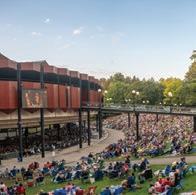


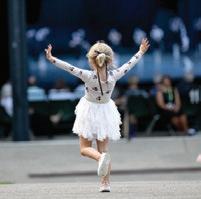






















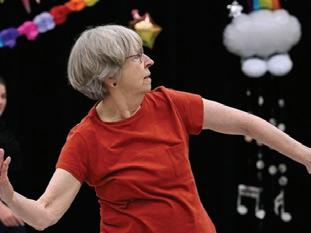

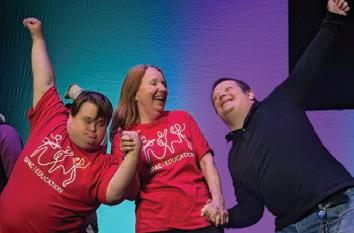
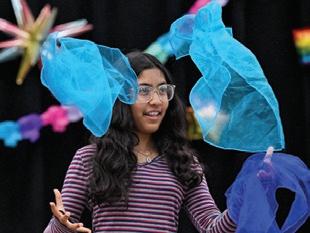





THU, JUL 10
New York City Ballet
Ballet Essentials Workshop for teens and adults
Access Workshop for teens and adults
SAT, JUL 12
New York City Ballet
Children’s Access Workshop Children’s Workshops

SUN, AUGUST 17
Hosted by Principal Tuba Carol Jantsch, Sound All Around introduces youngsters to musicians from The Philadelphia Orchestra through singing, movement, storytelling, and listening.

FRI, JULY 11
New York City Ballet Coppélia
WED, AUG 6
The Philadelphia Orchestra
Tchaikovsky Spectacular
SAT, AUG 23
The Philadelphia Orchestra
Back to the Future in Concert
Come to SPAC on Family Nights and experience fun-filled activities, including lawn games, crafts, face painting, giveaways, and free Stewart’s ice cream.*Family Nights begin at 5:30pm and are free to ticketed attendees.
*Free ice cream available while supplies last
THU, AUGUST 21
Violin, viola, cello, and bass players of all ages are invited to play on the SPAC stage alongside members of The Philadelphia Orchestra.

TUE, AUGUST 12
Join us for an unforgettable evening of joyful singing for all ages, all skill levels, all voices.

Welcome to SPAC, here in the perfect confluence of human-made and natural beauty. In a world that seems to be spinning ever faster, SPAC is a refuge where time begins to slow, if only for a few precious moments.
Together, as we settle into our seats in the amphitheater or out on the beautiful lawn, we sense our heartbeats quieting and the headlong rush into life slowing into a momentary respite. Together, we marvel at how great composers take time and tonality, shaping and stretching them into a whole new world of sound. Or how great choreography can compress timeless stories of lives and loves into one evening of exquisite movement and gesture. Amidst cathedrals of pines and enveloped by the cosmos, we take in the vastness of our world and experience the rhythms of life through a pas de deux, a symphony, or the cadence of a summer breeze, rather than through the relentless ticking of a clock.
This season at SPAC, we celebrate Wonder, cultivating a sense of awe in our everyday life and an appreciation for our shared humanity. Former U.S. Poet Laureate Ada Limón has written, “we, too, are made of wonders, of great and ordinary loves, of small invisible worlds, of a need to call out through the dark.”
During this moment in history, when our attention is fragmented and the world feels divided and vulnerable, we are greatly in need of shared experiences of beauty. Taking a moment to slow down and breathe deeply, our bodies and minds begin to appreciate the physical and mental health benefits proffered by these precious tastes of wonder and awe. It brings us out of our own “small invisible world” and out into our greater place in community.
We are delighted to share our 2025 summer season with you. Join us as we enter a state of wonder without time, division, or boundaries.
Warmly,

Elizabeth Sobol Chief Executive Officer



As Chair of Saratoga Performing Arts Center’s Board of Directors, it is my great pleasure to welcome you to our 2025 season. SPAC not only provides our community with joyful experiences with art and nature — it is also a vital part of our region’s economy, generating $105 million annually.
SPAC is now far more than a summer stage for world-class performances by New York City Ballet and The Philadelphia Orchestra – it is a dynamic, year-round organization. Over the past few months alone, we have welcomed best-in-class artists across all genres including classical, global and jazz, modern dance, and theater. We also provide accessible arts education programming to more than 50,000 individuals throughout the region.
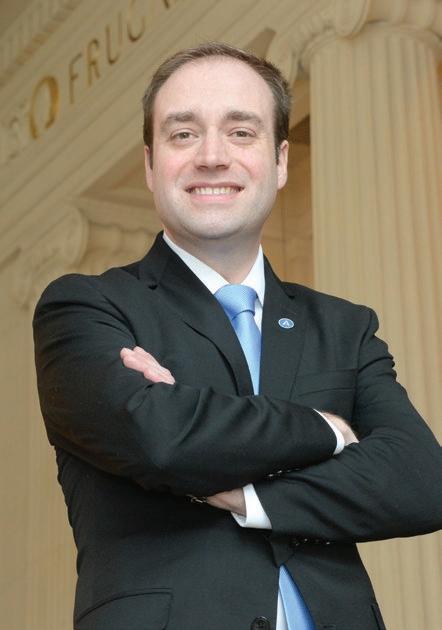
grow as a premier, year-round eco-cultural tourism destination of the highest caliber.
Central to our expanded mission is the Spa Little Theater: a cherished venue that now stands on the threshold of a transformative new chapter. As we approach SPAC’s 60th anniversary in 2026, we are proud to embark on a new “Four Seasons Campaign” —a visionary initiative that includes a complete revitalization of this nearly 100-year-old building. The project will bring an elegant, fresh, and accessible design to the theater while enhancing comfort for artists and audiences alike.
But this campaign is about more than a building. It is about safeguarding SPAC’s future to ensure we remain resilient and responsive in the years ahead. This investment will empower SPAC to continue cultivating a vibrant arts landscape across the Capital Region—and help Saratoga
Thanks to the dedicated leadership of my predecessor, Susan Dake, the vision and energy of Chief Executive Officer Elizabeth Sobol, and the generosity of our Board of Directors and community, we are well on our way to realizing this bold future. And thanks to you — our loyal patrons and supporters — we have the momentum to bring it to life.
We are deeply grateful to have you with us. Enjoy the performance, and we look forward to welcoming you back to SPAC again soon.
Warm regards,

Charles V. Wait, Jr. Chair, SPAC Board of Directors

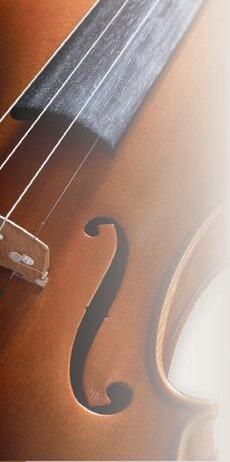
The funds raised will help revitalize the Spa Little Theater, which in turn will allow SPAC to increase its year-round programming.
BY CIERRA ORLYK
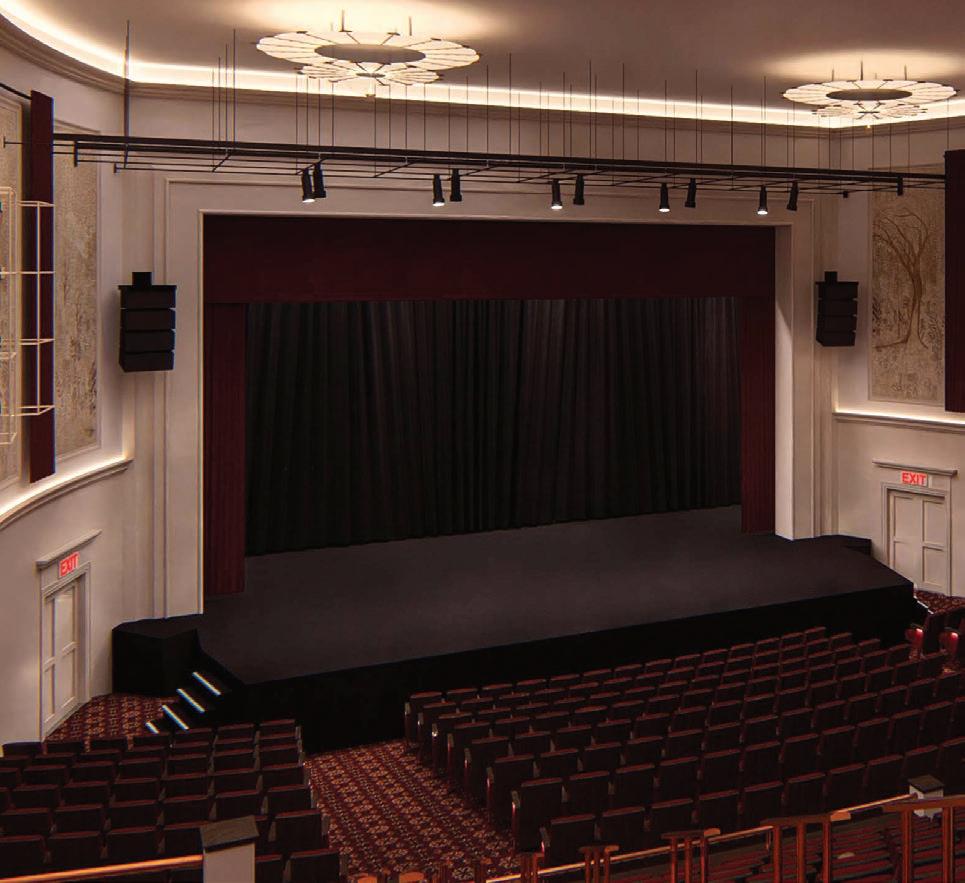
Go big or go home? Saratoga
Performing Arts Center (SPAC) is choosing the former as it kicks off a $17.5 million fundraising campaign to celebrate its 60th anniversary in 2026. While you’ve come to know SPAC as the go-to spot for summer music programming in Saratoga, after this capital campaign—aptly named the Four Seasons Campaign to reflect both SPAC’s year-round programming and its physical location amid the natural beauty of Saratoga Spa State Park—you may start to think differently about the jewel of Spa City performance arts.
The focus of the Four Seasons Campaign is The Spa Little Theater, which, located near SPAC in the Saratoga Spa State Park, hosts SPAC programming in the “off-season” (aka when an al fresco concert in the SPAC amphitheater isn’t feasible). While the historic venue is already
beloved, sometimes a little—or a lot of— modernization is necessary.
To that end, SPAC has partnered with New York State Parks to revitalize the 17,125-square-foot interior and exterior of the theater, marking the 500-seat venue’s first major renovation since it was built in 1935. The $12 million project includes a new floor plan and accessibility measures, theater upgrades including improved seating and increased ADA seating, a brand-new stage floor, and a state-of-the-art HVAC system. In addition, the lobby will be transformed with a new layout that includes renovated and accessible restrooms; new dressing rooms, a multipurpose community room, an outdoor patio, an artist suite, and a bar/ cafe (!) will also be added. All of this will be done while maintaining the theater’s historic integrity.
That’s not all the Four Seasons Campaign will fund, though. The other $5.5 million will support SPAC

initiatives including artistic vision (to activate new spaces, collaborate with new artists, and engage with new audiences); education and community (to continue to offer free programs, educational workshops, and weekly classes for children and other underserved audiences); and facilities and operations (to support SPAC’s operational administration, maintenance and upkeep, security, inevitable emergencies, and staff).
The behemoth fundraising effort is already underway. During the quiet phase of the campaign, which launched behind the scenes in 2024, Stewart’s Shops/The Dake Family gave a lead gift of $1 million; subsequently, the project was awarded a $2.2 million capital grant from Empire State Development as well as $2 million from the most recently enacted New York State budget. Additional funding has come from the SPAC board, private donors, and family foundations, but more still needs to be raised.



“Even after over eight years at the helm of SPAC, I still marvel at the sense of connection and generosity that this community has for SPAC and our city—as well as our unique and extraordinary partnership with New York State Parks that has made this magic possible for six decades,” said Elizabeth Sobol, SPAC’s CEO. “Launching our Four Seasons Campaign is an exciting next step that will bring us into the future.”
Currently, New York State Parks and SPAC are negotiating a long-term agreement for SPAC’s renovation and operation of Spa Little Theater. Groundbreaking is anticipated for September 2025, and the reopening of the theater is planned for late fall 2026, marking the conclusion of the 60th anniversary season.
Love SPAC and want to be part of its future? Learn more and donate to the Four Seasons Campaign at spac.org/four-seasons.



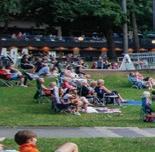



As a nonprofit organization, your membership sustains our year-round artistic, educational, and community programming.

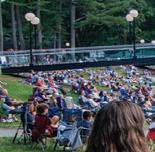



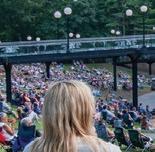








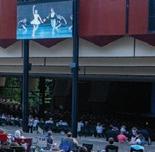


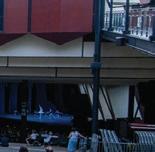






Make your SPAC experiences truly unforgettable with exclusive member benefits* such as:

• VIP parking




• Early ticket access and discounts for Saratoga Jazz Festival, New York City Ballet, The Philadelphia Orchestra, and Spa Little Theater performances
• Live Nation concert ticket presales and preferred seating
• Members-only rehearsals for New York City Ballet and The Philadelphia Orchestra







• Patrons’ Club Dining and Patrons’ Patio for pre-performance refreshments
SCAN HERE Join or renew today to lock in 2025 rates!



For more information on membership and associated benefits, please scan the QR code, go to spac.org/membership or call 518.584.9330, ext. 803.

• Access to The Pines Terrace, with its breathtaking views of the entire SPAC campus
*Benefits vary based on membership level.



SPAC Action Council presents SPAC In Conversation: Julie Scelfo
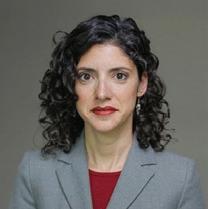
We are thrilled to welcome back Julie Scelfo, author of The Women Who Made New York and Founder of Mothers Against Media Addiction, for a day of conversation, community, and camaraderie.
Wednesday, October 22, 2025 Hall of Springs at SPAC
Interested in Becoming an Ambassador for SPAC?















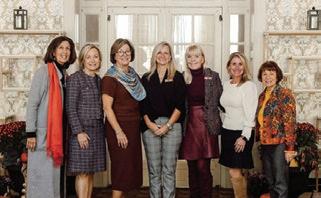
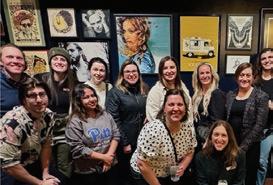

Join SPAC Action Council or Friends of SPAC today!
SPAC Action Council was established in 1977 by SPAC founders Philly Dake and Jane Wait. The Action Council is a community of ambassadors that support SPAC’s mission, membership, and events through advocacy and fundraising.
Friends of SPAC Committee is a dynamic group of community members who also support SPAC’s mission through advocacy and fundraising, with a focus on engaging a younger demographic in promoting SPAC.
Visit “About/Who We Are” at spac.org for more information.

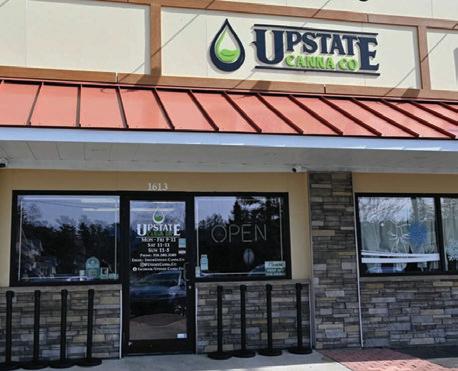



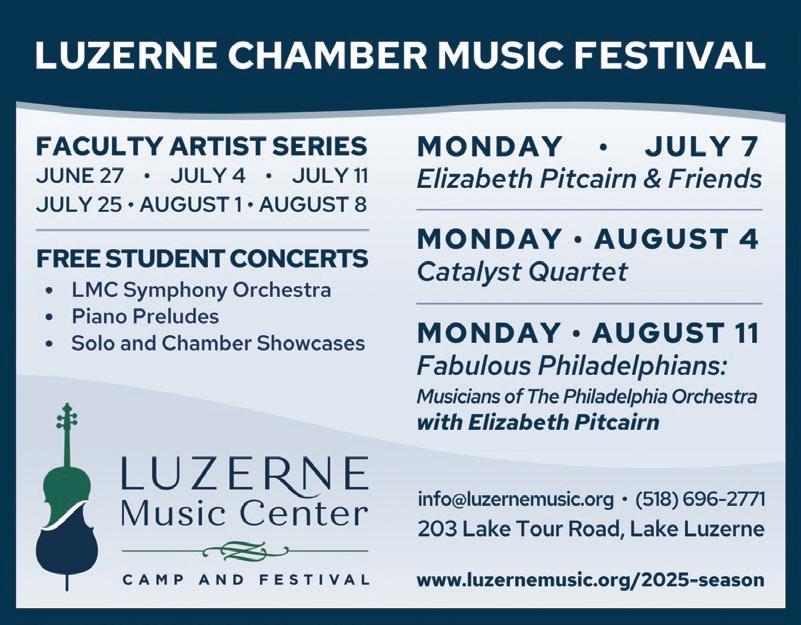

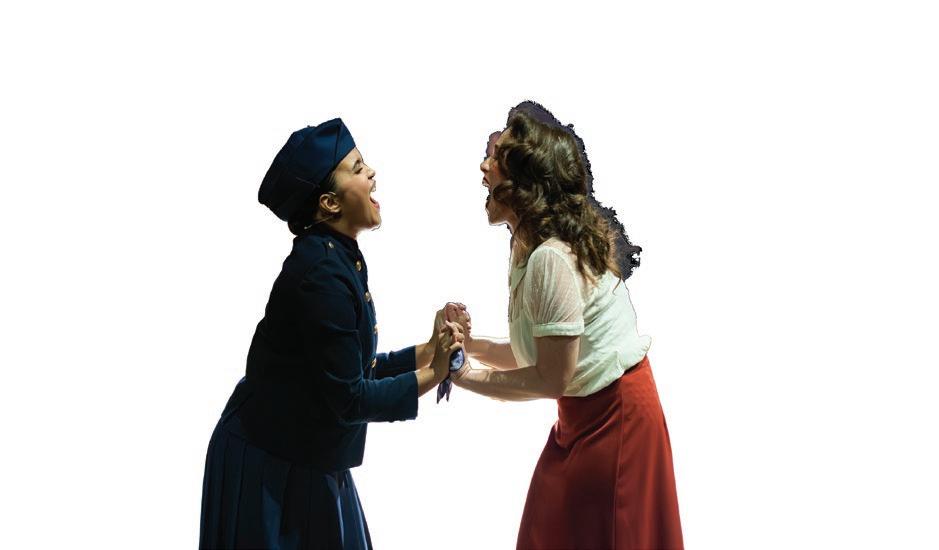


Join us in the intimate Spa Little Theater for Chamber Music Society of Lincoln Center’s 2025 Summer Season
JUN 15



JUL 13
JUN 22



Beethoven & Dvořák



Great Sonatas: Beethoven, Brahms, and Mozart


Mendelssohn’s String Quintet in A Major

AUG 10
JUL 20
Beethoven’s Quintet for Piano and Winds
The Viano String Quartet




AUG 17 Shostakovich and Dohnányi







Learn more or buy tickets at SPAC.ORG
David Alan Miller | Heinrich Medicus Music Director

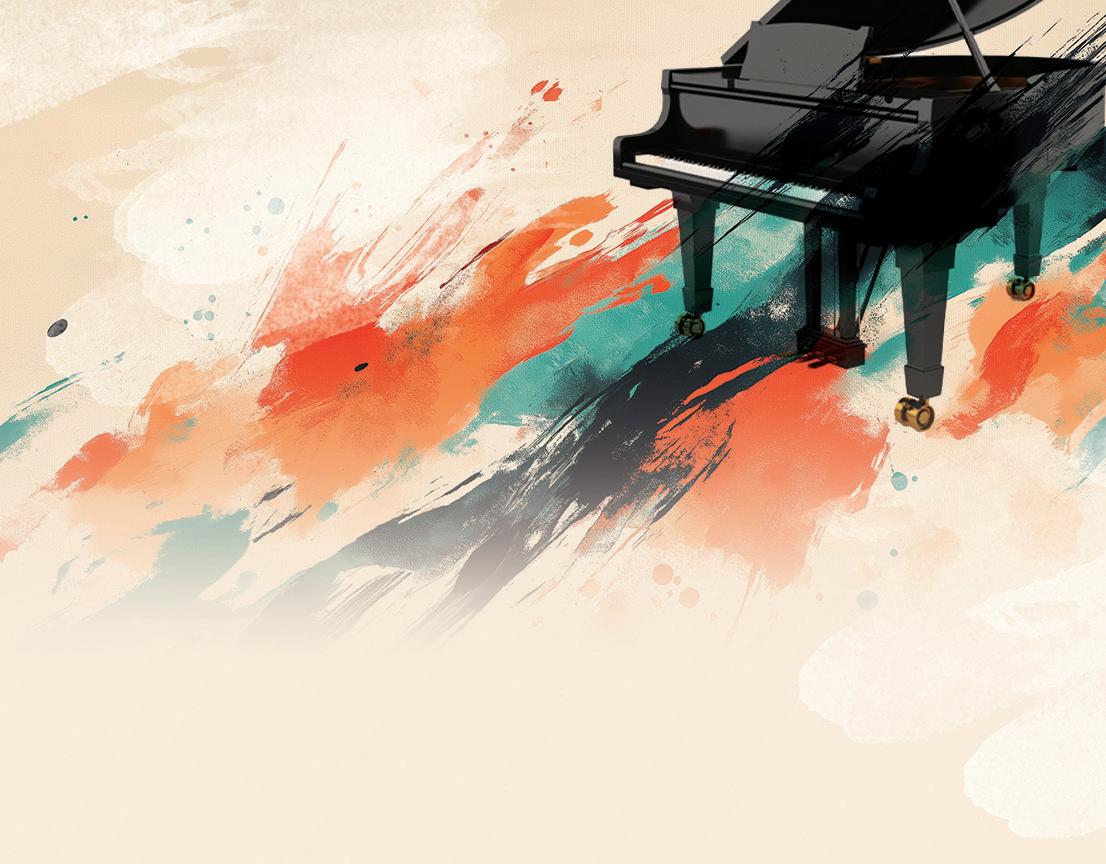
The two-time GRAMMY Award-winning Albany Symphony is proud to announce its 2025-2026 season, featuring gorgeous masterworks including Stravinsky’s The Firebird Suite, Holst’s The Planets, Rachmaninoff’s Piano Concerto No. 2, Beethoven’s Violin Concerto, and Shostakovich’s Symphony No. 10, as well as thrilling new works by today’s most outstanding, celebrated composers. Concerts are held in the Capital Region’s most sonically splendid concert venues, including the Troy Savings Bank Music Hall, the Palace Theatre in downtown Albany, Proctors in Schenectady, and EMPAC at RPI in Troy. The season continues the Albany Symphony’s multi-year festival project Water Music New York: More Voices, commemorating the Erie Canal Bicentennial.












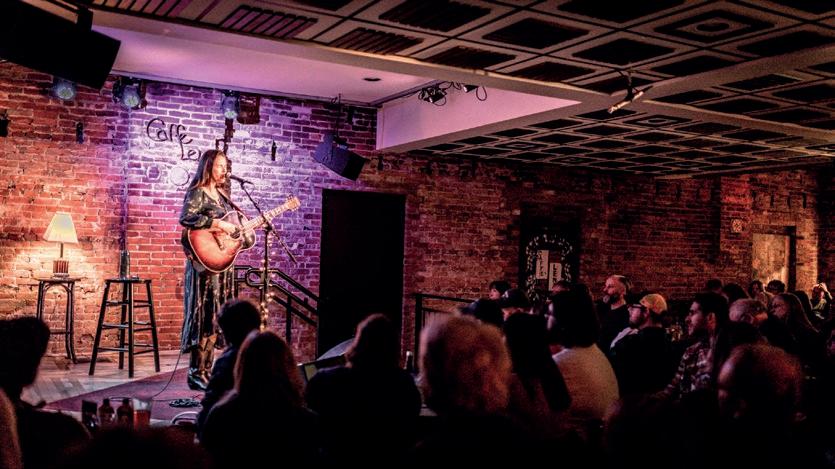






The world-renowned Philadelphia Orchestra strives to share the transformative power of music with the widest possible audience, and to create joy, connection, and excitement through music in the Philadelphia region, across the country, and around the world. Through innovative programming, robust education initiatives, a commitment to its diverse communities, and the embrace of digital outreach, the ensemble is creating an expansive and inclusive future for classical music and furthering the place of the arts in an open and democratic society. In June 2021 the Orchestra and its home, the Kimmel Center, united. Today, The Philadelphia Orchestra and Ensemble Arts brings the greatest performances and most impactful education and community programs to audiences in Philadelphia and beyond.
Yannick Nézet-Séguin is now in his 13th season with The Philadelphia Orchestra, serving as music and artistic director. His connection to the ensemble’s musicians has been praised by both concertgoers and critics, and he is embraced by the musicians of the Orchestra, audiences, and the community. In addition to expanding the repertoire by embracing an ever-growing and diverse group of today’s composers, Yannick and the Orchestra are committed to performing and recording the works of previously overlooked composers.
Your Philadelphia Orchestra takes great pride in its hometown, performing for the people of Philadelphia year-round, at the Kimmel Center for the Performing Arts, around the community,
over the airwaves, and online. The Kimmel Center has been the ensemble’s home since 2001, and in 2024 Verizon Hall at the Kimmel Center was officially rededicated as Marian Anderson Hall in honor of the legendary contralto, civil rights icon, and Philadelphian. The Orchestra’s award-winning education and community initiatives engage over 50,000 students, families, and community members of all ages through programs such as PlayINs; side-by-sides; Our City, Your Orchestra Live; the free annual Martin Luther King, Jr., Tribute Concert; School Concerts; sensory-friendly concerts; open rehearsals; the School Ensemble Program; All City Orchestra Fellowships; and residency work in Philadelphia and abroad.
Through concerts, tours, residencies, and recordings, the Orchestra is a global ambassador and one of our nation’s greatest exports. It performs annually at Carnegie Hall, the Mann Center, the Saratoga Performing Arts Center, and the Bravo! Vail Music Festival. The Orchestra also has a rich touring history, having first performed outside Philadelphia in its earliest days. In 1973 it was the first American orchestra to perform in the People’s Republic of China, launching a now-five-decade commitment of people-to-people exchange.
Under Yannick’s leadership, the Orchestra returned to recording with 14 celebrated releases on the Deutsche Grammophon label, including the GRAMMY® Award–winning Florence Price Symphonies Nos. 1 & 3. The Orchestra also reaches thousands of radio listeners with weekly broadcasts on WRTI-FM and SiriusXM. For more information, please visit philorch.org
Yannick Nézet-Séguin
Music and Artistic Director
Walter and Leonore Annenberg Chair
Marin Alsop
Principal Guest Conductor
Ralph and Beth Johnston Muller Chair
Naomi Woo
Assistant Conductor
Joseph Conyers
Education and Community Ambassador
Mark and Tobey Dichter Chair
Charlotte Blake Alston
Storyteller, Narrator, and Host
Osagie and Losenge Imasogie Chair
David Kim, Concertmaster
Dr. Benjamin Rush Chair
Juliette Kang, First Associate Concertmaster
Joseph and Marie Field Chair
Christine Lim, Associate Concertmaster
Marc Rovetti, Assistant Concertmaster
Dr. James F. Dougherty Chair
Barbara Govatos
Robert E. Mortensen Chair
Jonathan Beiler
Hirono Oka
Richard Amoroso
Robert and Lynne Pollack Chair
Yayoi Numazawa
Jason DePue
Larry A. Grika Chair
Jennifer Haas
Miyo Curnow
Elina Kalendarova
Daniel Han
Julia Li
William Polk
Mei Ching Huang
Kimberly Fisher, Principal
Peter A. Benoliel Chair
Paul Roby, Associate Principal
Sandra and David Marshall Chair
Dara Morales, Assistant Principal
Anne M. Buxton Chair
Philip Kates
Peter A. Benoliel Chair
Davyd Booth
Paul Arnold
Joseph Brodo Chair, given by Peter A. Benoliel
Boris Balter
Amy Oshiro-Morales
Volunteer Committees Chair
Yu-Ting Chen
Jeoung-Yin Kim
Willa Finck
John Bian
MuChen Hsieh
Eliot Heaton
VIOLAS
Choong-Jin Chang, Principal
Ruth and A. Morris Williams, Jr., Chair
Kirsten Johnson, Associate Principal
Kerri Ryan, Assistant Principal
Burchard Tang
Renard Edwards
Anna Marie Ahn Petersen
Piasecki Family Chair
David Nicastro
Che-Hung Chen
Rachel Ku
Marvin Moon
Meng Wang
Hsiang-Hsin Ching
CELLOS
Hai-Ye Ni, Principal
Priscilla Lee, Associate Principal
Yumi Kendall, Assistant Principal
Elaine Woo Camarda and A. Morris Williams, Jr., Chair
Richard Harlow
Kathryn Picht Read
John Koen
Derek Barnes
Alex Veltman
Jiayin He
Michael Katz
BASSES
Joseph Conyers, Principal
Carole and Emilio Gravagno Chair
Gabriel Polinsky, Associate Principal
Tobias Vigneau, Assistant Principal
David Fay
Duane Rosengard
Nathaniel West
Michael Franz
Christian Gray
Some members of the string sections voluntarily rotate seating on a periodic basis.
FLUTES
Jeffrey Khaner, Principal
Paul and Barbara Henkels Chair
Patrick Williams, Associate Principal
Rachelle and Ronald Kaiserman Chair
Olivia Staton
Erica Peel, Piccolo
OBOES
Philippe Tondre, Principal
Samuel S. Fels Chair
Peter Smith, Associate Principal
Jonathan Blumenfeld
Edwin Tuttle Chair
Elizabeth Starr Masoudnia, English Horn
Joanne T. Greenspun Chair
CLARINETS
Ricardo Morales, Principal
Leslie Miller and Richard Worley Chair
Samuel Caviezel, Associate Principal
Sarah and Frank Coulson Chair
Socrates Villegas
Paul R. Demers, Bass Clarinet
Peter M. Joseph and Susan Rittenhouse Joseph Chair
BASSOONS
Daniel Matsukawa, Principal
Richard M. Klein Chair
Mark Gigliotti, Co-Principal
Angela Anderson Smith
Holly Blake, Contrabassoon
HORNS
Jennifer Montone, Principal
Gray Charitable Trust Chair
Jeffrey Lang, Associate Principal
Hannah L. and J. Welles Henderson Chair
Christopher Dwyer
Chelsea McFarland
Ernesto Tovar Torres
TRUMPETS
(position vacant)
Marguerite and Gerry Lenfest Chair
Jeffrey Curnow, Associate Principal
Anthony Prisk
TROMBONES
Nitzan Haroz, Principal
Neubauer Family Foundation Chair
Matthew Vaughn, Co-Principal
Jack Grimm
Blair Bollinger, Bass Trombone
Drs. Bong and Mi Wha Lee Chair
TUBA
Carol Jantsch, Principal
Lyn and George M. Ross Chair
TIMPANI
Don S. Liuzzi, Principal
Dwight V. Dowley Chair
Angela Zator Nelson, Associate Principal
PERCUSSION
Christopher Deviney, Principal
Charlie Rosmarin, Associate Principal
Angela Zator Nelson
PIANO AND CELESTA
Kiyoko Takeuti
KEYBOARDS
Davyd Booth
HARP
Elizabeth Hainen, Principal
LIBRARIANS
Nicole Jordan, Principal
Holly Matthews
STAGE PERSONNEL
Dennis Moore, Jr., Manager
Francis “Chip” O’Shea III
Aaron Wilson
James P. Brandau
Patrick J. Brennan, M.D.
Jeffrey Brown
Karen Dougherty Buchholz
Elaine Woo Camarda
Joseph Ciresi
Michael M. Cone
Joseph Conyers*
Robert R. Corrato, M.D.
Sarah Miller Coulson
Robert Curley
Peter Dean*
Robert J. Delany, Sr.
Mark S. Dichter
Jeff Dittus
James Dougherty*
Joseph M. Field
Ryan Fleur*
Mark J. Foley
John Fry
Lauren Gilchrist
Donald A. Goldsmith
Julia Haller, M.D.
Ralph W. Muller Chair
Ryan Fleur
President and Chief Executive Officer
Yannick Nézet-Séguin
Music and Artistic Director, The Philadelphia Orchestra
Robert C. Heim
Nina Henderson
Osagie O. Imasogie
Patricia Harron Imbesi
Philip P. Jaurigue
Kenyatta Johnson*
Bennett Keiser
Christopher M. Keith
David Kim*
Neal W. Krouse
Lauren Lambrugo*
Joan Lau
Brook J. Lenfest
Jeffrey A. Leonard
Bruce G. Leto
Tod J. MacKenzie
Joseph M. Manko, Sr.
John H. McFadden
Jami Wintz McKeon
Stan Middleman
Dara Morales*
Ralph W. Muller
Yannick Nezet-Seguin*
Richelle Rabenou*
Jon Michael Richter
Caroline B. Rogers
Charles E. Ryan
Kerri Ryan*
Adele K. Schaeffer
Peter L. Shaw
Molly Shepard*
Adrienne Simpson
Matthew A. Taylor
Jennifer F. Terry
Tiffany Thurman*
Michael R. Vennera
Rev. Dr. Alyn Waller
Nathaniel West*
Robert Wilson
Richard B. Worley
Joseph Zebrowitz, M.D.
Bin Zhang
*EX-OFFICIO
AS OF JULY 8, 2025
Ryan Fleur
President and Chief Executive Officer
Ashley Berke
Chief Communications Officer
Crystal Brewe
Executive Vice President and Chief Operating Officer
Tanya Derksen
Chief Artistic Production Officer
Mario Mestichelli
Executive Vice President and Chief Financial Officer
Doris Parent
Chief Inclusion, Diversity, Equity, and Access Strategies (IDEAS) Officer
Jeremy Rothman
Chief Programming Officer


27 & 28 JULY 8-11 AUGUST 5-22



MARIN ALSOP
Conductor
HAI-YE NI
Cello
TCHAIKOVSKY
Selections from Suite No. 1 from The Nutcracker, Op. 71a
I. Miniature Overture
II. March
III. Dance of the Sugar Plum Fairy
IV. Russian Dance
VIII. Waltz of the Flowers
TCHAIKOVSKY/arr. Fitzenhagen
Variations on a Rococo Theme, Op. 33, for cello and orchestra
INTERMISSION
TCHAIKOVSKY
Hamlet Overture, Op. 67
TCHAIKOVSKY
Solemn Overture, 1812, Op. 49
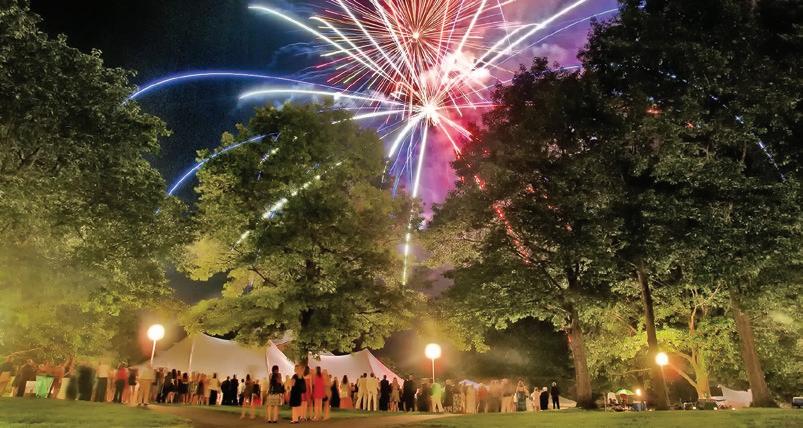
Please turn off cell phones and disconnect electronic signals on watches or pagers before the start of the performance. Fireworks immediately follow the performance. This program is made possible in part with generous support from Skidmore College and Hudson Headwaters Health Network. This program is approximately 2 hours.

WEDNESDAY, AUGUST 6, 7:30PM
Composed from 1891 to 1892
Born in Kamsko-Votkinsk, Russia, May 7, 1840
Died in St. Petersburg, November 6, 1893
Tchaikovsky produced masterpieces in a wide range of genres, not just his beloved symphonies and concertos, but also extending to music for the stage, including nearly a dozen operas. Another theatrical genre he brought to new heights was ballet. Russian culture was intimately connected to France, where dance had long held a special place, going back to the age of Louis XIV. There was an explosion of grand narrative ballets in Paris during the 19th century, among them Adolphe Adam’s Giselle (1841) and Léo Delibes’s Coppélia (1870) and Sylvia (1876). It was only natural that Russia would follow suit; Tchaikovsky played the crucial role there with his three ballets: Swan Lake (1876), Sleeping Beauty (1889), and The Nutcracker (1892).
His final theatrical project was an ambitious double bill of a one-act opera and two-act ballet: Iolanta and The Nutcracker. It seems economically unimaginable these days to mount an opera alongside a ballet, but it had been done in Paris and Russia did so as well. Sleeping Beauty had been an enormous success in 1889 and Tchaikovsky was commissioned by the Imperial theaters for this project. He began writing the ballet in February 1891, using a scenario devised by the legendary French choreographer Marius Petipa, and The Nutcracker premiered at the Mariinsky Theater in St. Petersburg in December 1892.
The ballet is based on Nussknacker und Mausekönig (Nutcracker and Mouse King), a story by the prominent German writer E.T.A. Hoffmann as related in a French version by Alexandre Dumas père. The tale takes place at Christmas time as the Silberhaus family and their assorted guests gather for a merry party. Clara and her brother, Fritz, help in decorating the tree. The mysterious Drosselmeyer, the children’s godfather, enters with many gifts, including a large Nutcracker outfitted as a soldier, which particularly delights the young girl. Fritz breaks the gift and Clara holds it in her arms.
After everyone goes to bed, Clara returns and is amazed to see the gifts—various dolls and soldiers—at war with an army of mice. The
Nutcracker, crucially assisted by Clara, does battle with the King of the Mice, emerges victorious, and is magically transformed into a dashing Prince. He transports Clara to a winter wonderland. Act II takes place in the Kingdom of Sweets, where the Sugar Plum Fairy welcomes Clara and the Prince. There is a grand banquet accompanied by a series of six national dances before a final waltz in which everyone praises Clara.
—Christopher H. Gibbs
ON A ROCOCO THEME, OP. 33, FOR CELLO AND ORCHESTRA (arranged by Wilhelm Fitzenhagen) Composed in 1876
PYOTR ILYICH TCHAIKOVSKY
Many cellists no doubt live with a certain degree of concerto envy. They play such a wonderful instrument, capable of singing the most beautiful melodies in a lush baritone range (but also with possibilities for transforming into a bass, a tenor, and even, in the highest registers, a soprano). They can also proudly claim what some consider the greatest concerto ever written, Dvořák’s magnificent essay from 1894-95, as well as wonderful singular offerings from Schumann and Elgar. And yet when cellists look at the riches that pianists and violinists can perform, so many concertos by so many composers, there may be some sense of frustration. Nothing from Mozart at all, and a shared spotlight from Beethoven and Brahms in the former’s Triple Concerto for Piano, Violin, and Cello, and latter’s Double Concerto for Violin and Cello.
And even those works that cellists do possess sometimes require explanations, at least before the blossoming of repertory in the 20th century. Two concertos by Haydn are familiar fare, but the authenticity of the one in D major was long questioned and the charming one in C major was only discovered in the 1960s. Italian composer Luigi Boccherini (1743–1805) is best known today for one work: the Cello Concerto in B-flat major. This piece came to prominence in the late 19th century through a mangled arrangement by a leading German cellist, Friedrich Grützmacher, who pieced together various works by the composer.
The situation with Tchaikovsky’s Rococo Variations is somewhat similar. He composed the piece for a colleague at the Moscow Conservatory, the eminent young German cellist
Wilhelm Fitzenhagen. Tchaikovsky started work just before Christmas in 1876 but soon became frustrated: “Many people keep dropping in here unexpectedly—it seems that everyone in Petersburg is holding me back, when I had stupidly imagined that it would be possible to take advantage of the holidays to work.” He first wrote out a cello and piano version that he showed to Fitzenhagen, who heavily edited the solo part. Such partnerships were not unusual, especially when the composer did not play the instrument.
Tchaikovsky accepted Fitzenhagen’s emendations and went on to orchestrate the piece. Nikolai Rubinstein conducted the 1877 Moscow premiere with Fitzenhagen as soloist. Since Tchaikovsky was abroad at the time he could not attend, but the event apparently was successful. Things got more complicated on the way to publication as Fitzenhagen considerably altered the piece, not limiting himself any longer to just the solo line, but going so far as to rearrange the order of the original eight variations and cut the last one entirely. The publisher Pyotr Jurgenson complained to Tchaikovsky: “Loathsome Fitzenhagen! He is most insistent on making changes to your cello piece, and he says that you have given him full authority to do so. Heavens!” One of Tchaikovsky’s students relates that the composer went along: “The devil take it! Let it stand as it is!” The cello and piano arrangement appeared in 1878 and the full score in 1889. Tchaikovsky’s original version was only reconstructed in 1941; it is rarely played today.
Tchaikovsky once wrote to his generous patron Nadezhda von Meck: “It is thanks to Mozart that I devoted my life to music. I adore and idolize him.” The affinity may seem a bit surprising as Tchaikovsky’s music is popularly viewed as so lushly Romantic and Mozart’s as an exemplar of refined Classicism, yet both used music as a vehicle for deep personal expression and did so with exquisite technique. Tchaikovsky had a lasting affinity, indeed nostalgia, for the 18th century. The word rococo is most associated with the decorative arts of the time—the word apparently derives from the French rocaille, “shellwork,” and today brings to mind paintings by Watteau, Boucher, and Fragonard.
Following a short orchestral introduction, the cello states the principal theme that has the character of a charming gavotte dance. It is made up of two complementary parts plus a codetta, which, as David Brown has remarked, projects
WEDNESDAY, AUGUST 6, 7:30PM
a spirit both old and new: “If the original theme, chaste in outline and gracefully paced in its harmonies, masks the personality of its creator, a clear glimpse of the composer himself is provided by this codetta, with its richly detailed, pedalsupported chromaticism.” Tchaikovsky originally had eight variations follow, which Fitzenhagen reordered and cut to seven, saving a passionate Andante until just before the coda. Perhaps Tchaikovsky agreed only reluctantly to the changes, but he nonetheless remained friends with the cellist. Whatever the relative merits of the two versions, audiences (and cellists) remain grateful for the enchanting addition to the instrument’s repertory.
—Christopher H. Gibbs
It comes as little surprise that Shakespeare’s Hamlet has inspired numerous composers, from Niels Gade, Franz Liszt, Joseph Joachim, and Edward MacDowell in the 19th century to John Cage, Morten Feldman, Hans Werner Henze, Dmitri Shostakovich, and William Walton in the 20th. Among this exceedingly diverse assortment of composers most wrote instrumental pieces of some kind; Ambroise Thomas’s Hamlet is a rare operatic treatment. Despite its fame and familiarity with audiences, the philosophical nature of the play poses problems for representation in music, ones that confounded Tchaikovsky for years. As early as 1876 he considered writing music based on Hamlet and at one point even notated a theme connected with the eternal “Hamlet question.” By the time he finally got around to writing his “OvertureFantasia” in 1888, he had already composed two successful Shakespearean pieces: Romeo and Juliet in 1869 and The Tempest in 1874.
Although Tchaikovsky’s instrumental compositions center on symphonies, concertos, suites, ballets, and chamber works, he was at various times also drawn to the Lisztian realm of the symphonic poem, finding inspiration not only in Shakespeare, but also using a play by Alexander Ostrovsky (The Storm), Dante’s Divine Comedy, and a ballad by the celebrated Polish poet Adam Mickiewicz (The Voyevoda). He turned to history in the 1812 Overture and, more abstractly, to the power of providence in Fatum.
AUGUST 6, 7:30PM
His approach varied from piece to piece, and sometimes even within individual works. An effect could be quite realistic, the swordfight between Romeo and Tybalt, for example, or the clock striking midnight near the beginning of Hamlet. More often, Tchaikovsky sought to convey general impressions of mood, emotion, and character.
Despite his long attraction to the play as a musical source, it was a planned production of Hamlet in St. Petersburg and a request for incidental music to accompany parts of it that prompted Tchaikovsky to complete the project. (The production was ultimately cancelled.) The genesis of Hamlet overlapped with the composition of the Fifth Symphony during the summer and fall of 1888. The two works were premiered within a week of one another in November, with the composer conducting both concerts and both pieces generated considerable public acclaim.
Tchaikovsky said little about the meaning of his Hamlet Overture, although a few indications are given in sketches. The work opens with a drum roll leading to a loud chord and a theme that has been associated with “fate.” After a slow introduction the pace picks ups with agitated music that may be associated with the ghost of Hamlet’s father. Following the striking of midnight, played by muted horns, comes forceful music for Hamlet that contrasts strikingly with a soft and plaintive oboe theme for his beloved Ophelia. One of the few definite associations (marked by the composer in his sketches) is a march theme for Fortinbras. These various themes are explored over the course of the Overture, which ends softly with a funeral lament.
—Christopher H. Gibbs
Composed in 1880
In 1880 Tchaikovsky was asked to write something for the upcoming Exhibition of Industry and the Arts to be held in Moscow. He was presented with three possibilities: write an overture, something for the Tsar’s silver jubilee, or a piece to mark the consecration of a new cathedral, “a cantata in whatever form or style
you like but with a hint of church music that must certainly be Orthodox.” Tchaikovsky chose to pursue the option connected with the new Cathedral of Christ the Savior in Moscow. As it was built to mark Russia’s victory over Napoleon in September 1812, he decided to write a celebratory orchestral work, which he dispatched in just a little over a week’s time.
The 1812 Overture received its premiere in August 1882 in a new hall built for the Exhibition. Over time the Overture emerged as one of the composer’s most popular pieces, indeed as one of the most familiar works in the orchestral repertoire.
As composers have known for centuries, certain subjects invite musical representation more than others. It is a simpler task to convey associations with birds, storms, water than it is abstract events and emotions. Battles have long proved especially inviting. Beethoven took contrasting approaches in two pieces. In his history-making Third Symphony, he grappled with issues of heroism, based on the figure of Napoleon. He also wrote a so-called “Battle Symphony,” better known as Wellington’s Victory, in which war between the English (represented by “Rule Britannia”) and the French (“Marlborough s’en va-t’en guerre”) also includes cannons and other effects, leading to the minor mode dissolution of the French music for their defeat and a final set of variations on “God Save the King” celebrating English victory.
Tchaikovsky probably had Beethoven’s piece in mind when he was composing the 1812 Overture. He also calls upon national themes, beginning with a solo sextet of violas and cellos intoning the Orthodox Russian chant “Save Us, O Lord,” which is juxtaposed with the French national anthem, “La Marseillaise.” Tchaikovsky brings in as well the Russian folksong “U Vorot” (At the Gate) and part of a duet recycled from his first opera, The Voyevoda. This all leads up to the grand finale making marvelous use of bells and cannons in combination with the Imperial Russian national anthem, “God Save the Tsar!”
—Christopher H. Gibbs
Program notes © 2025. All rights reserved. Program notes may not be reprinted without written permission from The Philadelphia Orchestra Association.

One of the foremost conductors of our time, Marin Alsop is principal guest conductor of The Philadelphia Orchestra, with which she made her debut in 1990. She is the first woman to serve as the head of a major orchestra in the United States, South America, Austria, and Britain. This season marked her sixth as chief conductor of the ORF Vienna Radio Symphony, her second as artistic director and chief conductor of the
Polish National Radio Symphony, and her second as principal guest conductor of London’s Philharmonia. She is also chief conductor of the Ravinia Festival and the first music director of the National Orchestral Institute + Festival at the University of Maryland. This season she became the first American-born woman to conduct the Berlin Philharmonic.
In 2021 Ms. Alsop assumed the title of music director laureate and OrchKids founder of the Baltimore Symphony. During her 14-year tenure as its music director, she led the orchestra on its first European tour in 13 years, released multiple award-winning recordings, and conducted more than two dozen world premieres, as well as founding OrchKids, its groundbreaking music education program for Baltimore’s most disadvantaged youth. In 2019, after seven years as music director, she became conductor of honor of Brazil’s São Paulo Symphony. She was music director of California’s Cabrillo Festival of Contemporary Music for 25 years, leading 174 premieres.
Recognized with GRAMMY, Classical BRIT, and Gramophone awards, Ms. Alsop’s discography comprises more than 200 titles. She is the first and only conductor to receive a MacArthur Fellowship. She is also director of graduate conducting at the Johns Hopkins University’s Peabody Institute. In 2002, to promote and nurture the careers of female conductors, she founded the Taki Concordia Conducting Fellowship, which was renamed in her honor as the Taki Alsop Conducting Fellowship in 2020. The Conductor, a documentary about her life, debuted at New York’s 2021 Tribeca Film Festival. WEDNESDAY, AUGUST 6,
WEDNESDAY, AUGUST 6, 7:30PM
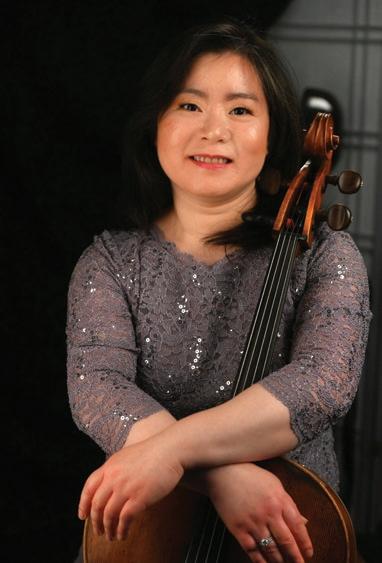
Hai-Ye Ni joined The Philadelphia Orchestra as principal cello at the beginning of the 2006–07 season after having served as associate principal cello of the New York Philharmonic since 1999. She first came into prominence after her critically praised New York debut at Alice Tully Hall in 1991, a result of her winning first prize at the Naumburg International Cello Competition. Other awards include first prize in the 1996
International Paulo Cello Competition in Finland, a 2001 Avery Fisher Career Grant, and second prize at the Rostropovich competition in 1997.
Recent appearances include the Sarasota Music Festival, Chamber Music Dolomiti in Italy, the New England Conservatory, and the Apollo Orchestra in Washington, D.C. She made her solo debut with The Philadelphia Orchestra in 2010. Among the ensembles with which she has appeared as soloist are the Chicago, San Francisco, Vancouver, Shanghai, Singapore, and Finnish Radio symphonies; the Orchestre National de Paris; the Vienna Chamber Orchestra; and the Hong Kong and China philharmonics. Her recital credits include the Kennedy Center for the Performing Arts, the Smithsonian Institute, Weill Hall at Carnegie Hall, and the Wallace Collection in London. She has performed at festivals such as Ravinia, Marlboro, La Jolla SummerFest, Kuhmo (Finland), Spoleto (Italy), Aspen, and the Pacific Music Festival.
Ms. Ni has been featured in Strad magazine, Strings magazine, and on NPR. Her 1998 debut solo CD on the Naxos label was named CD of the week by Classic FM London, and her CD Spirit of Chimes (Delos) is a collaboration with violinist Cho-Liang Lin and pianist Helen Huang of music by Zhou Long. Born in Shanghai, China, Ms. Ni began cello studies with her mother and at the Shanghai Conservatory. She continued her musical education with Irene Sharp at the San Francisco Conservatory, Joel Krosnick at the Juilliard School, and William Pleeth in London.
MARIN ALSOP
Conductor
RANDALL GOOSBY
Violin
SOPRANOS AND ALTOS OF ALBANY PRO MUSICA
JOSÉ DANIEL FLORES-CARABALLO
Opalka Family Artistic Director
CLYNE Masquerade
MENDELSSOHN
Violin Concerto in E minor, Op. 64
I. Allegro molto appassionato—Presto—
II. Andante—
III. Allegretto non troppo—Allegro molto vivace
INTERMISSION
HOLST
The Planets, Op. 32
I. Mars, the Bringer of War II. Venus, the Bringer of Peace III. Mercury, the Winged Messenger
IV. Jupiter, the Bringer of Jollity
V. Saturn, the Bringer of Old Age VI. Uranus, the Magician VII. Neptune, the Mystic THURSDAY,

Please turn off cell phones and disconnect electronic signals on watches or pagers before the start of the performance. This program is approximately 2 hours.

Composed in 2013
ANNA CLYNE
Born in London, March 9, 1980
Now living in New Paltz, New York
While she has built a reputation as an innovative interdisciplinary collaborator, working with filmmakers, visual artists, and choreographers in addition to musicians of various genres, so has the London-born composer Anna Clyne emerged as a veritable force in the orchestral arena. From 2010 to 2014, she served as composerin-residence with the Chicago Symphony. This was followed by composer-in-residence positions with the Orchestre National d’Île de France (2014–16), the Baltimore Symphony (2015–16), and the Berkeley Symphony (2017–19). Prince of Clouds, Clyne’s concerto for two violins, was nominated for the 2015 GRAMMY Award for Best Contemporary Classical Composition.
In 2013 BBC Radio 3 commissioned Clyne to compose a new work for the Last Night of the Proms, the celebratory finale to that renowned London summer festival. The resulting work is Masquerade, an orchestral tour de force as muscular as it is compact. Befitting the occasion, Clyne drew inspiration from the festival’s precursor: mid-18th-century promenade concerts, held in London’s pleasure gardens, at which listeners freely perambulated while taking in the performance. “As is true today,” she notes, “these concerts were a place where people from all walks of life mingled to enjoy a wide array of music. Other forms of entertainment ranged from the sedate to the salacious with acrobatics, exotic street entertainers, dancers, fireworks, and masquerades.” As further homage to her hometown’s storied festival, she dedicated Masquerade “to the Prommers,” as the Proms’ standing-room concertgoers are affectionately called.
“Combined with costumes, masked guises, and elaborate settings,” Clyne explains, “masquerades created an exciting, yet controlled,
sense of occasion and celebration. It is this that I wish to evoke in Masquerade.” The score contains music of blinding vividness throughout: from the hyper-caffeinated introduction—swirling 16th notes in the strings, which propel much of the score’s five breathless minutes, colored in turn by percussion, winds, and brass—to its take-no-prisoners final measure, a climactic fortissississimo played by the full orchestra replete with ecstatic harp glissandos, cymbals, and drums. Along the way, the listener happens upon a series of characterful, ephemeral episodes, not unlike those 18th-century prommers. Clyne’s expressive tempo markings in the score prompt the orchestra’s abrupt turns from one scene to the next: “Powerful and vigorous”; “Stately with undulation”; “Playful and thorny”; and so on.
Masquerade was premiered in London’s Royal Albert Hall on September 7, 2013, by the BBC Symphony Orchestra, conducted by Marin Alsop. The work is centered on two primary melodic ideas. “For the main theme,” Clyne says, “I imagined a chorus welcoming the audience and inviting them into their imaginary world.” This theme (“Soaring with grandeur and undulation”), identifiable by its initial three-note stepwise descent, places that imaginary world somewhere between the fairy realm of Mendelssohn’s A Midsummer Night’s Dream and the high seas conjured by Hans Zimmer’s Pirates of the Caribbean film scores.
The work’s second theme comes from the old English drinking song “The Juice of Barley.” Clyne sources the melody from John Playford’s The English Dancing Master, a 17th-century dancing manual cataloguing music and instructions for more than 100 English country dances. Contained within Clyne’s setting of this jaunty tune (marked “Raucous”) is one of the score’s most magical moments, an ethereal sheen of woodwinds and harp (“Beautiful and tender”). But just as quickly, the music turns raucous again, with more such thrilling whiplash yet in store.
—Patrick Castillo
THURSDAY, AUGUST 7, 7:30PM
FELIX
MENDELSSOHN
Born in Hamburg, February 3, 1809
Died in Leipzig, November 4, 1847
In 1838 Felix Mendelssohn began to be haunted by a yearning melody, at once sinuous and melancholy, that he recognized as the beginning of a violin concerto. As he wrote to a friend in July of that year, this melody “gave him no peace.” Usually a ruminant, even hesitant, composer, Mendelssohn brooded over this elegiac theme in E minor for years. In the meantime, he completed his String Quartet in E minor, Op. 44, No. 2; its overall mood of subdued passion clearly anticipated that of the violin concerto to come. An 1842 commission from England caused him to draft an extended sketch of a piano concerto in the same key with transitions between movements, just as in the violin concerto.
Mendelssohn wrote the Violin Concerto in E minor, Op. 64, for the brilliant violinist Ferdinand David. In February 1836 David became concertmaster of Leipzig’s famed Gewandhaus Orchestra, of which Mendelssohn was music director. The two men were fast friends and they worked closely together as colleagues at the Leipzig Conservatory as well as on the Concerto. Spurred on by David, Mendelssohn turned his full attention to writing the piece in the early months of 1844. Work proceeded so rapidly that the orchestral score was virtually complete by September. Although he is often now thought of as a facile composer whose work came to him effortlessly, Mendelssohn was in fact a compulsive reviser. By the end of the year, Mendelssohn was still fussing over details; the exasperated violinist had to coax the fastidious composer into relinquishing his score. David premiered the Concerto in Leipzig on March 13, 1845, with the Danish composer Niels Gade conducting. It was an immediate and lasting success.
Mendelssohn cast his Violin Concerto in three movements connected by transitions so that each flows effortlessly into the next without interruption. He might have derived this practice from the Konzertstück in F minor for Piano and Orchestra, Op. 79 (1815–21), by Carl Maria
von Weber, in which the major sections succeed each other without a break. Mendelssohn was one of the finest pianists of his era and played Weber’s work often.
After a single rustling measure scored for strings and timpani, the violin enters with the principal theme of the first movement. This haunting beginning owes a debt to Beethoven’s Fourth Piano Concerto, in which the pianist plays the opening theme immediately before the orchestra enters. Mendelssohn deploys this reversal of the traditional roles of soloist and orchestra throughout his Violin Concerto. Like Beethoven, he derived all of the material in his score from these opening measures. In particular, the first notes played by the soloist have a distinctive rhythm, a “long-short” pattern known to musicians as a “dotted rhythm.” This dotted rhythm recurs constantly throughout the piece, binding its materials together in remarkable unity despite a kaleidoscopic variety of moods. After this arresting opening, the first movement proceeds along the lines of a standard sonata form until the cadenza’s unexpected appearance at the end of the development. This daring formal innovation enabled Mendelssohn to weave the cadenza into the tapestry of the score rather than simply allowing it to be a pretext for virtuoso display near the very end of the movement, as was customary during the period. The Concerto’s cadenza therefore functions more like a soliloquy in a drama than a succession of fireworks, the end of which melds seamlessly into the recapitulation, evincing remarkable ingenuity in the service of emotional expression.
After a concise transition that prominently features the bassoon, the wistful second movement gently unfolds a lyrical melody, a veritable “song without words.” During the more agitated middle section, the oscillating figuration of the solo violin recalls the tremulous orchestral figure with which the Concerto began. The next transition alludes to elements of the first movement’s opening theme, thus moving elegantly into the finale. The last movement is a combination of elfin scherzo and exultant finale. Near the end of this scintillating rondo, an exultant lyrical outburst precedes the joyous final measures.
—Byron Adams
Composed from 1914 to 1916
GUSTAV HOLST
Born in Cheltenham, England, September 21, 1874
Died in London, May 25, 1934
During the first half of the 20th century, Great Britain was blessed with at least five marvelous composers, of whom Edward Elgar and Ralph Vaughan Williams have become a regular part of our concert life—albeit through a mere handful of works—and Frederick Delius and Arnold Bax are perhaps not far behind in making inroads here. But no British master is known through fewer works than Gustav Holst, who despite a large and excellent output remains for most listeners the composer of a single composition: his popular and influential The Planets, which continues to make its mark today in everything from television to Star Wars
Born in Cheltenham, England, of Swedish, German, and English parentage, Gustavus “von Holst” received his schooling at the Royal College of Music, where he studied harmony and counterpoint with Charles Villiers Stanford. A severe case of neuritis forced him to give up his ambition of becoming a pianist, and he subsequently took an interest in composition. Later he studied trombone and played in the Carl Rosa Opera Company, which proved to be extremely valuable experience for his experiments in orchestral composition. Some have cited his travels in the Far East as being partly responsible for Holst’s streak of mysticism, which colors a number of his works. He was an impressive scholar of languages and learned enough Sanskrit to set parts of the Rig Veda to music.
In any case, it appears that it was partly the astrological significance of heavenly bodies that first sparked the composer’s idea to forge a set of orchestral tone poems to reflect the character of each planet. He began the cycle that became The Planets in 1914, just before the first shots of World War I were sounding in Sarajevo.
The hardships of the war years slowed the work on this unprecedented composition—which took two years to finish—and appear to have influenced the outcome as well. The Planets was completed in 1916 and was first presented in a private performance in London on September 29, 1918, under Adrian Boult’s baton. The public premiere was not until after the war, on November 15, 1920, with Albert Coates conducting.
There are seven movements, each with a distinctive musical character that seems to relate both to the god for which the planet is named and to the quality, mood, or activity that this god has come to represent. (Earth is not represented in The Planets, and although Pluto’s existence had been “theorized” as early as 1919, it wasn’t actually discovered until 1930.) To the very end Holst insisted that his goal was to represent “the character... the astrological significance of the planets,” and that the pieces had no further extramusical meaning. “There is no program music in them,” he said, “neither have they any connection with the deities of classical mythology bearing the same names. If any guide to the music is required, the subtitle to each piece will be found sufficient, especially if it be used in a broad sense.”
But it’s more fun, perhaps, to listen for programmatic ties. “Mars, the Bringer of War,” for example, might well be about the god Mars—but since this god represents war anyway, there is really no way to separate the war-god Mars from the overtly “martial” character that the planet has come to embody. In fact, Holst himself said, on another occasion, that he was seeking here to express “the stupidity of war.”
In grave contrast, “Venus, the Bringer of Peace” is a lyric love song, not unlike the goddess for whom this most tranquil of planets was named. “Mercury, the Winged Messenger” is a fleet scherzo that conveys the volatile nature of both god and planet. “Jupiter, the Bringer of Jollity” is less about the imposing nature of this god than about what Holst called the spirit of “one of those jolly fat people who enjoy life.” “Saturn, the Bringer of Old Age” is a ghostly funeralmarch that reminds us of the forceful vision of old age and destiny. “Uranus, the Magician,” forceful but mystical, stands as one of the most skillful uses of the modern orchestra of the era.
“Neptune, the Mystic” brings the work to a puzzling yet deliciously lyrical close. Some have claimed to hear the influence of Debussian evocations of “Neptune’s realm”—such as the “Sirens” movement from Nocturnes (which also features a wordless women’s choir), and of course La Mer, a work whose influence could hardly be avoided in the first half of this century.
—Paul J. Horsley
Program notes © 2025. All rights reserved. Program notes may not be reprinted without written permission from The Philadelphia Orchestra Association and/or Patrick Castillo.
See Marin Alsop’s biography on page 37 and was named the Cincinnati Symphony’s 2024–25 MAC Music Innovator, a seasonlong residency in which he curated and lead community engagement activities with young musicians and at historic cultural sites. He was also First Prize Winner in the 2018 Young Concert Artists International Auditions.

“For me, personally, music has been a way to inspire others.” American violinist Randall Goosby’s own words sum up perfectly his commitment to being an artist who makes a difference. Signed exclusively to Decca Classics in 2020 at age 24, he is acclaimed for the sensitivity and intensity of his musicianship alongside his determination to make music more inclusive and accessible, as well as bringing the music of under-represented composers to light. He was recently appointed to the Pre-College faculty of the Juilliard School’s Preparatory Division beginning in fall 2025. Highlights of Mr. Goosby’s 2025–26 season include debuts with the Atlanta, KBS, and San Diego symphonies and the Orchestre National de France, and returns to the San Francisco, Pittsburgh, and New Jersey symphonies. He appears in recital across North America and Europe with pianist Zhu Wang as well as with the Renaissance Quartet and joins clarinetist Anthony McGill and pianist Joshua Mhoon in a program presented by the Philadelphia Chamber Music Society. He made his Philadelphia Orchestra debut in 2022.
As of 2024–25 Mr. Goosby is a member of the Konzerthaus Dortmund’s series “Junge Wilde.” He was the inaugural recipient of the 2024 Harmony for Change Award presented by Midori & Friends
A former student of Itzhak Perlman and Catherine Cho, Mr. Goosby received his bachelor’s, master’s, and artist diploma degrees from the Juilliard School. He plays the Antonio Stradivarius, Cremona, “ex-Strauss,” 1708, on generous loan from Samsung Foundation of Culture. For more information visit www. randallgoosby.com. Management for Mr. Goosby: Primo Artists; www.primoartists.com.
Albany Pro Musica (APM) is the preeminent choral ensemble in New York’s vibrant Capital Region and is renowned for its exceptional technical competency, exquisite artistry, and purposeful programming that is relevant and meaningful in today’s society. Critically acclaimed for its performances of intimate a cappella pieces and large-scale choral works alike, APM offers four series concerts each season plus numerous special performances with distinguished local, national, and international partners, with a deliberately curated repertoire that includes classical masterpieces, new compositions, and popular selections from the worlds of Broadway, traditional, folk music, and more.
APM, which made its Philadelphia Orchestra debut in 2015, is dedicated to inspiring new generations of singers through numerous educational programs, including an annual High School Choral Festival for regional students offered in partnership with the University at Albany (SUNY), highly selective music internships and apprenticeships, engagement opportunities through a composerin-residence program, and the week-long, biennial Pro Musica International Choral Festival, which brings students from across the United States and Canada to study and perform with distinguished faculty and world-class musicians.
APM has been led by Opalka Family Artistic Director José Daniel Flores-Caraballo since 2014. He also serves as conductor-in-residence at the University at Albany and chorus director of the Vermont Symphony Orchestra Chorus. A native of Puerto Rico, he served as dean of academic affairs at the Puerto Rico Conservatory of Music
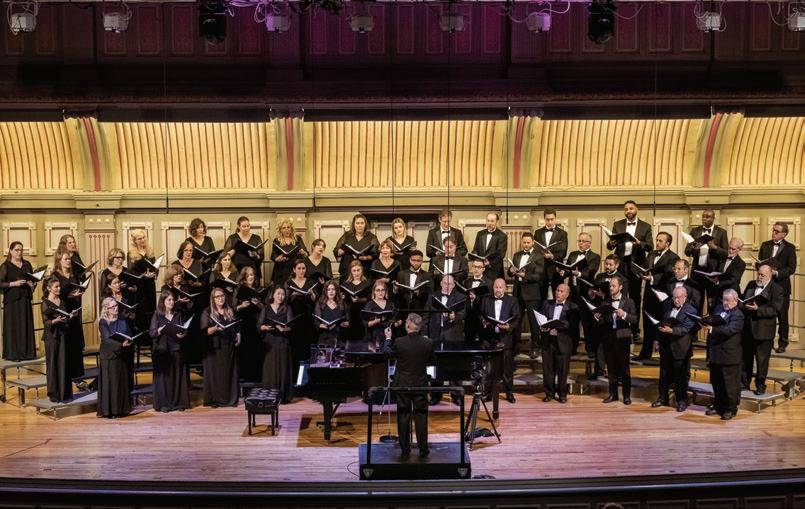
and has led prize-winning choral programs in Puerto Rico and across the United States. He holds a doctorate in sacred music with an emphasis on choral and instrumental conducting from the Graduate Theological Foundation, a master’s in choral conducting and organ from the University of Illinois, and a bachelor’s in music education and instrumental conducting from the Puerto Rico Conservatory.
Sopranos
Maria Bedo-Calhoun
Martha J. Bond
Shana Clark
Emma Commisso
Marie Cox
Valerie Donovan
Brielle Farmer
Kathryn Farris
Jaclyn Grimaldi
Lauren Jurczynski
Jordan McCann
Katie McNally
Darcy Crum Meadows
Rebecca Monaghan
Xinyi Nam
Emily Peterson
Sarah Ploof
Stephanie Saint Germain
Sandra Schujman
Teresa Maria Solé
Emily Sturman
Caroline Stuto
Andrea Wanner
Julie Weston
Iris Whalen
Altos
Hana Askren
Laura Bongiovanni
Marie Bosman
Francesca Caccamo
Abigail Cowan-Kuzia
Lenna Darbin
Elizabeth Helmer
Lexi Hoff
Susan Moyle Lynch
Corinne McLeod
Allyson Romero
Ashleigh Smith
Irina Tikhonenko
Lisa Wloch
MARIN ALSOP
Conductor
CLAYTON STEPHENSON
Piano
GERSHWIN
Cuban Overture
BERNSTEIN/orch. Ramin & Kostal
Symphonic Dances from West Side Story
INTERMISSION
GERSHWIN
Piano Concerto in F
I. Allegro
II. Adagio—Andante con moto
III. Allegro agitato

Please turn off cell phones and disconnect electronic signals on watches or pagers before the start of the performance. This program is approximately 1 hour and 50 minutes.

There are three orchestral versions of the music from West Side Story. For the original Broadway FRIDAY, AUGUST 8, 7:30PM
Composed in 1932
GEORGE GERSHWIN
Born in Brooklyn, September 26, 1898
Died in Los Angeles, July 11, 1937
The great American composer George Gershwin sought acceptance not only as a popular songwriter but also by writing serious concertos, ballets, and symphonic compositions. The Overture on tonight’s concert reflects in miniature these dual concerns, as it contains all the dash of the Cuban rumba and all the contrapuntal intricacy of his highbrow studies.
Gershwin composed the Cuban Overture in July 1932 after a musically inspiring Cuban holiday. As he explained to a friend: “I spent two hysterical weeks in Havana where no sleep was had but the quantity and the quality of fun made up for that.” He was fascinated by the street musicians, small dance orchestras, the intricate rhythms he heard, and by the instruments.
Just a week after Gershwin completed the Overture it was premiered under the title Rumba. The concert was on August 16, 1932, at Lewisohn Stadium, located on the campus of the City College of New York in Harlem. The venue was the summer home of the New York Philharmonic. It became an important site for Gershwin as a composer of orchestral works and also as a performer, both conductor and pianist.
The work is a condensed, delightful expression of the tension between Old World values and American razzmatazz. Gershwin said it was “a symphonic overture which embodies the essence of Cuban dance.” The work features a prominent “rhythm section” that includes Cuban sticks, bongos, gourd, and maracas. The Caribbean flavor also comes from allusions to various Cuban popular pieces that Gershwin had been exposed to on his trip. The apparent simplicity of the dance rhythms is offset by the asymmetry of five-bar phrases and inner voices built from inversions, that is upside down versions of melodies.
The piece unfolds in an ABA form with fastpaced framing sections. After a brief introduction and vamp, the first part has two main themes, and contrasts with a plaintive middle section introduced by an exotic solo clarinet cadenza. This slower part features canons—sophisticated imitative melodies. The opening section returns
with a variant of the main rumba to usher in a raucous conclusion with percussion ablaze.
—Paul J. Horsley/Christopher H. Gibbs
SYMPHONIC DANCES FROM WEST SIDE STORY (orchestrated by Sid Ramin and Irwin Kostal)
Composed in 1957
LEONARD BERNSTEIN
Born in Lawrence, Massachusetts, August 25, 1918
Died in New York City, October 14, 1990
As early as 1949, Leonard Bernstein and two of his friends, choreographer Jerome Robbins and librettist Arthur Laurents, were toying with the idea of a Broadway musical that adapted Shakespeare’s Romeo and Juliet into a modern New York setting. But deciding exactly which social struggle to portray in this adaptation proved to be difficult, and the project languished for several years. When the brilliant young lyricist Stephen Sondheim joined the team, the original creators hit on the idea that rival white and Hispanic street gangs on the Upper West Side of New York City would be the basis of the story’s conflict, and production moved ahead quickly.
West Side Story opened on Broadway in the fall of 1957. It was a moderate popular success with audiences, but the critical response was mixed. Although in many ways it was a traditional Broadway musical, West Side Story included two important innovations that made it stand out: It was unusually violent and tragic (with onstage deaths at the end of both acts) and it incorporated dance into the musical to a degree never seen on the Broadway stage before. The composer himself said, “So much was conveyed in music, including an enormous reliance upon dance to tell plot—not just songs stuck in a book.”
Instead of handing off the dance numbers to an assistant, Bernstein composed them himself. He had already written two ballet scores as well as two successful Broadway musicals (On the Town and Wonderful Town). Not only could he handle standard song forms and dance music, he knew how to orchestrate, how to conceive larger musical structures as part of a dramatic narrative, and how to write symphonically for the stage.
stage show, Bernstein closely supervised the orchestrations of Sid Ramin and Irwin Kostal, scored for a 30-piece pit ensemble. In 1961 Ramin and Kostal re-orchestrated the score for the film version, using a much larger orchestra. Though Bernstein wasn’t entirely pleased with this richer orchestration, Ramin and Kostal both won a GRAMMY Award and an Oscar for their work on the soundtrack. As they were wrapping up the orchestrations for the film version, a benefit concert was planned to honor Bernstein, who had just extended his contract as music director of the New York Philharmonic. With the popularity of West Side Story reaching a peak, and a movie version about to be released, the music simply had to be included on the program. Ramin and Kostal chose selections from the orchestral film score, and Bernstein re-ordered them into a new sequence based not on their order in the show but according to their musical relationships. As the Symphonic Dances from West Side Story, these selections were premiered on February 13, 1961, by the New York Philharmonic, with Lukas Foss conducting.
The piece opens with a nervous and dramatic Prologue that depicts mounting tensions between the rival Jets and Sharks. This leads without a break into the fantasy dream sequence (“Somewhere”) in which the gangs peacefully co-exist in a friendly and serene world. This fantasy continues in the Coplandesque Scherzo, only to be interrupted by the music of the high school Mambo. It is at this dance that Tony and Maria meet, dancing together (Cha-Cha) and then speaking to each other for the first time (Meeting Scene). In the “Cool” fugue, the Jets try to alleviate some of the rising unease, but the agitation spills over into the Rumble, where the respective leaders of each gang are killed. The hymn-like Finale, which alludes to the “Somewhere” theme, characterizes the story’s central ideas of tragedy and love.
—Luke Howard
Composed in 1925
GEORGE GERSHWIN
George Gershwin’s career is an American success story, tempered (as with Mozart and Schubert) by death in his 30s cutting it short. Born to RussianJewish immigrants in Brooklyn, he grew up in a poor household. As was the case for his slightly
younger Brooklyn contemporary Aaron Copland, music offered opportunities. But while Copland went to study abroad as an American in Paris, Gershwin dropped out of high school and started working his way up as a “song-plugger,” playing Tin Pan Alley tunes for perspective customers at a music store. Soon he was writing his own songs (his first big hit was “Swanee” in 1919) and enjoying success on Broadway.
The signal event of his early career came at age 25, on Tuesday afternoon, February 12, 1924, at a concert in New York’s Aeolian Hall given by Paul Whiteman and his Palais Royal Orchestra. Gershwin played his Rhapsody in Blue, composed in the space of just a few weeks and then quickly orchestrated by Whiteman’s favored arranger, Ferde Grofé. The Rhapsody was an enormous success. The following year Gershwin became the first composer featured on the cover of Time magazine. His fame and wealth continued to grow.
Immediately after attending the Rhapsody premiere, Walter Damrosch, conductor of the New York Symphony Orchestra (later the New York Philharmonic), contacted Gershwin with a commission to write and perform a larger-form piano concerto. While the Rhapsody had paved the way for a new genre of a “jazz concerto,” Gershwin longed to write a big “serious” score that he could call his own. Since the Rhapsody had been orchestrated by Grofé, his sense of “ownership” was less than complete.
Gershwin was overwhelmed at the time with theatrical projects but started sketching the new work in May 1925. Most of the composition took place that summer at the Chautauqua Institution, the celebrated educational, religious, and cultural oasis in Western New York. “Every day between 2:00 and 6:00 and evenings between 8:00 and 10:00 you will find me diligently writing notes,” Gershwin wrote to his sweetheart, Pauline Heifetz, sister of violinist Jascha, in July, “playing piano or praying (you’ve got to pray in Chautauqua) to the God of Melody to please be kind to me and send me some hair-raising ‘blues’ for my second movement.”
Gershwin completed the Concerto’s orchestration by mid-November and, at his own expense, arranged for a reading with 55 musicians at the Globe Theater with William Daly conducting. Gershwin and Damrosch gave the premiere at Carnegie Hall on December 3. The work triumphed, with the New Yorker critic stating that
“Gershwin’s piano concerto is about the most important new work that has been aired in this hamlet of ours in many somethings, and when we say ‘important’ we’re not using a nicenellie for ‘dull.’” Gershwin went on to play the piece many times, including with The Philadelphia Orchestra under Alexander Smallens in January 1936.
Gershwin wrote his own program note for the three-movement Concerto, short and to the point:
The first movement employs the Charleston rhythm. It is quick and pulsating, representing the young, enthusiastic spirit of American life. It begins with a rhythmic motif given out by the kettledrums, supported by other percussion instruments, and with a Charleston motif. … The principal theme is announced by the bassoon. Later, a second theme is introduced by the piano.
The second movement has a poetic nocturnal atmosphere which has come to be referred to as the American blues, but in a purer form than in which they are usually treated. The final movement reverts to the style of the first. It is an orgy of rhythms, starting violently and keeping to the same pace throughout.
—Paul J. Horsley/Christopher H. Gibbs
Program notes © 2025. All rights reserved. Program notes may not be reprinted without written permission from The Philadelphia Orchestra Association.
See Marin Alsop’s biography on page 37
American pianist Clayton Stephenson, who is making his Philadelphia Orchestra debut, grew up in New York City and started piano lessons at age seven. The next year he was accepted into the Juilliard Outreach Music Advancement Program for underprivileged children, where he attended numerous student recitals and fell in love with music. At the age of 10 he advanced to Juilliard’s elite Pre-College program with the help of his teacher, Beth Nam. At Juilliard he studied with Matti Raekallio, Hung-Kuang Chen, and Ernest Barretta. Mr. Stephenson practiced on a synthesizer at home until he found an old upright piano on the street that an elementary school had thrown away; that would

become his practice piano for the next six years, until the Lang Lang Foundation donated a new piano to him when he was 17.
Recent and upcoming highlights include appearances with the Calgary Philharmonic, the Chicago Sinfonietta, and the Fort Worth, Louisville, Lansing, and North Carolina symphonies, as well as recitals at the Phillips Collection Concert Series in Washington, D.C., the Foundation Louis Vuitton Auditorium in Paris, the Kissinger Sommer festival and Beethovenfest in Germany, the Colour of Music Festival, the Ravinia Festival, and Weill Recital Hall at Carnegie Hall.
Mr. Stephenson now studies in the HarvardNew England Conservatory (NEC) Dual-Degree Program, pursuing a bachelor’s degree in economics at Harvard and a master’s degree in piano performance at NEC with Wha Kyung Byun. In addition to being the first Black finalist at the Van Cliburn International Piano Competition in 2022, he was named a 2022 Gilmore Young Artist, a 2017 U.S. Presidential Scholar in the Arts, and a Young Scholar of the Lang Lang International Music Foundation. He also received a jury discretionary award at the 2015 Cliburn International Junior Piano Competition and Festival.
ROSS
JAMIE COLLINS Conductor
LAUFEY
Vocalist / Multi-Instrumentalist / Composer
Tonight’s concert will be announced from the stage.


In the 2024–25 season, Finnish-British conductor Ross Jamie Collins returns to the Iceland Symphony for several engagements and makes debuts with the Boston, Norrkoping, Evergreen (Taipei), and Tokyo symphonies and the Helsinki Philharmonic. In addition to tonight’s performance, he conducts singer-songwriter Laufey’s A Night at the Symphony US tour with the Cleveland Orchestra and the Virginia and Chautauqua symphonies. In 2023–24 he was a Dudamel Fellow with the Los Angeles Philharmonic and conductor-in-residence with the Iceland Symphony. In summer 2024 he was selected as one of two conducting fellows at the Tanglewood Music Center. Previous highlights include debuts with the Philharmonia Orchestra and the San Francisco Symphony’s SoundBox series, a return to conduct the Turku Philharmonic and the Colburn Conservatory Orchestra, as well as assisting EsaPekka Salonen on tour with the San Francisco Symphony. He was a member of the conducting staff of the San Francisco Symphony and part of the Philharmonia’s Emerging Artist program. SATURDAY,

Mr. Collins was part of the inaugural class of Salonen Fellows in the Negaunee Conducting Program at the Colburn Conservatory. Before moving to Los Angeles in 2019 to study with Mr. Salonen, he studied with Jorma Panula at the Panula Academy in Finland and was a laureate of the VII International Jorma Panula Conducting Competition. Supported by a scholarship from the Finnish Cultural Foundation, Mr. Collins has participated in numerous international conducting master classes and has worked closely alongside Andrew Davis, Jukka-Pekka Saraste, Edo de Waart, James Conlon, Ludovic Morlot, Rossen Milanov, Peter Oundjian, Peter Sellars, and Yuja Wang.
A cellist, pianist, and baritone, Mr. Collins founded his own orchestra, Symphony Orchestra ROSSO, in 2017 and conducted his first full symphonic concert at age 15. Tonight’s performance marks his Philadelphia Orchestra debut.
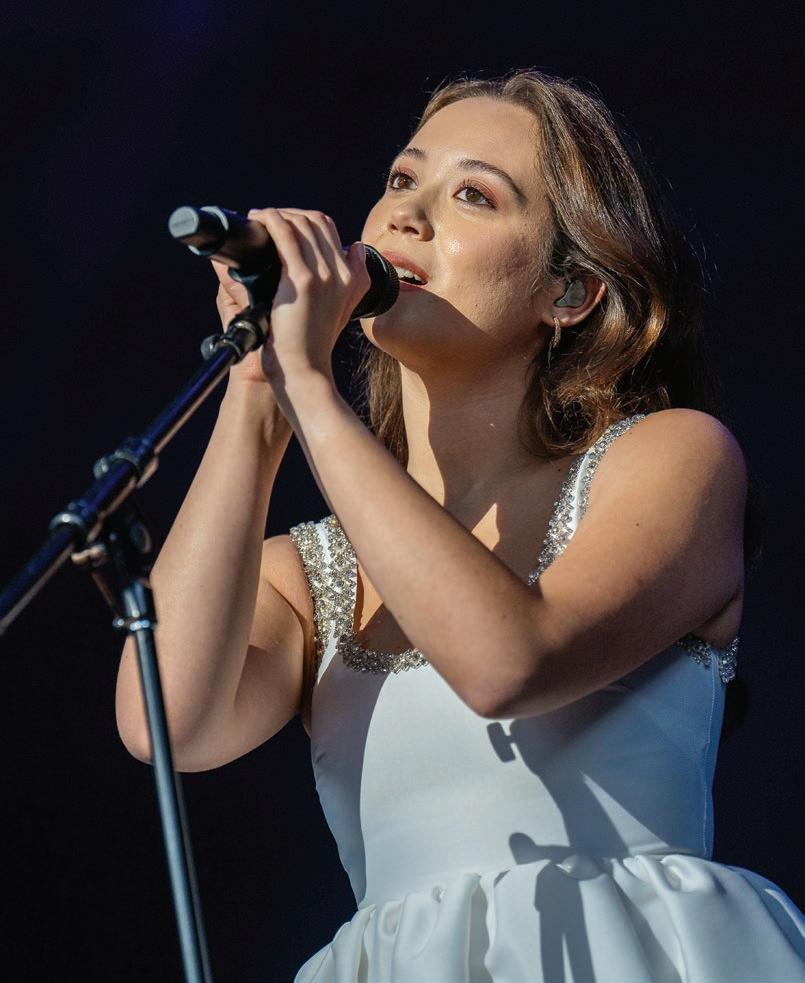
“As a musician, my goal is to bring jazz and classical music to my generation through a more accessible road,” declares the composer, singer, producer, and multi-instrumentalist Laufey (pronounced lay-vay).
The LA-based, Icelandic-Chinese artist’s trailblazing approach paid off, as she is now the top streaming jazz artist in the world with an audience of over 15 million across all socials.
Inspired by jazz greats and classical masters while possessing a point of view that could only be
conveyed by a 21st-century twenty-something, Laufey’s GRAMMY-winning second album, Bewitched, is a reflection on “the magic and luster unique to youthful love.” Her self-assured musicianship and deeply felt lyrics take the idea of “classic” music and humanize it, giving her music a relatability to the next generation. “There are very few examples of artists who are on stage with an orchestra one day and making TikToks the next,” she notes dryly. Laufey’s straddling of those two worlds has put her in a singular place across music.
YANNICK NÉZET-SÉGUIN
Conductor
BEATRICE RANA
Piano
STRAVINSKY
Suite from The Firebird (1919 version)
I. Introduction—The Firebird and its Dance
II. The Princesses’ Round Dance
III. Infernal Dance of King Kashcheï—
IV. Berceuse—
V. Finale
RACHMANINOFF
Rhapsody on a Theme of Paganini, Op. 43, for piano and orchestra
INTERMISSION
STILL
Symphony No. 2 (“Song of a New Race”)
I. Slow
II. Slowly and deeply expressive
III. Moderately fast
IV. Moderately slow—Faster

RANA
CLASSICS
Please turn off cell phones and disconnect electronic signals on watches or pagers before the start of the performance. This program is approximately 2 hours.

Composed from 1909 to 1910
Born in Lomonosov, Russia, June 17, 1882
Died in New York City, April 6, 1971
On May 19, 1909, the impresario Sergei Diaghilev presented the Parisian debut of his troupe, the astonishing Ballets Russes. This revelatory first night featured both the brilliant dancer Vaslav Nijinsky and a stunning new ballet entitled La Pavilion d’Armide with music by Nikolai Tcherepnin and lavish decor by Alexandre Benois. The discriminating aesthete and diarist Count Harry Kessler wrote effusively to the poet Hugo von Hofmannsthal, “All in all, this Russian ballet is one of the most remarkable and significant artistic manifestations of our time.” The music was not the only aspect of the Ballets Russes to which Kessler reacted, however: The colorful sets and costumes designed by Léon Bakst and the revolutionary choreography by Mikhail Fokine also enthralled him.
The success of that first season in Paris presented Diaghilev with a pressing problem: How was he to exceed this triumph for the 1910 season? One way was to commission a new ballet based on Russian folktales, Zhar-ptitsa (The Firebird). Diaghilev had his subject; his choreographer, Fokine; his set designer, Alexander Golovin; and his costume designer, Bakst. What he needed, urgently, was a composer.
Diaghilev’s first choice was Tcherepnin, but he withdrew from the project early on. His second choice was Anatoli Liadov, a student of RimskyKorsakov who wrote enchanting tone poems on Russian subjects. Although later accounts claimed that Liadov was feckless about composing The Firebird, there is no documentary evidence that he agreed to write it in the first place. Running out of time, Diaghilev convinced one of RimskyKorsakov’s last pupils, the young Igor Stravinsky, to accept the commission. Stravinsky had a very short time to compose an extended and complex score. He began work in November 1909 and finished the following May. He worked closely with Fokine
as he composed, although he did overrule the choreographer’s tasteless demand to have a suite of Russian dances conclude the ballet.
After stormy rehearsals, The Firebird proved an immense success when it was premiered in Paris on June 25, 1910; it is not an exaggeration to say that it made Stravinsky famous overnight. While the sets, costumes, and choreography received praise, the music elicited an ecstatic response from critics, colleagues, and audiences alike. Capitalizing on this newfound fame, Stravinsky derived three suites from The Firebird: a short one in 1911, a more extended one in 1919 that incorporated revisions to the orchestration, and a final version from 1945. Of these three, the 1919 one is the most often performed.
For the 1919 Firebird Suite, Stravinsky excerpted six sections of his ballet score: the Introduction that leads directly into The Firebird and its Dance, The Princesses’ Round Dance, and the Infernal Dance of King Kashcheï that leads directly into the Berceuse—a lullaby—and then without pause to the Finale. By so doing, he maintains the outline of the plot, which was drawn from a collection of folktales collected by Alexander Afanasyev.
The action of The Firebird is fantastical but straightforward. While out hunting, Tsarevich Ivan strays into the enchanted realm of Kashcheï. He captures the Firebird, who begs for her freedom. Ivan lets her go and in return gives him one of her feathers through which he can summon her aid in times of danger. Ivan happens upon a group of princesses, who have been taken prisoner by Kashcheï, and falls in love with the fairest of them. Confronted by Kashcheï himself, Ivan remembers the feather and waves it to summon the Firebird. She makes Kashcheï’s minions dance an Infernal Dance and during the following Berceuse, he and his servants fall into a deep sleep. Ivan smashes the egg that holds Kashcheï’s immortality, thus destroying him. The Finale, which begins with a noble horn solo, reveals Ivan and his bride sitting in majesty on glittering thrones as the orchestra evokes the tintinnabulation of Russian church bells.
—Byron Adams
AUGUST 13, 7:30PM
Composed in 1934
Born in Semyonovo, Russia, April 1, 1873
Died in Beverly Hills, March 28, 1943
Sergei Rachmaninoff’s five works for piano and orchestra span most of his career and are tied in intimate ways to The Philadelphia Orchestra, a long partnership immortalized on magnificent recordings featuring the composer as soloist. The four concertos hold somewhat unequal positions in the repertoire. On opposite ends are the First Concerto, which Rachmaninoff wrote as a teenager and later extensively revised, and his Fourth Concerto, which the Philadelphians premiered in 1927. The two middle concertos proved the most popular. The encouraging success of the Second in 1901 came at a transformative juncture in Rachmaninoff’s career, following a nearly three-year compositional paralysis after the failure of his First Symphony. The Third Concerto proved another triumph in 1909 when it premiered in New York. Rachmaninoff composed his fifth and final piece for piano and orchestra, the Rhapsody on a Theme of Paganini, for The Philadelphia Orchestra in 1934.
Rachmaninoff wrote the Rhapsody that summer at his Swiss villa near Lucerne. At the time he described it as “not a ‘concerto,’ and its name is ‘Symphonic Variations on a Theme of Paganini,’” which he then changed to “Fantasy.” But ultimately it was as a Rhapsody that Leopold Stokowski led the Philadelphians in the world premiere in Baltimore on November 7, 1934, with the composer as soloist. The forces recorded the piece on Christmas Eve. Rachmaninoff went on to write his final two orchestral works for the Orchestra as well: the Symphony No. 3 in 1936 and the magisterial Symphonic Dances in 1940.
Rachmaninoff had earlier been attracted to variation form and wrote substantial pieces based on themes by Chopin and Corelli. For the Rhapsody he chose a simple but ingenious tune that has also seduced many other composers: the Caprice No. 24 in A minor by Niccolò Paganini (1782–1840). The great Italian violinist, the first instrumental “rock star” of the 19th century, wrote a dazzling collection of 24 caprices for solo violin that explored everything that the instrument, and the instrumentalist, could do. In 1820 Paganini published the pieces, on which he had worked for nearly two decades, as his
Op. 1. Franz Liszt transcribed some of them for piano, as did Robert Schumann. More surprising and impressive are Johannes Brahms’s two sets of variations on the A-minor Caprice, Op. 35. Prominent 20th-century composers after Rachmaninoff, including Witold Lutosławski, Alfred Schnittke, and George Rochberg, took Modernist looks at the alluring theme.
The original A-minor Caprice is itself a miniature set of variations. When Liszt and Schumann made their keyboard transcriptions, they closely followed Paganini—their challenge was finding effective ways to transfer violin virtuosity to the piano. Rachmaninoff, like Brahms, took a different approach by using the melody for an independent sequence of variations. Almost by definition variation sets begin with a statement of the principal theme in the simplest possible way so that listeners can grasp the basis for what follows. After a very brief introduction for the full orchestra, Rachmaninoff begins unusually with a pointillist variation before the strings actually state the theme with unobtrusive piano support.
Rachmaninoff’s Rhapsody consists of 24 variations. The first six are dispatched at a quick pace until things slow down with No. 7, in which the rich piano chords introduce another theme that plays a prominent role in what follows. This is the well-known plainchant “Dies irae” from the Requiem Mass for the Dead. Rachmaninoff, who alluded to or quoted the medieval melody in other compositions, associated this motto not only with death but also with the violin’s longstanding connection to the devil.
Over the course of the 24 variations Rachmaninoff devises many ingenious transformations of the theme, the most famous being the beautiful 18th variation, which offers a lyrical inversion (upside-down) of the tune as the emotional climax of the Rhapsody.
—Christopher H. Gibbs
SYMPHONY NO. 2 (“SONG OF A NEW
Composed from 1936 to 1937
WILLIAM GRANT STILL
Born in Woodville, Mississippi, May 11, 1895
Died in Los Angeles, December 3, 1978
In the 1930s three Black composers came to prominence with remarkable symphonies. William Grant Still’s Afro-American Symphony premiered
in 1931 with Howard Hanson conducting the Rochester Philharmonic, the first time a leading American orchestra had programmed a symphony by a Black composer. Six years later Leopold Stokowski and The Philadelphia Orchestra unveiled Still’s Second Symphony, subtitled “Song of a New Race.” In 1933 Friedrich Stock and the Chicago Symphony presented Florence Price’s Symphony No. 1 and the next year Stokowski and the Philadelphians premiered William Dawson’s Negro Folk Symphony.
Still’s essays in the genre have remained more in the public eye as he long enjoyed the reputation as “the Dean” of Black composers. In 1974 Newsweek wrote of “78-year-old William Grant Still, dean of black American composers, originally a jazz man, whose gay Afro-American Symphony reflects not only Still’s blackness but his ambivalent years as a commercial arranger (he put together Frenesi for Artie Shaw) and as a student of Edgard Varèse.”
The Newsweek article points to Still’s fruitfully eclectic origins: youthful jazz experiences, being a master arranger, and receiving a rigorous classical training, including with the notorious “ultramodernist” Varèse. Still was born in Mississippi and after his father’s early death moved with his mother to Little Rock, Arkansas, where he sang in a church choir and began violin lessons. He went on to learn many instruments and at age 16 started premedical studies at Wilberforce University in Ohio. By 1916, age 21, he was working with W.C. Handy and publishing his first arrangement. He went on to attend Oberlin College, studied with the prominent American composer George Whitefield Chadwick in Boston, and then spent two years working with Varèse. Still performed with many leading jazz musicians and became ever more in demand as an arranger, worked on Broadway, in radio and television, and eventually moved to Hollywood where he briefly got involved with film. He decided to stay in California in 1934, the year he won a Guggenheim Foundation grant and began writing the first of his eight operas. He was increasingly drawn to classical genres, composing ballets, operas, symphonies, tone poems, and a multitude of other pieces.
Still wrote his ground-breaking and widely performed Afro-American Symphony at age 36 and we hear its sequel on this concert, the Symphony No. 2. Stokowski, who was an ardent supporter of Still’s music, apparently suggested the subtitle “Song of a New Race.” As Still
explained in a program note for the occasion: “the Symphony is related to my Afro-American Symphony (composed in 1930), being, in fact, a sort of extension or evolution of the latter. This relationship is implied musically through the affinity of the principal theme of the first movement of the Symphony in G Minor [“Song of a New Race”] to the principal theme of the fourth, or last, movement of the Afro-American.”
Beyond the musical connection there is a narrative link as well, a continuation of the story of African Americans: “the purpose of the Symphony in G Minor is to point musically to changes wrought in a people through the progressive and transmuting spirit of America. I prefer to think of it as an abstract piece of music, but, for the benefit of those who like interpretations of their music, I have written the following notes”:
The Afro-American Symphony represented the Negro of days not far removed from the Civil War. The Symphony in G Minor represents the American colored man of today, in so many instances a totally new individual produced through the fusion of White, Indian and Negro bloods.
The four movements in the Afro-American Symphony were subtitled Longing, Sorrow, Humor (expressed through religious fervor) and Aspiration. In the Symphony in G Minor, longing has progressed beyond a passive state and has been converted into active effort; sorrow has given way to a more philosophic attitude in which the individual has ceased pitying himself, knowing that he can advance only through a desire for spiritual growth and by nobility of purpose; religious fervor and the rough humor of the folk have been replaced by a more mundane form of emotional release that is more closely allied to that of other peoples; and aspiration is now tempered with the desire to give to humanity the best that their African Heritage has given them.
—Christopher H. Gibbs
Program notes © 2025. All rights reserved. Program notes may not be reprinted without written permission from The Philadelphia Orchestra Association. WEDNESDAY, AUGUST 13,

Yannick Nézet-Séguin is currently in his 13th season with The Philadelphia Orchestra, serving as music and artistic director; he holds the Walter and Leonore Annenberg Chair. Additionally, he became the third music director of New York’s Metropolitan Opera in 2018. An inspired leader, Yannick is both an evolutionary and a revolutionary, developing the mighty “Philadelphia Sound” in new ways. His collaborative style, deeply rooted musical curiosity, and boundless enthusiasm have been heralded by critics and audiences alike. Yannick has established himself as a musical leader of the highest caliber and one of the most thrilling and sought-after talents of his generation. He has
been artistic director and principal conductor of Montreal’s Orchestre Métropolitain since 2000, and in 2017 he became an honorary member of the Chamber Orchestra of Europe. He was music director of the Rotterdam Philharmonic from 2008 to 2018.
Yannick is deeply committed to expanding the repertoire by embracing a diverse group of today’s composers and by performing the music of underappreciated composers of the past. In 2018 he signed an exclusive recording contract with Deutsche Grammophon. Under his leadership The Philadelphia Orchestra returned to recording with 14 releases on that label,

including Florence Price Symphonies Nos. 1 & 3, which won a GRAMMY® Award for Best Orchestral Performance in 2022.
A native of Montreal, Yannick studied piano, conducting, composition, and chamber music at Montreal’s Conservatory of Music and continued his studies with renowned conductor Carlo Maria Giulini; he also studied choral conducting with Joseph Flummerfelt at Westminster Choir College. Among Yannick’s honors are an appointment as Companion of the Order of Canada; an Officer of the Order of Quebec; an Officer of the Order of Montreal; an Officier de l’Ordre des Arts et des Lettres; Musical America’s 2016 Artist of the Year; and honorary doctorates from, among others, the Curtis Institute of Music, McGill University, the University of Montreal, the University of Pennsylvania, and Drexel University.
Beatrice Rana performs at the world’s most esteemed concert halls and festivals. She has appeared with such ensembles as the Royal Concertgebouw and Cleveland orchestras; the Berlin, Munich, Los Angeles, and Seoul philharmonics; the London, Vienna, Chicago, Boston, San Francisco, and NHK symphonies; the Chamber Orchestra of Europe; and the Orchestra dell’ Accademia Nazionale di Santa Cecilia. She made her Philadelphia Orchestra debut in 2015 in Saratoga. In the 2024–25 season, she was artist in residence at Paris’s Radio-France, WEDNESDAY,
returned to the New York Philharmonic and the Bavarian Radio and Pittsburgh symphonies, and debuted with the Czech Philharmonic.
Ms. Rana records exclusively for Warner Classics. Her award-winning recordings include Prokofiev’s Piano Concerto No. 2 and Tchaikovsky’s Piano Concerto No. 1 with Antonio Pappano and the Accademia Nazionale di Santa Cecilia, Bach’s Goldberg Variations, works by Stravinsky and Ravel, a Chopin album, concertos by Clara and Robert Schumann with the Chamber Orchestra of Europe and Yannick Nézet-Séguin, and Beethoven’s “Hammerklavier” Sonata and Chopin’s Second Sonata.
In 2017 Ms. Rana started her own chamber music festival, Classiche Forme, in her native town of Lecce. The festival has become one of Italy’s major summer events. In 2013 she won the Silver Medal and the Audience Award at the Van Cliburn Competition and in 2011, at the age of 18, she won First Prize and all special prizes at the Montreal International Competition. Born into a family of musicians, Ms. Rana began her musical studies at age four and achieved her piano degree under the guidance of Benedetto Lupo at the Nino Rota Conservatory in Monopoli, where she also studied composition. She then studied with Arie Vardi in Hannover and again with Mr. Lupo at the Accademia di Santa Cecilia. For more information, visit www.beatriceranapiano.com. Management for Ms. Rana: Primo Artists; www.primoartists.com.
YANNICK NÉZET-SÉGUIN
Conductor
AILYN PÉREZ
Soprano
SASHA COOKE
Mezzo-Soprano
MATTHEW POLENZANI
Tenor
ALFRED WALKER
Bass-Baritone
ALBANY PRO MUSICA
JOSÉ DANIEL FLORES-CARABALLO
Opalka Family Artistic Director
VERDI
Requiem
I. Requiem (Solo Quartet and Chorus)
II. Dies irae:
Dies irae (Chorus)
Tuba mirum (Bass-Baritone and Chorus)
Liber scriptus (Mezzo-Soprano and Chorus)
Quid sum miser (Soprano, Mezzo-Soprano, and Tenor)
Rex tremendae (Solo Quartet and Chorus)
Recordare (Soprano and Mezzo-Soprano)
Ingemisco (Tenor)
Confutatis (Bass-Baritone and Chorus)
Lacrymosa (Solo Quartet and Chorus)
III. Offertorio (Solo Quartet)
IV. Sanctus (Chorus I and II)
V. Agnus Dei (Soprano, Mezzo-Soprano, and Chorus)
VI. Lux aeterna (Mezzo-Soprano, Tenor, and Bass-Baritone)
VII. Libera me (Soprano and Chorus)
Please turn off cell phones and disconnect electronic signals on watches or pagers before the start of the performance.
This program is approximately 90 minutes with no intermission.

Composed from 1873 to 1874, although a version of the “Libera me” was composed earlier
Born in Roncole, near Busseto, October 9 or 10, 1813
Died in Milan, January 27, 1901
That a man who was by all reports an agnostic should have written one of the most effective pieces of sacred music in the repertoire might give us pause. But if Verdi’s Requiem is not exactly what Rome might have ordered, it has become lodged in the Western imagination as an expression of the 19th century’s new view of faith as being an intensely personal affair. While using the trappings of the liturgically flexible Roman Catholic Mass for the Dead, Verdi’s 1874 masterpiece pushed sacred music beyond extremes of expression already approached in Bach’s St. Matthew Passion, Beethoven’s Missa solemnis, and Berlioz’s Grande Messe des Morts.
The Messa da Requiem per l’anniversario della morte di Manzoni 22 maggio 1874, to cite Verdi’s full title, was composed ostensibly in memory of the great Italian author and nationalist Alessandro Manzoni. Although it was clearly more than the sum of its parts, the work also transcended the cliché, established early on, of an “opera in ecclesiastical garb,” to cite the conductor Hans von Bülow’s misguided early appraisal of the piece. Further, its qualities go beyond merely being “the summit of 19th-century liturgical music,” in Julian Budden’s phrase, to which the Verdi expert acceded that there was not much competition.
More than that, the Requiem represented a sea-change in the way Europeans, and ultimately Americans along with them, viewed their bargain with religion. It strayed further from the rituals of liturgy than Mozart or Rossini had, into a realm where the politics of 19th-century Italian church-and-state divisions mingled with the European mind’s growing sense that each individual had to find a way to faith through a struggle that might or might not have anything to do with traditional religion.
The Requiem came about through a sporadic course of events, whereby Verdi—who had all but decided that Aida of 1871 would be his last opera—began reevaluating his artistic mission. The Italy of the 1870s was a period of great change, with the nationalist movement in
politics giving way to decentralized and corrupt leadership, and the musical scene becoming gradually “Germanized,” to use Verdi’s word for the influx of works like Wagner’s Lohengrin and the presence of musicians like Liszt and Bülow. Sacred music, it went without saying, languished.
It was Rossini’s death in 1868 that sparked Verdi’s first attempt to take part in composing a requiem. When the revered elder composer died, Verdi proposed a plan in which the leading Italian composers of the day would each contribute a movement to a requiem, which would be performed on the first anniversary of Rossini’s death. Verdi blamed intrigue on the part of the conductor and impresario Angelo Mariani for ultimately foiling the performance. The piece was nonetheless complete, with Verdi contributing the Libera me, a revised version of which became the final movement of the Requiem he wrote five years later.
During the ensuing years, when friends began hinting that Verdi should take up a requiem, the composer seemed to resist the idea, while implicitly admitting that he had entertained the notion. “It is a temptation that will pass like so many others,” he wrote to conductor Alberto Mazzucato in February 1871. “I do not like useless things. There are so many, many Requiem Masses!!! It is useless to add one more.”
Despite these overemphatic words, some speculate that Verdi might have been contemplating such a work already in 1873, after his publisher, Giulio Ricordi, returned to him the score of the unused Libera me, then (apparently) planted a letter in the Gazzetta musicale di Milano urging Verdi to “give new life to sacred music, now fallen to such a low point.”
In any event it was Manzoni’s death a month later, on May 22, that activated Verdi’s resolve to complete the piece. “I am profoundly saddened by the death of our great man!” he wrote to Ricordi of the person whose writings represented the goal of Italian linguistic and national unity. In Verdi’s eyes Manzoni so represented the ideals of 19th-century Italian nationhood that some have speculated that what Verdi was ultimately composing was a “Requiem for the risorgimento”—the Italian national “awakening” that had found such powerful resonance in the composer’s art and imagination.
The notion of “operatic” sacred music was hardly new with Verdi. Just to look at the 19th-century
Italian sphere, Donizetti and Rossini had both set precedents for writing religious music that was essentially informed by operatic style. Beethoven’s Missa solemnis certainly has operatic qualities, and moreover Budden argues that works like Bach’s Christmas Oratorio and Handel’s Messiah are essentially operatic in outlook.
But Verdi’s remains a work of sacred music to its core, despite a certain dispassionate approach to the strictly liturgical aspects of the text. While scored for four soloists with chorus, it does not turn the singers into characters playing roles—at least not in any traditional sense. There is a certain “depersonalized” aspect to their involvement, to use Budden’s word, as they speak at times to the general narrative and at other times, obliquely, as individual supplicants seeking mercy.
In his choice of texts Verdi put a personal stamp on the requiem, too. There is no one requiem text: Composers choose from a basic core liturgy and can add sequences and other texts. Nevertheless, the goal of a requiem is generally always the same, as George Martin points out: to evoke in the listener a sense of peace. To the basic texts Verdi added the Libera me and expanded the Dies irae.
The score for the Requiem was composed chiefly in Paris, Sant’Agata, and Milan from the latter part of 1873 to the spring of 1874. It was complete by April 16 and the venue for its premiere set for the Church of San Marco, Milan—partly because Verdi favored its acoustics. The performance took place on May 22, a year after Manzoni’s death according to plan, and three more performances followed during the next week. It was a popular if not wholly a critical success at its early performances.
Further successes continued to underscore the work’s special nature, in Paris and at the relatively new Royal Albert Hall in London. It was at the latter, on May 15, that a new version appeared for the first time, with the Liber scriptus fugue turned into a solo for mezzo-soprano. The Londoners were nevertheless lukewarm about the piece, whereas in Vienna the success was “into the torrid zone,” as Giuseppina Strepponi, Verdi’s wife, observed.
The Requiem begins with an initial Requiem aeternam cast in A-B-A form, with the opening portion introducing the mournful thematic material and a central section formed by the
Te decet hymnus. In the first full-throated cry for mercy (Kyrie), the composer introduces his soloists as if they were characters in a drama. The entreaty moves upward in a bone-tingling registral expansion achieved by the soloists ascending successively while the accompaniment descends.
The Dies irae finds Verdi at his most ferocious. The composer has turned the 13th-century text by Thomas of Celano into a huge structure with almost unprecedented extremes of emotion— from hand-wringing cries for mercy to hysterical fears of doom. The subsequent Tuba mirum becomes a terrifying antiphony of orchestral and off-stage trumpet players; here Verdi is at his most theatrical. In the shattered silence that follows, the bass is dazed (Mors stupebit), the mezzo imperious (Liber scriptus).
The chorus softly intones Dies irae to remind us of the terror before the brief trio of soprano, mezzo, and tenor (Quid sum miser) introduces the entreaty of a single sinner pleading for mercy, as it were. This sets up an ongoing contrast between the narrative cries of all Christians (Dies irae) with the increasingly personal plea of real individuals, expressed by the soloists singly or in combination.
The immutability of God’s power (Rex tremendae) is offered as a response to the plea for salvation, which seems little comfort to the soprano and mezzo-soprano (Recordare), who sing a tender operatic duet. Likewise the tenor’s tormented Ingemisco is answered by the bass’s stern Confutatis. A fierce Dies irae reprise ushers in the emotional high-point of the section, the plangent lament of the Lacrymosa, filled with sigh-motifs and a sort of inexorable forward-motion.
After so much high-decibel gnashing-of-teeth, the Offertorio comes as a welcome moment of serenity, and ushers in a more tranquil series of movements. The Domine Jesu grows from a solo cello theme, which moves into a short-lived fugue (“Quam olim Abrahae”). More emphatic still is the double fugue of the Sanctus, which together with the Benedictus is set as a continuous contrapuntal texture broken only by the simpler textures of the Pleni sunt coeli. The Agnus Dei is built from a plainchant-like theme in octaves; with the Lux aeterna for soloists, conflict arises again but is quickly dispelled.
The Libera me plunges us back into the intense personal drama of the Dies irae, “as though someone had said the wrong thing and
God suddenly appeared,” in George Martin’s formulation. The choral interpolations of the Requiem aeternam and Dies irae have been taken to suggest that Verdi intended even then to expand the Rossini Requiem into a full composition someday. The emphatic fugue is a momentary gesture in a piece that concludes
Chorus
Requiem aeternam dona eis, Domine, et lux perpetua luceat eis. Te decet hymnus, Deus in Sion, et tibi reddetur votum in Jerusalem; exaudi orationem meam, ad te omnis caro veniet.
Soloists, Chorus
Kyrie eleison.
Christe eleison. Kyrie eleison.
Chorus
Dies irae, dies illa, solvet saeclum in favilla, teste David cum Sybilla.
Quantus tremor est futurus, quando Judex est venturus, cuncta stricte discussurus!
Tuba mirum spargens sonum, per sepulchra regionum, coget omnes ante thronum.
Bass-Baritone
Mors stupebit et natura, cum resurget creatura, judicanti responsura.
Mezzo-Soprano
Liber scriptus proferetur, in quo totum continetur, unde mundus judicetur.
Chorus
Dies irae.
Mezzo-Soprano
Judex ergo cum sedebit, quidquid latet apparebit, nil inultum remanebit.
THURSDAY, AUGUST 14, 7:30PM
the Requiem on a note of tranquility and, finally, uncertainty.
—Paul J. Horsley
Program note © 2025. All rights reserved. Program note may not be reprinted without written permission from The Philadelphia Orchestra Association.
Chorus
Eternal rest grant to them, O Lord, and let eternal light shine upon them. A hymn, O God, becometh Thee in Zion; and a vow shall be paid to Thee in Jerusalem: hear my prayer, to Thee all flesh shall come.
Soloists, Chorus Lord have mercy on us. Christ have mercy on us. Lord have mercy on us.
Chorus
The day of wrath, that day, will dissolve the world in ashes, as David prophesied with the Sibyl.
How great a terror there will be, when the Judge shall come who will thresh out everything thoroughly.
The trumpet, scattering a wondrous sound, through the tombs of every land, will gather all before the throne.
Bass-Baritone
Death and nature shall stand amazed, when creation rises again to answer to the Judge.
Mezzo-Soprano
A written book will be brought forth, which contains everything from which the world shall be judged.
Chorus
The day of wrath.
Mezzo-Soprano
When the Judge takes his seat, whatever is hidden shall be made manifest, nothing shall remain unavenged.
THURSDAY, AUGUST 14, 7:30PM
Chorus
Dies irae, dies illa, etc.
Mezzo-Soprano
Quid sum miser tunc dicturus?
Quem patronum rogaturus, cum vix justus sit securus?
Soprano, Mezzo-Soprano, Tenor
Quid sum miser, etc.
Chorus
Rex tremendae majestatis, qui salvandos salvas gratis.
Soloists, Chorus
Salva me, fons pietatis.
Soprano, Mezzo-Soprano
Recordare Jesu pie, quod sum causa tuae viae, ne me perdas illa die.
Quaerens me sedisti lassus, redemisti crucem passus; tantus labor non sit cassus.
Juste Judex ultionis, donum fac remissionis ante diem rationis.
Tenor
Ingemisco tamquam reus, culpa rubet vultus meus; supplicanti parce, Deus.
Qui Mariam absolvisti, et latronem exaudisti; mihi quoque spem dedisti. Preces meae non sunt dignae, sed tu bonus, fac benigne, ne perenni cremer igne. Inter oves locum praesta, et ab haedis me sequestra, statuens in parte dextra.
Bass-Baritone
Confutatis maledictis, flammis acribus addictis, voca me cum benedictis. Oro supplex et acclinis, cor contritum quasi cinis, gere curam mei finis.
Chorus
Dies irae, dies illa, etc.
Chorus
The day of wrath, etc.
Mezzo-Soprano
What shall I, wretch, say? Whom shall I ask to plead for me, when scarcely the righteous shall be safe?
Soprano, Mezzo-Soprano, Tenor
What shall I, wretch, say? etc.
Chorus
King of dreadful majesty, who freely saves the redeemed.
Soloists, Chorus
Save me, O Fount of Pity.
Soprano, Mezzo-Soprano
Recall, merciful Jesus, that I was the reason for Thy journey: do not destroy me on that day.
Seeking me, Thou didst sit down weary, Thou didst redeem me, having endured the Cross: let not such great pains have been in vain. Righteous Judge of vengeance, give me the gift of redemption, before the day of reckoning.
Tenor
I groan as one guilty, and my face blushes with guilt; spare the suppliant, O God. Thou who didst absolve Mary, and hear the prayer of the thief, hast given me hope, too. My prayers are not worthy, but Thou, O good one, show mercy, lest I burn in everlasting fire. Give me a place among the sheep, and separate me from the goats, placing me on Thy right hand.
Bass-Baritone
When the damned are confounded and consigned to keen flames, call me with the blessed. I pray, suppliant and kneeling, a heart as contrite as ashes: take Thou my ending into Thy care.
Chorus
The day or wrath, etc.
Soloists, Chorus
Lacrymosa dies illa, qua resurget ex favilla, judicandus homo reus. Huic ergo parce Deus. Pie Jesu Domine, dona eis requiem. Amen.
III. OFFERTORIO
Soloists
Domine Jesu Christe, Rex gloriae, libera animas omnium fidelium defunctorum de poenis inferni et de profundo lacu. Libera eas de ore Leonis, ne absorbeat eas tartarus, ne cadant in obscurum: sed signifer sanctus Michael repraesentet eas in lucem sanctam. Quam olim Abrahae promisisti et semini ejus.
Hostias et preces tibi, Domine, laudis offerimus.
Tu suscipe pro animabus illis, quarum hodie memoriam facimus, fac eas, Domine, de morte transire ad vitam.
Double Chorus
Sanctus, sanctus, sanctus, Dominus Deus Sabaoth, pleni sunt coeli et terra gloria tua. Hosanna in excelsis. Benedictus, qui venit in nomine Domini. Hosanna in excelsis!
V. AGNUS DEI
Soprano, Mezzo-Soprano, Chorus Agnus Dei, qui tollis peccata mundi, dona eis requiem. Dona eis requiem sempiternam.
THURSDAY,
Soloists, Chorus
That day is one of weeping on which shall rise again from the ashes the guilty man, to be judged. Therefore spare this one, O God, merciful Lord Jesus. Grant them rest. Amen.
III. OFFERTORIO
Soloists
O Lord Jesus Christ, King of Glory, deliver the souls of all the departed faithful from the pains of hell and from the deep pit. Deliver them from the lion’s mouth, that hell may not swallow them up, and they may not fall into darkness; but may the holy standard-bearer Michael bring them into the holy light; which Thou didst promise of old to Abraham and his seed.
We offer unto Thee, O Lord, sacrifices and prayers of praise. Do Thou receive them on behalf of those souls, whom we commemorate this day; grant them, O Lord, to pass from death to life.
IV. SANCTUS
Double Chorus
Holy, holy, holy, Lord God of Sabaoth. Heaven and earth are full of Thy glory. Hosanna in the highest. Blessed is he that cometh in the name of the Lord. Hosanna in the highest!
V. AGNUS DEI
Soprano, Mezzo-Soprano, Chorus Lamb of God, who takest away the sins of the world, grant them rest. Grant them eternal rest.
THURSDAY, AUGUST 14, 7:30PM
Mezzo-Soprano, Tenor, Bass-Baritone
Lux aeterna luceat eis, Domine, cum Sanctis tuis in aeternum, quia pius es.
Requiem aeternam dona eis, Domine, et lux perpetua luceat eis.
Soprano
Libera me, Domine, de morte aeterna, in die illa tremenda, quando coeli movendi sunt et terra.
Chorus
Libera me, Domine, etc.
Soprano
Dum veneris judicare saeculum per ignem.
Tremens factus sum ego et timeo, dum discussio venerit atque ventura ira.
Quando coeli movendi sunt et terra.
Chorus
Dies irae, dies illa, calamitatis et miseriae, dies magna et amara valde. Dies irae, etc.
Soprano
Dum veneris judicare saeculum per ignem.
Soprano, Chorus
Requiem aeternam dona eis, Domine, et lux perpetua luceat eis.
Soprano
Libera me, Domine, de morte aeterna, in die illa tremenda, quando coeli movendi sunt et terra.
Chorus
Libera me, etc.
Dum veneris judicare saeculum per ignem.
Libera me, etc.
Mezzo-Soprano, Tenor, Bass-Baritone
Let eternal light shine on them, O Lord, with Thy saints forever, for Thou art merciful.
Grant them eternal rest, O Lord, and let perpetual light shine upon them.
Soprano
Deliver me, O Lord, from eternal death, on that fearful day when the heavens and the earth shall be moved.
Chorus
Deliver me, O Lord, etc.
Soprano
When Thou shalt come to judge the world by fire.
I am seized with trembling and I fear the time when the trial shall approach, and the wrath to come; when the heavens and earth shall be moved.
Chorus
A day of wrath, that day of calamity and woe, a great day and bitter indeed. The day of wrath, etc.
Soprano
When Thou shalt come to judge the world by fire.
Soprano, Chorus
Eternal rest grant them, O Lord, and let perpetual light shine upon them.
Soprano
Deliver me, O Lord, from eternal death, on that fearful day, when the heavens and the earth shall be moved.
Chorus
Deliver me, etc.
When Thou shalt come to judge the world by fire.
Deliver me, etc.
See Yannick Nézet-Séguin’s biography on page 56

Soprano Ailyn Pérez, who is making her Philadelphia Orchestra debut, is in demand at the world’s leading opera houses and venues. In 2012 she became the first Hispanic recipient of the Richard Tucker Award. The 2024–25 season included her debut as Leonora in Verdi’s Il trovatore at Houston Grand Opera and returns to the Metropolitan Opera and the Lyric Opera of Chicago as Mimì in Puccini’s La bohème. She also sang Cio-Cio-San in Puccini’s Madame Butterfly in Barcelona, the title role in Puccini’s Tosca in Berlin, and Nedda in Leoncavallo’s Pagliacci in Munich. In concert, she performed Mahler’s Symphony No. 2 with the Jacksonville Symphony and Bizet’s Carmen in concert with the Detroit Symphony.
Career highlights include Violetta in Verdi’s La traviata in Zurich, Hamburg, Berlin, Munich, San Francisco, Milan, and London; Juliet in Gounod’s Romeo and Juliet in New York; Adina in Donizetti’s The Elixir of Love in Munich, Berlin, and Vienna; Desdemona in Verdi’s Otello in Houston; and Tatyana Bakst in the world premiere of Heggie’s Great Scott in Dallas. She has performed Verdi’s Requiem with Yannick Nézet-Séguin and the Orchestre Métropolitain and Mozart’s Requiem with Antonio Pappano
THURSDAY, AUGUST 14, 7:30PM
and the Orchestre dell’Accademia Nazionale di Santa Cecilia. She has also appeared in recital at Wigmore Hall and the Kimmel Center and with the Santa Fe Desert Chorale. Her debut album, Poème d’un jour, features a program of French and Italian songs on the Opus Arte label.
Ms. Pérez is a graduate of Philadelphia’s Academy of Vocal Arts and Indiana University. She serves as an artistic advisor and a faculty member at the online Vincerò Academy and is an Opera for Peace Ambassador. Her many accolades include the Metropolitan Opera’s Beverly Sills Artist Award, the George London Foundation’s Leonie Rysanek Award, a Shoshana Foundation Career Grant, second place in the 2006 Operalia Competition, and honors from the Licia Albanese-Puccini Foundation.

Two-time GRAMMY Award–winning mezzosoprano Sasha Cooke has sung at the Metropolitan Opera, San Francisco Opera, English National Opera, Seattle Opera, the Opéra National de Bordeaux, and the Gran Teatre del Liceu, among others, and with over 80 orchestras worldwide. In 2022, she was appointed co-director of the Lehrer Vocal Institute at the Music Academy of the West. Her album how do I find you was nominated for a 2022 GRAMMY for Best Vocal Solo.
THURSDAY, AUGUST 14, 7:30PM
In the 2024–25 season Ms. Cooke debuted at La Monnaie as Emilie Ekdahl in the world premiere of Mikael Karlsson’s Fanny and Alexander and returned to Houston Grand Opera in her role debut as Venus in Wagner’s Tannhäuser. On the concert stage, she sang Handel’s Messiah with The Philadelphia Orchestra; Mahler’s Second Symphony with the Orchestra dell’Accademia Nazionale di Santa Cecilia and the San Francisco and Vienna Radio symphonies; Mahler’s Third Symphony with the Netherlands Radio and Cologne philharmonics and the Tucson Symphony; a program of Alma Mahler with the Los Angeles Philharmonic and London’s Philharmonia; Schoenberg’s Gurrelieder with the Vienna Symphony; Beethoven’s Ninth Symphony with the St. Louis Symphony; and Mozart’s Requiem with the Oslo Philharmonic. In recital she returned to Wigmore Hall with pianist Malcolm Martineau and Carnegie Hall for Shostakovich’s From Jewish Folk Poetry with Susanna Phillips, Brandon Jovanovich, and Evgeny Kissin.
Ms. Cooke is a graduate of Rice University and the Juilliard School. She also attended the Music Academy of the West, the Aspen Music Festival, the Ravinia Festival’s Steans Music Institute, the Wolf Trap Foundation, the Marlboro Music Festival, the Metropolitan Opera’s Lindemann Young Artist Development Program, and Seattle Opera and Central City Opera’s Young Artist Training Programs. She made her Philadelphia Orchestra debut in 2013.
American tenor Matthew Polenzani’s 2024–25 season included his role debut as Maurizio in Cilea’s Adriana Lecouvreur at Madrid’s Teatro Real, Pinkerton in Puccini’s Madame Butterfly at the Gran Teatre del Liceu in Barcelona, Rodolfo in Puccini’s La bohème at the Metropolitan Opera, Anatol in concert performances of Barber’s Vanessa with the National Symphony, the title role in Massenet’s Werther at the Vienna State Opera, the title role in Verdi’s Otello at the Stuttgart State Opera, and the title role in Mozart’s Idomeneo at San Francisco Opera. On the concert stage, he sang Schubert’s Schwanengesang in New York and gave recitals in Budapest and Frankfurt.
Mr. Polenzani is in demand for concert engagements with the world’s most influential conductors, including James Conlon, Louis
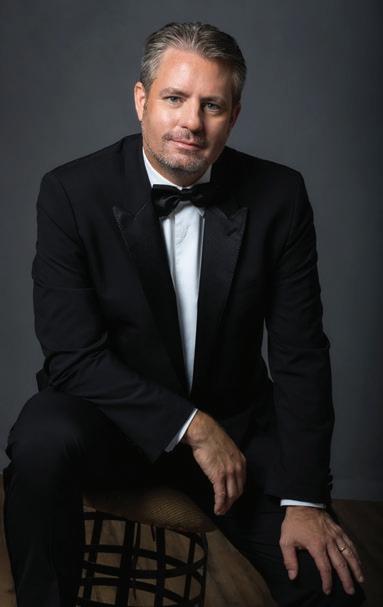
MATTHEW POLENZANI
FOX
Langrée, Riccardo Muti, Antonio Pappano, Simon Rattle, Leonard Slatkin, Franz Welser-Möst, David Zinman, Riccardo Chailly, and Daniel Harding. He frequently performs with such ensembles as the Berlin, Los Angeles, New York, and Munich philharmonics; the Boston, Chicago, San Francisco, and St. Louis symphonies; the Cleveland and Minnesota orchestras; the Orchestre dell’Accademia di Santa Cecilia; and the Orchestre National de France. He made his Philadelphia Orchestra debut in 2017. In recital, he has appeared in numerous venues across America with pianist Julius Drake and at London’s Wigmore Hall (available on CD from the Wigmore Hall label). He has also appeared with pianist Richard Goode in Janáček’s The Diary of One Who Vanished at Carnegie’s Zankel Hall and with pianist Roger Vignoles at the Verbier Festival (available on CD from VAI).
Mr. Polenzani was the recipient of the 2004 Richard Tucker Award, the Metropolitan Opera’s 2008 Beverly Sills Artist Award, and a 2017 Opera News Award. An avid golfer, he makes his home in suburban New York with his wife, mezzo-soprano Rosa Maria Pascarella, and their three sons.
THURSDAY, AUGUST 14, 7:30PM

In the 2024–25 season bass-baritone Alfred Walker, who is making his Philadelphia Orchestra debut, returned to the Lyric Opera of Chicago as Don Fernando in Beethoven’s Fidelio, the Metropolitan Opera as Enobarbus in Adams’s Antony and Cleopatra, and New Orleans Opera as the High Priest in Saint-Saëns’s Samson and Delilah. He also made his Irish National Opera debut in the title role of Wagner’s The Flying Dutchman. Recent highlights include Enobarbus in the world premiere of Antony and Cleopatra at San Francisco Opera, Orest in Strauss’s Elektra with Dallas Opera, Friar Lawrence in Gounod’s Romeo and Juliet and Rambaldo in Puccini’s La rondine at the Metropolitan Opera, Amonasro in Verdi’s Aida at Detroit Opera, and the title role in Saint-Saëns’s Henry VIII at Bard Summerscape.
Mr. Walker has sung Beethoven’s Symphony No. 9 and Verdi’s Requiem with the Atlanta, Vancouver, Utah, and Phoenix symphonies; the Stuttgart and Louisiana philharmonics; and at
the Sun Valley Music Festival. He has joined the Boston Symphony for Rossini’s Stabat Mater as well as Porgy in Gershwin’s Porgy and Bess at Tanglewood and in Boston, the Grant Park Music Festival for Shostakovich’s The Execution of Stepan Razin and Elgar’s The Kingdom, the American Symphony Orchestra for Mahler’s Kindertotenlieder and Rückert-Lieder, and the Los Angeles, Sydney, and Toronto symphonies as Porgy. Mr. Walker’s recording credits include Orest in Elektra with Semyon Bychkov and the WDR Symphony on the Hybrid label as well as Placido Domingo’s CD of Verdi tenor arias for Deutsche Grammophon.
A graduate of Dillard University, Loyola University, and the Metropolitan Opera’s Lindemann Young Artist Program, Mr. Walker is the recipient of awards from the George London Foundation, the Palm Beach Opera Competition, Houston Opera Studio’s Eleanor McCollum Competition, and the Sullivan Foundation career grant.
See Albany Pro Musica’s biography on page 39
Sopranos
Martha J. Bond
Emma Commisso
Bethany Cook
Marie Cox
Diane Deacon
Gwendolyn Delgadillo
Valerie Donovan
Brielle Farmer
Mialisa Lindholm Herron
Lauren Jurczynski
Nicole Lash
Jean T. Leonard
Evangelia Leontis
Heather Lessard
Jordan McCann
Katie McNally
Rebecca Monaghan
Lorna Jane Norris
Diane B. Petersen
Emily Peterson
Sandra Schujman
Teresa Maria Solé
Sylvia Stoner-Hawkins
Caroline Stuto
Mickie Wadsworth
Andrea Wanner
Iris Whalen
Altos
Clara Eizayaga Allen
Hana Askren
Maria Bedo-Calhoun
Marie Bosman
Francesca Caccamo
Carol Christiana
Shana Clark
Abigail Cowan-Kuzia
Elizabeth Eschen Cacciola
Tamiko Everson
Kathryn Farris
Katrina Fasulo
Olivia Faure
Scarlett Gearwar
Meredith Russell Grosshandler
Elizabeth Helmer
Darcy Crum Meadows
Allyson Romero
Gabrielle San Roman
Katherine Skovira
Emily Sturman
Valene Synakowski
Nancy Tellier
Irina Tikhonenko
Julie Weston
Lisa Wloch
Tenors
Augusta Bargeron
Mitch Cohen
Eamon Daley
John Favreau
Claire Gonyo
Caleb Hood
Jacob James
Matthew Kreta
Michael Lotano
Daniel Lugo
Mendon Neyerlin
Josh Overrocker
Greg Pratt
John Spinelli
Eli Thoma
Greg Van Orden
Lincoln Walton
John Xia
Basses
Michael Barren
Ross Brennan
David Castonguay
Peter Christian
Matthew Clemens
Evan DeFilippo
Joseph Han
Colin Helie
Jared Hunt
Tom Johnson
Andy Kettler
Howard Lien
David Loy
Michael Murphy
Noah Palmer
Benjamin Quist
John Rodier
David Rugger
Jose Schmidt
Chris Shields
Eugene Sit
Rex Smith
Andrew Tidd
Eugene Tobey
Brian Wagner
Marc Webster
Michael Wolff
ROBERT MOODY
Conductor
RENÉE FLEMING
Soprano
The following accompanied by a film provided by National Geographic. The audience is asked kindly to hold applause until the end of the film.
DICKENS/arr. Kittel
“Pretty Bird” FIRST PHILADELPHIA ORCHESTRA PERFORMANCE
HANDEL
“Care selve,” from Atalanta
MUHLY, texts by Thomas Traherne and Robinson “Endless Space”
FIRST PHILADELPHIA ORCHESTRA PERFORMANCE
CANTELOUBE
“Baïléro,” from Songs of the Auvergne
SCHNEIDER, poem by Ted Kooser
“Our Finch Feeder,” from Winter Morning Walks FIRST PHILADELPHIA ORCHESTRA PERFORMANCE
BJÖRK/arr. Ek
“All Is Full of Love” FIRST PHILADELPHIA ORCHESTRA PERFORMANCE
VILLA-LOBOS/red. Rocha
Finale, from Floresta do Amazonas FIRST PHILADELPHIA ORCHESTRA PERFORMANCE
SHORE
“Twilight and Shadow,” from The Lord of the Rings: The Return of the King
PUTS, poem by Dorianne Laux “Evening”
GREEN, poem by Pearce Green “Red Mountains Sometime Cry” FIRST PHILADELPHIA ORCHESTRA PERFORMANCE
BACHARACH/arr. Blaske
“What the World Needs Now Is Love”
INTERMISSION

FRIDAY, AUGUST 15, 7:30PM
ENTR›ACTE: Jackson Browne “Before the Deluge” (recording) Arrangement: Caroline Shaw, with Rhiannon Giddens, Alison Krauss, Renée Fleming, & Yannick Nézet-Séguin, piano
WAGNER
Prelude to Die Meistersinger von Nürnberg
LEONCAVALLO
“Musetta svaria sulla bocca viva,” from La bohème
PUCCINI
“O mio babbino caro,” from Gianni Schicchi
GOULD
An American Salute
KANDER
“A Letter from Sullivan Ballou” FIRST PHILADELPHIA ORCHESTRA PERFORMANCE
PORTER/arr. Hermann
“Begin the Beguine,” from Jubilee
KANDER
“Love and Love Alone” and “Winter,” from The Visit FIRST PHILADELPHIA ORCHESTRA PERFORMANCE
RODGERS/arr. Mathes
“You’ll Never Walk Alone,” from Carousel
LIPPA
“The Diva” FIRST PHILADELPHIA ORCHESTRA PERFORMANCE
Please turn off cell phones and disconnect electronic signals on watches or pagers before the start of the performance. This program is approximately 2 hours and 20 minutes.

When I was 14, the film Soylent Green was released, a sci-fi thriller about a dystopian future of worldwide pollution, dying oceans, depleted resources, and rampant starvation. The story was set in the year 2022.
The movie has faded from memory, but one scene left a profound impression. An aged researcher, unable to go on, has chosen assisted suicide at a government clinic. To ease his last moments of life, he is shown videos of a world that no longer exists: flowers and savannahs, flocks and herds, unpolluted skies and waters, all set to a soundtrack of classical music by Tchaikovsky, Beethoven, and Grieg.
This scene captured my imagination in a terrifying way. The impact increased when I later learned that the actor playing the researcher, Edward G. Robinson, was terminally ill at the time it was filmed.
Fast forward to the pandemic. After more than two decades of constant touring, usually to urban cultural centers, performances abruptly ceased, and I suddenly found myself at home. I sought comfort in long walks outside near my house. I needed this time outdoors to maintain my emotional equilibrium, and I was reminded that nature would always be my touchstone. At the same time, the news about climate change grew more alarming: the extinction of animals we took for granted when we were children, the knowledge that white rhinos had disappeared from the wild, and daily reports of heat, fires, and flooding. I realized that the crisis we had been warned of for so long had arrived.
I thought of the great legacy of song literature that I love, when Romantic-era poets and composers reveled in imagery of nature, finding reflections of human experience in the environment. I decided to record some of this music, and to juxtapose these classics with the voices of living composers, addressing our current, troubled relationship with the natural world.
The result, in collaboration with my friend Yannick Nézet-Séguin, was the album Voice of Nature: the Anthropocene. When it received the 2023 GRAMMY Award for Best Classical Solo Vocal Album, I was thrilled, and I had the idea to tour music addressing this theme of nature as both our inspiration and our victim.
I was incredibly fortunate to connect with the imaginative, dedicated leadership at the National Geographic Society, the global non-profit committed to exploring, illuminating, and protecting the wonder of our world. It has been so exciting to work with this universally respected, landmark institution. I am deeply grateful for the help of President and Chief Operating Officer Michael Ulica, Chief Executive Officer Jill Tiefenthaler, and Producer/Editor Sam Deleon, whose expertise and vision have been instrumental in creating the video you will see in the second half of tonight’s program.
Thankfully, the stunning natural world depicted in this film still exists, unlike that movie scene so upsetting to my younger self. In blending these beautiful images with music, my hope is, in some small way, to rekindle your appreciation of nature, and encourage any efforts you can make to protect the planet we share.
Sincerely,
Renée Fleming
AUGUST 15, 7:30PM

Conductor Robert Moody, who is making his Philadelphia Orchestra debut, is music director of the Memphis Symphony, Arizona Musicfest, and the Baltimore Chamber Orchestra. In 2022 he was invited to conduct the Lakeland Symphony (Florida) in a gala concert with Renée Fleming. Following that experience, he was immediately named principal opera conductor for Lakeland Symphony/Opera. Previously, Mr. Moody was music director of the Portland (Maine) Symphony and the Winston-Salem Symphony and held conducting positions with the Phoenix Symphony, the Evansville Philharmonic, Santa Fe Opera, the Brevard Music Center, and Interschool Orchestras of New York City. He also apprenticed at the Landestheater Opera in Linz, Austria.
This season, Mr. Moody made debuts with the Lyric Opera of Kansas City and Tulsa Opera, both with Ms. Fleming; the Tampere (Finland) Philharmonic; and Romania’s Filarmonica Banatul. He also returned to the Portland and Greensboro symphonies. He has led many of the major orchestras and opera companies of the world, including the Chicago,
Dallas, Houston, Toronto, Aachen, and Baden Baden symphonies; the Los Angeles and Buffalo philharmonics; the Minnesota Orchestra; the Orquesta Filarmonica de Bogotá; the Vienna Chamber Orchestra; and Washington National Opera.
Passionate about mentoring the next generation of musicians, Mr. Moody has spent recent summers conducting at the Sewanee Summer Music Festival, the National Repertory Orchestra, and the Highlands Opera Festival. His recordings include Bach and Legends with the Canadian Brass, R. Carlos Nokai’s Fourth World, and Re:Mission Rubato with the Memphis Symphony and trumpeter Ryan Anthony. A South Carolina native, Mr. Moody holds degrees from Furman University and the Eastman School of Music. Additional studies included an undergraduate term abroad in Vienna and a summer of study with Otto-Werner Mueller at Le Domaine Forget in Quebec.
Renée Fleming is internationally celebrated for the beauty of her voice, her compelling artistry, and her dedicated advocacy for the beneficial impacts of the creative arts in health. A 2023 Kennedy Center Honoree, and winner of five Grammy® awards and the US National Medal of Arts, she has sung for momentous occasions from the Nobel Peace Prize ceremony to the Super Bowl. In 2023, the World Health Organization appointed her as Goodwill Ambassador for Arts and Health, and this year at Davos, she became an inaugural member of the World Economic Forum’s Global Arts and Culture Council.
Renée received the Grammy Award for Best Classical Vocal Solo for her album Voice of Nature: The Anthropocene. She is currently touring with a concert program inspired by the album, with a special film created for the performance by the National Geographic Society. Last year at the Metropolitan Opera, Renée starred in The Hours, an opera based on the Pulitzer Prize-winning novel and award-winning film. Her voice is featured on the soundtracks of Best Picture Oscar winners The Shape of Water and The Lord of the Rings
Renée’s anthology, Music and Mind: Harnessing the Arts for Health and Wellness, was published in 2024. A prominent advocate for research at the intersection of arts, health, and neuroscience,
FRIDAY, AUGUST 15,

Renée created a program called Music and Mind, which she has presented in more than 70 cities around the world in partnership with local scientists, performing arts centers, and health care leaders. She is now a founding advisor for major initiatives in the field, and her Foundation supports interdisciplinary research via the Renée Fleming NeuroArts Investigator Awards in collaboration with the NeuroArts Blueprint at Johns Hopkins University and The Aspen Institute.
Advisor for Special Projects at LA Opera, Renée is also Co-Artistic Director of the Aspen Opera Center and VocalArts at the Aspen Music Festival and School, and Artist Development Advisor at Wolf Trap Opera. Her other awards include Germany’s Cross of the Order of Merit, the Polar Music Prize, the Fulbright Lifetime Achievement Medal, and honorary doctorates from ten leading universities. www.reneefleming.com
JUSTIN FREER Conductor
As Lord VoldemortTM tightens his grip on both the Muggle and Wizarding Worlds™, Dumbledore™ is more intent upon preparing Harry for the battle fast approaching. Even as the showdown looms, romance blossoms for Harry, Ron, and Hermione and their classmates. Love is in the air, but danger lies ahead, and Hogwarts™ may never be the same again.
Produced by CineConcerts

Please turn off cell phones and disconnect electronic signals on watches or pagers before the start of the performance.
This program is approximately 3 hours.
Harry Potter and the Half-Blood Prince
Directed by David Yates
Produced by David Heyman and David Barron
Written by Steve Kloves
Based on Harry Potter and the Half-Blood Prince by J.K. Rowling
Starring:
Daniel Radcliffe
Rupert Grint
Emma Watson
Jim Broadbent
Helena Bonham Carter
Robbie Coltrane
Warwick Davis
Michael Gambon
Alan Rickman
Maggie Smith
Timothy Spall
David Thewlis
Julie Walters
Music by Nicholas Hooper
Cinematography by Bruno Delbonnel
Edited by Mark Day
Produced by Heyday Films
Distributed by Warner Bros. Pictures SUPPORT SPAC


Nicholas Hooper, also known as Nick Hooper, is a British film and television composer and guitarist, born on 23 July 1952. His musical journey in film commenced in the 1980s, marking the onset of a prolific creative period in his life. He is known for his award-winning scores for BBC productions such as Land of the Tiger and Andes to Amazon, along with TV movies The Girl in the Café and My Family and Other Animals among others.
Hooper’s acclaim skyrocketed with his composition for the Harry Potter film series, specifically Harry Potter and the Order of the Phoenix and Harry Potter and the Half-Blood Prince, where he collaborated with director David Yates. These projects were notable as Hooper’s involvement in blockbuster films, earning him a Grammy nomination for Half-Blood Prince. His other high-profile work includes the soundtrack for the Disney documentary African Cats, which was among the 97 original scores shortlisted for nomination at the 84th Academy Awards in 2011.
Beyond film scoring, Hooper is a performing guitarist who released a solo guitar album titled 6 Strings in 2015, followed by Pete’s Trees with his duo Henderson:Hooper in 2018. In 2019, he featured on a charity double CD Strings that Nimble Leap. He performs regularly with Gordon Giltrap MBE and The Boot Band. Additionally, he has released three novels: Above the Void (2017), The Occasional Gardener (2018), and The Mirror in the Ice Cream Parlour (2019), showcasing his versatility and creativity across different mediums.
Hooper has been active in the music domain since 1985, with a career spanning over decades, wherein he has contributed to over 250 films, dramas, and documentaries since 1990, making him one of Europe’s leading composers known for original, inspiring, and colorful music.His noteworthy accolades include a BAFTA Award and an Ivor Novello Award for Original Score in 2004 for The Young Visiters, and a BAFTA for Best Original Television Music in 2007 for Prime Suspect: The Final Act. SATURDAY, AUGUST 16, 7:30PM
AUGUST 16, 7:30PM

American composer/conductor Justin Freer was born and raised in Huntington Beach, CA. He has established himself as one of the West Coast’s most exciting musical voices and is a highly sought-after conductor and producer of film music concerts around the world. Freer began his formal studies on trumpet, but quickly turned to piano and composition, composing his first work at eleven and giving his professional conducting debut at sixteen.
Continually composing for various different mediums, he has written music for world-renowned trumpeters Doc Severinsen and Jens Lindemann and continues to be in demand as a composer and conductor for everything from orchestral literature to chamber music around the world.
He has served as composer for several independent films and has written motion picture advertising music for some of 20th Century Fox Studios’ biggest campaigns including Avatar, The Day the Earth Stood Still, Aliens in the Attic. As a conductor Freer has appeared with some of the most well known orchestras in the world including the Chicago Symphony Orchestra, Cleveland Orchestra, London Philharmonic, Los Angeles Philharmonic, New York Philharmonic and the
Philadelphia Orchestra. He is also one of the only conductors to have ever conducted in both the ancient Colosseum and Circus Maximus in Rome.
Renowned wind conductor and Oxford Round Table Scholar Dr. Rikard Hansen has noted that, “In totality, Freer’s exploration in musical sound evoke moments of highly charged drama, alarming strife and serene reflection.”
Freer has been recognized with numerous grants and awards from organizations including ASCAP, BMI, the Society of Composers and Lyricists and the Henry Mancini Estate. He is the Founder and President of CineConcerts, a company dedicated to the preservation and concert presentation of film, curating and conducting hundreds of full length music score performances live with film for such wide ranging titles as Rudy, Gladiator, The Godfather, Breakfast at Tiffany’s, It’s A Wonderful Life, and the entire Harry Potter Film Franchise.
Mr. Freer earned both his B.A. and M.A. degrees in Music Composition from UCLA, where his principal composition teachers included Paul Chihara and Ian Krouse. In addition, he was mentored by legendary composer/conductor Jerry Goldsmith.
Justin Freer, President/Founder/Producer
Brady Beaubien, Co-Founder/Producer
Andrew P. Alderete, Chief XR Officer/Head of Publicity and Communications
Andrew McIntyre, Director of Operations
Brittany Fonseca, Senior Marketing Manager
Si Peng, Senior Social Media Manager
Worldwide Representation: WME
Music Preparation: JoAnn Kane Music Service
Sound Remixing: Justin Moshkevich, Igloo Music Studios
CineConcerts is one of the leading producers of live and digital music experiences performed with visual media, and continues to redefine entertainment. Founded by Producer/Conductor Justin Freer and Producer/Writer Brady Beaubien, CineConcerts will engage over 4.8 million people worldwide in concert presentations in over 3,000 scheduled performances in 48 countries through 2025, and recently launched CineConcerts +PLUS, a global digital network and app suite with hundreds of exclusive podcast episodes and produced content. CineConcerts continues to work with some of the most prestigious orchestras and venues in the world including the Chicago Symphony, the Cleveland and Philharmonia orchestras, and the London, Los Angeles, and New York philharmonics. Recent and current live and digital concert experiences include Elf in Concert, The Pinball Concert (digital), The Polar Express in Concert, Rudy in Concert, The Passion of the Christ in Concert, The Da Vinci Code in Concert, the Harry Potter Film Concert Series, Gladiator Live, The Godfather Live, It’s a Wonderful Life in Concert, DreamWorks Animation in Concert, Star Trek: The Ultimate Voyage 50th Anniversary Concert Tour, Breakfast at Tiffany’s in Concert, and A Christmas Dream Live.
Warner Bros. Discovery Global Themed Entertainment (WBDGTE), part of Warner Bros. Discovery Global Brands and Experiences, is a worldwide leader in the creation, development, and licensing of location-based entertainment, live events, exhibits, and theme park experiences based on the biggest franchises, stories, and characters from Warner Bros.’ film, television, animation, and games studios, HBO, Discovery, DC, Cartoon Network, and more. WBDGTE is home to the groundbreaking locations of the Wizarding World of Harry Potter at Universal theme parks around the world, Warner Bros. World Abu Dhabi, the WB Abu Dhabi, the FRIENDS Experience, the Game of Thrones Studio Tour, and countless other experiences inspired by the Wizarding World, DC, Looney Tunes, Scooby-Doo, Game of Thrones, FRIENDS, and more. With best-in-class partners, WBDGTE allows fans around the world to physically immerse themselves inside their favorite brands and franchises.
All characters and elements © & ™ Warner Bros. Entertainment Inc. Publishing Rights © JKR.
WEDNESDAY, AUGUST 20, 7:30PM
NAOMI WOO
Conductor
SHEKU KANNEH-MASON
Cello
COLERIDGE-TAYLOR
Ballade in A minor, Op. 33
SAINT-SAËNS
Cello Concerto No. 1 in A minor, Op. 33
Allegro non troppo—Allegretto con moto—Tempo I—Molto allegro
INTERMISSION
BEETHOVEN
Symphony No. 5 in C minor, Op. 67
I. Allegro con brio
II. Andante con moto
III. Allegro—
IV. Allegro

Please turn off cell phones and disconnect electronic signals on watches or pagers before the start of the performance. This program is approximately 1 hour and 45 minutes.

WEDNESDAY, AUGUST 20, 7:30PM
Composed in 1898
Born in London, August 15, 1875
Died in Croydon, England, September 1, 1912
History is filled with composers who burn bright and die tragically young, often leaving a legacy for the ages. Mozart only lived to see 35, Schubert died at 31; Pergolesi was 26 when he died of tuberculosis in 1736. Samuel Coleridge-Taylor was healthy for most of his life but died of pneumonia at 37.
Despite the obstacles associated with being Black during the Victorian era, already in his early 20s this extraordinary composer began to emerge as one of the leading musical voices of the late 19th and early 20th centuries. He was born in London of an English mother, Alice Martin, and a Creole father from Sierra Leone, Dr. Daniel Peter Hughes Taylor. Samuel never knew his father, who returned to Africa before the boy was born, evidently without knowing Alice was pregnant. But his mother’s family included several musicians, and his maternal grandfather, Benjamin Holmans, gave him his first violin. Samuel showed remarkable gifts both on the violin and as a singer. He was barely 15 when he enrolled in the Royal College of Music, as a violin student of Henry Holmes. Members of the faculty (and especially George Grove) were so impressed with his compositions that they immediately suggested that he switch to composition.
A student of Charles Villiers Stanford, ColeridgeTaylor quickly produced a Clarinet Sonata, a Piano Quintet, and several songs. Upon graduation, he took up a career as a professional musician, conducting and assuming a post as professor at the Crystal Palace School of Music. He would later teach at Trinity College of Music as well.
By the late 1890s his music was drawing attention, and in 1898 the Royal College organized a performance of Hiawatha’s Wedding Feast, a cantata for soloists, choir, and orchestra set to poetry of Henry Wadsworth Longfellow; no less than Stanford himself was on the podium. In 1900 the Royal Choral Society performed the composer’s full Hiawatha trilogy, which also included The Death of Minnehaha and Hiawatha’s Departure. During the first half of the 20th century this trilogy became almost as popular in Britain as Handel’s Messiah and Mendelssohn’s Elijah.
Coleridge-Taylor’s music attracted the attention
of Elward Elgar, an early admirer, and of Elgar’s friend, August Jaeger—whose publishing house, Novello, would in the ensuing years issue a number of the composer’s works. The music was also making headway in the New World, and in 1904, 1906, and 1910 the composer accepted invitations to the United States, where he was received with acclaim, especially in Washington, D.C., Boston, and New York. There he met W.E.B. Du Bois and other important figures in the early fight for equality, and he was invited to the White House by President Theodore Roosevelt.
Coleridge-Taylor became friends with the poet and playwright Paul Laurence Dunbar, whose poetry he had set in 1897 as the African Romances for voice and piano. During his United States tours, in fact, he began to be aware of African-American and Africaninspired melodies, as expressed in works such as his Twenty-Four Negro Melodies (1905)—dedicated to Du Bois and aimed at bringing elements of this music into the classical tradition. Among ColeridgeTaylor’s works are an opera, Thelma (rediscovered in 2003), incidental music (Ulysses, Faust, Othello), ballet scores, a Symphony in A minor, a Violin Concerto, orchestral suites, cantatas, sacred choral music, chamber works, and a great many songs.
The Ballade in A minor, Op. 33, came about when Elgar—having received a commission from the Three Choirs Festival that he was too busy to complete—recommended that they ask ColeridgeTaylor instead. “He is far and away the cleverest fellow going amongst the young men,” the elder composer wrote. “Please don’t let your committee throw away the chance of doing a good act.”
The brilliant Ballade that resulted, first performed in Gloucester in November 1898, helped establish a name internationally for the 23-year-old. This powerfully Romantic tone picture combines Mendelssohnian clarity with a sort of operatic, even Verdian, melodrama. Yet there is something unmistakably English in the work’s dignified yet mercurial character, and the majestic principal theme heard in the strings about three minutes in lends a nod to Elgar’s elevated manner. The themes are masterfully crafted and developed; the command of texture, idiom, and structure is second to none. The winds enter to indicate, in a decidedly self-conscious fashion, that this is not going to be as simple as one might have imagined; the drama continues in such an episodic manner that some have likened the piece to a poetic “ballad.”
—Paul J. Horsley
Composed in 1872
Born in Paris, October 9, 1835
Died in Algiers, December 16, 1921
Camille Saint-Saëns’s infallible knack for combining a virtuoso soloist with orchestra served him well throughout his long life: He composed more solo-and-orchestra concertante works— some 30 in all—than any other major Romantic composer. In addition to five concertos for piano, three for violin, and two for cello, he also wrote a colorful variety of pieces such as the Carnival of the Animals for two pianos and small ensemble, the Morceau de concert for harp, and the unusual Africa for piano and orchestra. The same melodic facility and ease that lend his operas and chamber works their nonchalant flow is also found in ample measure in these works for soloist and orchestra. He was a composer of prodigious wit and sharp intellect; though he dashed off some of his most enduring works in a matter of days, his best music is as serious as Beethoven, as perfectly polished as Chopin, and as full of peerless melody as Mozart (well, almost).
It was Franz Liszt who had pioneered the cyclic, one-movement concerto, with his works for piano and orchestra of two decades earlier; other composers had followed suit, but few successfully. In emulating Liszt’s procedure Saint-Saëns found that this unusual structural concept activated a peculiar creativity within his already well-formed artistic equipment. His works brought to the “cyclic” idea an ingenuity of detail and refinement that often rivals Liszt’s.
Perhaps the most successful example of this ingenuity is the First Cello Concerto, composed in 1872 and premiered in January of the following year at the concerts of the Paris Conservatory,
with the dedicatee, Auguste Tolbecque, as soloist. In this Concerto Saint-Saëns makes crystal-clear the overarching three-movement structure, but he blurs the lines between the “movements” by bringing back the triplet-formed principal subject at various logical points during the work, allowing this descending theme (the one played by the soloist at the outset) to serve as a sort of glue that holds together the three large sections. The theme returns at the end of the piece to introduce the coda, with a last-minute leap into the key of A major.
The work is extremely grateful for the soloist, with a virtuosic part that exploits the essential technical equipment available to the cello without straining the point. (“The worldly wisdom of Saint-Saëns is at its best and kindliest in this opusculum,” writes the great English critic Donald Francis Tovey, “which is pure and brilliant without putting on chastity as a garment, and without calling attention to its jewelry at a banquet of poor relations.”) The stormy initial movement (Allegro non troppo) begins with a passionate soliloquy for cello, with thematic material that is immediately taken up by the orchestra; the slow, reflective second theme in F major is also introduced by the soloist. A brief tutti passage (Allegro molto) announces what is essentially a development section of these initial themes.
But instead of moving to a recapitulation, this “development” leads directly into the second movement, a playful and stylized minuet-and-trio (Allegretto con moto) where one hears echoes of the composer’s artistic roots in the music of the French Baroque. A brief return to the initial Allegro non troppo ushers in the last “movement” (Un peu moins vite—A bit less rapidly), featuring an imploring cello theme and a central virtuosic section of great sweep. The work concludes with a final reference to the initial material and a sudden turn to the major key (Molto allegro) that seems like a wry and somewhat bemused “happy ending.”
—Paul J. Horsley
SYMPHONY NO. 5 IN C MINOR, OP. 67
Composed from 1804 to 1808
LUDWIG VAN BEETHOVEN
Born in Bonn, probably December 16, 1770
Died in Vienna, March 26, 1827
Every listener may feel free to interpret this immortal work in his or her own fashion. The idea that it represents the composer’s mighty but victorious struggle with destiny was put into circulation by Beethoven himself, or at least by his fantasy-spinning secretary, Anton Schindler, who reported the composer’s explanation of the opening motif as “So pocht das Schicksal an die Pforte” (Thus Fate knocks at the door). Perhaps Beethoven did say that, and it offers a vivid image for an extraordinarily unconventional opening for a Classical symphony. But there are so many other forces at work besides that of fate that we need to open our ears and minds to every signal it sends out. Most listeners agree that they may be different at every hearing.
Fate struck Beethoven most cruelly in about 1802 when, still in his early 30s he acknowledged the fact of his deafness and began the long process of coming to terms with a handicap that was less of a musical disability (it did not interfere with his ability to compose) than a social one. Up to that point his career as a musician was going swimmingly, with Vienna’s aristocrats lining up to engage him, refined ladies swooning whenever he played, and music of limpid beauty pouring from his pen. His standing as a virtuoso pianist with excellent connections at court was seriously threatened, and his relations with friends, especially with women, were now forever circumscribed.
We might think that as a composer his reactions were more violent than the situation warranted. The “Eroica” Symphony, the immediate product of that profound crisis, transformed the world of classical music for ever. He did not stop there. The superhuman creative energy that produced the great heroic works of that decade had never been heard before in music. One colossal path-breaking composition followed another, combining unearthly beauty of invention, technical virtuosity, vastness of conception, and a radical freedom of expression and form.
The famous four-note motif that opens the Fifth Symphony is heard constantly in the first movement and intermittently elsewhere, but it is far from being the all-pervading idea that many people suppose. The second movement deftly and curiously blends gorgeous cantilena with military trumpets, all wrapped in variation form. The third movement is full of mystery; not defiant, not triumphant, more humorous or spectral, and out of it grows the huge shout of triumph of the Allegro finale, as the trombones proclaim a new order of the universe, supported by piccolo, contrabassoon, and the full weight of C major, the key which Haydn had assigned to the completion of The Creation itself. Beethoven was so proud of the exciting passage at the end of the scherzo, where the approach of the finale is felt in the very bones of the music, that he felt impelled to repeat it. So the heavens open not once, but twice.
—Hugh Macdonald
Program notes © 2025. All rights reserved. Program notes may not be reprinted without written permission from The Philadelphia Orchestra Association and/or Paul J. Horsley.
7:30PM

Canadian conductor and pianist Naomi Woo is assistant conductor of The Philadelphia Orchestra, where her duties include assisting Music and Artistic Director Yannick NézetSéguin as well as other guest conductors and leading the Orchestra in select concerts. She is also music director of NYO Canada and artistic partner of the Orchestre Métropolitain in Montreal. This season Ms. Woo debuted with the Philadelphia, Luxembourg Chamber, and Toronto’s Royal Conservatory orchestras; London’s Philharmonia; and the Edmonton Symphony. Return engagements included the Toronto and Vancouver symphonies, the Calgary Philharmonic, and the Orchestre Métropolitain. Highlights of her 2023–24 season included her first tour and recordings with NYO Canada; engagements with the Orchestre Métropolitain; the Montreal, Toronto, Vancouver, and Chautauqua symphonies; the National Arts Center Orchestra; and productions with English Touring Opera and Opera Holland Park.
Ms. Woo was assistant conductor of the Winnipeg Symphony from 2019 to 2023. On the opera stage, she has conducted the Canadian premiere of Du Yun’s Pulitzer Prize–winning Angel’s Bone in Vancouver and the world premiere of Ellis Ludwig-Leone’s The Night Falls in New York City. In 2022 she assisted in the world premiere of Oliver Leith’s Last Days at the Royal Opera House and returned to assist Thomas Adès with the same work for its United States premiere with the Los Angeles Philharmonic.
The 2022 winner of the Canada Council’s Virginia Parker Prize, Ms. Woo is a member of Tapestry Opera’s Women in Musical Leadership program and was chosen by her mentor, Yannick Nézet-Séguin, as a member of the Orchestre Métropolitain’s inaugural orchestral conducting academy. She holds a Ph.D. from the University of Cambridge, where she was a Gates Cambridge Scholar. She also studied mathematics, philosophy, and music at Yale College, the Yale School of Music, and the University of Montreal.
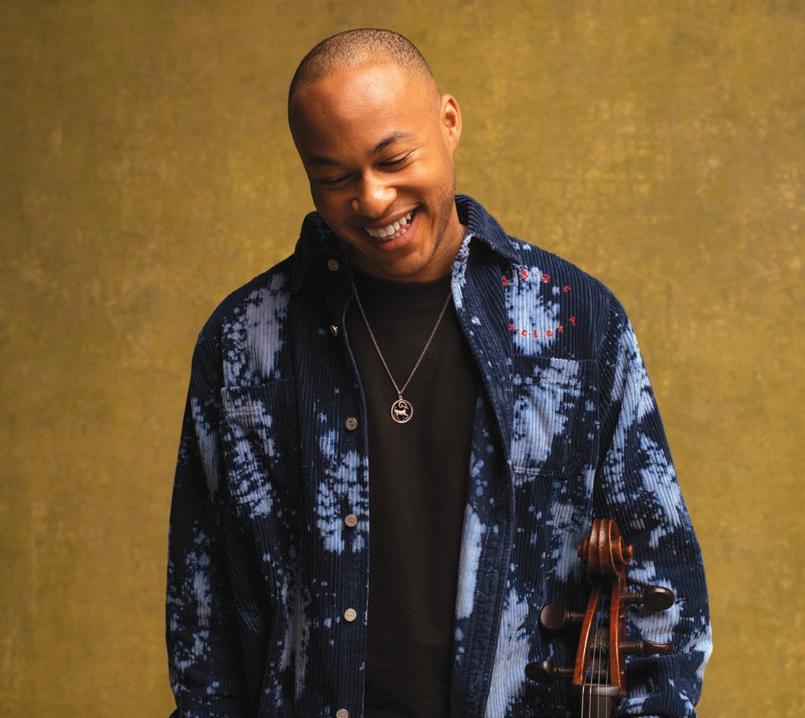
Cellist Sheku Kanneh-Mason’s mission is to make music accessible to all, whether that’s performing for children in a school hall, at an underground club, or in the world’s leading concert venues. Highlights of the 2024–25 season included being artist in residence at the Konzerthaus Berlin and artiste étoile at the Lucerne Festival. He also made appearances with the Czech Philharmonic, the Philadelphia and Zurich Tonhalle orchestras, the WDR Symphony Cologne, the Sinfonia of London, the SWR Symphony Stuttgart, the Camerata Salzburg, and the Pittsburgh Symphony. With his pianist sister, Isata, he made his duo recital debut at Carnegie Hall’s Stern Auditorium in a program featuring a newly commissioned piece by Natalie Klouda. Additionally, the pair performed in Bordeaux, Rome, Cincinnati, Toronto, Dublin, Philadelphia, Munich, Berlin, Antwerp, Haarlem, and at the Rheingau Festival and London’s Wigmore Hall.
Since his BBC Proms debut in 2017, Mr. KannehMason has performed there every summer.
He often returns to Antigua, where he has family connections, as an ambassador for the Antigua and Barbuda Youth Symphony. An exclusive Decca Classics recording artist, he appears on Beethoven’s Triple Concerto alongside violinist Nicola Benedetti, pianist Benjamin Grosvenor, and the Philharmonia Orchestra conducted by Santtu-Matias Rouvali. His other releases include Song and Elgar
A graduate of London’s Royal Academy of Music, Mr. Kanneh-Mason was appointed the Academy’s first Menuhin Visiting Professor of Performance Mentoring in 2022. He was appointed a Member of the Most Excellent Order of the British Empire in 2020 and his performance at the wedding of the Duke and Duchess of Sussex at Windsor Castle in 2018 was watched by two billion people worldwide. He plays a Matteo Goffriller cello from 1700, which is on indefinite loan. He made his Philadelphia Orchestra debut in 2022. He appears by arrangement with Enticott Music Management.
THURSDAY, AUGUST 21, 7:30PM
TEDDY ABRAMS
Conductor
TIME FOR THREE:
RANAAN MEYER
Double Bass, Vocals
NICK KENDALL
Violin, Vocals
CHARLES YANG
Violin, Mandolin, Vocals
BARBER
Adagio for Strings, Op. 11
COPLAND
Appalachian Spring Suite (1945 version)
INTERMISSION
BATES
Silicon Hymnal, for string trio, orchestra, and electronica
I. Hypnotica
II. Phat reel
III. Air for three—
IV. Abide with me—
V. Finale
FIRST PHILADELPHIA ORCHESTRA PERFORMANCE

TIME FOR THREE
Please turn off cell phones and disconnect electronic signals on watches or pagers before the start of the performance.
This program is approximately 1 hour and 45 minutes.

THURSDAY, AUGUST 21, 7:30PM
Composed in 1936
Born in West Chester, Pennsylvania, March 9, 1910
Died in New York City, January 23, 1981
The hauntingly elegiac second movement of Samuel Barber’s String Quartet in B minor, Op. 11, is the composer’s most famous work— just not in its original version. In 1938 Arturo Toscanini premiered Barber’s own arrangement of the piece for full string orchestra with the NBC Symphony Orchestra. Under the title Adagio for Strings the work catapulted the 28-year-old composer to fame and eventually emerged as one of the most beloved pieces of the 20th century.
Barber’s original String Quartet dates from 1936. Another ethereal work was on his mind when he began composing it that summer in Europe. As he wrote in a letter: “I finished copying [Wagner’s] Siegfried ‘Idyll’ the other day, a sort of joyful penitence for certain orchestral indiscretions which I committed this winter. How beautiful the instrumentation of the ‘Idyll’ is!” He went on to remark how “difficult” writing a quartet was proving, but by mid-September could prophetically report to Orlando Cole, cellist of the Curtis String Quartet: “I have just finished the slow movement of my quartet today—it is a knockout! Now for a Finale.” The last movement continued to cause Barber a great deal of trouble; it went through various revisions even after the Quartet’s American premiere at the Library of Congress in April 1937.
Barber had met Toscanini in Italy a few years earlier and the conductor took an interest in the young composer, going so far as to say that he would like to perform some of his music. In the spring of 1938 Barber sent him the Adagio for Strings and his Essay for Orchestra, but they were returned without any response. According to Barber’s own later account, he declined to visit Toscanini that summer in Italy. When his companion, composer Gian Carlo Menotti, went alone and offered excuses that his absence was due to health, the conductor replied: “I don’t believe that. He’s mad at me. Tell him not to be mad. I’m not going to play one of his pieces, I’m going to play both.”
Toscanini’s performance of both compositions with the NBC Symphony was nationally broadcast on November 5, 1938. The Adagio for Strings
was generally well received, notably from the New York Times critic Olin Downes, but it sparked controversy in letters to the paper. Some complained that the piece was not identifiably American while others objected that it was not modern. Toscanini performed the Adagio for Strings on tour in South America and England and in 1942 recorded the work, further enhancing its fame. Barber later made yet another arrangement of the piece, a choral version to which he fitted the words of the “Agnus Dei.”
It may not be surprising that Barber’s final reincarnation for his Quartet movement should be religious as a solemn, even chant-like, character is evident from the start. The Adagio opens with the first of a series of slow phrases consisting of a stepwise diatonic melody accompanied by chords from the other strings. The work builds to a powerful climax, louder, more chromatic, and in the highest register of the instruments. After a grand pause the music settles down with the calm return of the opening theme.
—Christopher H. Gibbs
APPALACHIAN SPRING SUITE
Composed from 1943 to 1944
AARON COPLAND
Born in Brooklyn, November 14, 1900
Died in North Tarrytown, New York, December 2, 1990
Aaron Copland, born in 1900, lived a long and distinguished life not just as a composer, but also as a conductor, writer, concert organizer, and teacher. He was justly hailed as the “Dean of American Composers” and always seemed to be in the center of things, a generous colleague and an inspiring model. His compositional style changed noticeably over the decades and yet somehow always remained distinctively Coplandesque. At the age of 20 he went to Paris to study, and the music of Igor Stravinsky exerted an enormous impact on him; next jazz emerged as another important influence. During his early 30s Copland went through a phase in which he wrote quite challenging Modernist pieces, angular and dissonant, even if never as extreme as those associated at the time with Arnold Schoenberg and his colleagues in Vienna.
There was a decade or so, beginning in the late 1930s, when Copland composed his most popular and enduring compositions, works such as the ballets Billy the Kid and Rodeo, Fanfare
THURSDAY, AUGUST 21, 7:30PM
for the Common Man, and Lincoln Portrait These pieces seemed to capture the American experience in vital and unexpected ways. In the summer of 1943, he started a collaboration with the noted choreographer and dancer Martha Graham for a new ballet that was eventually given the title Appalachian Spring
Elizabeth Sprague Coolidge commissioned the ballet for Graham to choreograph, accompanied by a small ensemble of a dozen performers. Copland’s ballet premiered in October 1944 at the Library of Congress in Washington, D.C. It was awarded the Pulitzer Prize in music the following year.
Copland had no clear scenario when he began composing the piece, which for quite a while he simply called Ballet for Martha. When he finally saw what she had done just a few days before the premiere he did not think it reflected what he had in mind with the music but was magnanimous: “Music composed for one kind of action had been used to accompany something else. … But that kind of decision is the choreographer’s, and it doesn’t bother me a bit, especially when it works.” Copland enjoyed recounting the story of the title, which was Graham’s late addition inspired by a Hart Crane poem. The composer recalled how people would endlessly come up to him remarking that they saw the Appalachians and felt spring in the music, neither of which had been part of the conception. He confessed: “I have even begun to see the Appalachians myself a bit.”
Graham provided a very short description of the story for the Washington premiere: “Part and parcel of our lives is that moment of Pennsylvania spring when there was ‘a garden eastward of Eden.’ Spring was celebrated by a man and woman building a house with joy and love and prayer; by a Revivalist and his followers in their shouts of exaltation; by a pioneering woman with her dreams of the Promised Land.”
Copland originally composed the complete ballet for just 13 instruments, from which he later extracted a concert suite of eight continuous movements scored for large orchestra, which is how the piece is most often performed. The composer provided the following description of the Suite:
1. Very slowly—Introduction of the characters, one by one, in a suffused light.
2. Fast—Sudden burst of unison strings in A-major arpeggios starts the action. A sentiment both elated and religious gives the keynote to this scene.
3. Moderate—Duo for the Bride and her Intended—scene of tenderness and passion.
4. Quite fast—The Revivalist and his flock. Folksy feelings—suggestions of square dances and country fiddlers.
5. Still faster—Solo dance of the Bride— Presentiment of motherhood. Extremes of joy and fear and wonder.
6. Very slow (as at first)—Transition scenes reminiscent of the introduction.
7. Calm and flowing—Scenes of daily activity for the Bride and her Farmer-husband. There are five variations on a Shaker theme. The theme—sung by a solo clarinet—was taken from a collection of Shaker melodies compiled by Edward D. Andrews, and published under the title The Gift to Be Simple. The melody I borrowed and used almost literally is called “Simple Gifts.”
8. Moderato—Coda—The Bride takes her place among her neighbors. At the end the couple are left “quiet and strong in their new house.” Muted strings intone a hushed, prayer-like passage. We hear a last echo of the principal theme sung by a flute and solo violin. The close is reminiscent of the opening music.
—Christopher H. Gibbs
Composed in 2024
Born in Philadelphia, January 23, 1977
Now living in Burlingame, California
GRAMMY Award–winning composer Mason Bates was raised in Richmond, Virginia, and showed an interest in both creative writing and music from an early age. He attended a joint program of Columbia University and the Juilliard School, receiving a B.A. in English literature and a Master of Music in composition while concurrently studying playwriting. He also studied at the American Academies in Rome and Berlin, as well as at the Center for New Music and Audio Technologies at the University of California at Berkeley, from which he received a Ph.D. in composition. One of the mostperformed composers of his generation, Bates has been transforming the classical performance experience through a “magical intersection between music and technology.” As the first composer-in-residence at the John F. Kennedy
Center for the Performing Arts, he presented a diverse array of artists through the KC Jukebox series, using ground-breaking production and stagecraft. He has been composer-in-residence with the Pittsburgh, Chicago, and California symphonies and is currently artist-in-residence at San Francisco’s Grace Cathedral, responsible for curating a variety of immersive events to bring classical pieces to new audiences in new ways.
Bates’s 2024–25 season included the premiere at Indiana University of The Amazing Adventures of Kavalier & Clay, an opera fusing big band swing, electronic media, and Jewish prayer to depict the horrors of the Holocaust. Commissioned by the Metropolitan Opera and scheduled for next season, The Amazing Adventures transports the audience through the worlds of Nazi-occupied Prague, early-20th-century New York City, and technicolor comic-book fantasy. Also this past season, The Philadelphia Orchestra premiered “Spring River Flowers by Moonlight,” a setting of the Tang Dynasty literary masterpiece by poet Zhang Ruoxu.
Recent and upcoming projects include the recording Bruckner and Bates by the Pittsburgh Symphony and recordings of The Rhapsody of Steve Jobs, Passage, and Nomad Concerto featuring violinist Gil Shaham, all with the Nashville Symphony. Bates’s previous works continue to be popular, including Philharmonia Fantastique: The Making of the Orchestra, which has been performed nearly 100 times in its first few years and in 2022 received a GRAMMY Award for Best Engineered Album, Classical. His opera The (R)evolution of Steve Jobs was recently performed at the Kennedy Center and will soon be produced by Finnish National Opera. In addition, Bates’s 12-part a cappella choral piece Die Lorelei was released digitally in 2023 by the professional vocal ensemble Chanticleer.
Scored for two solo violins, solo bass, orchestra, and electronica and composed specifically for Time for Three, Silicon Hymnal was co-commissioned by the Saratoga Performing Arts Center; Arizona MusicFest; the Brevard Music Center; the Louisville Orchestra; the Nashville, San Francisco, and Sioux City symphonies; and the Sun Valley Music Festival. Informed by the vast sound world around us today, this triple concerto was premiered on March 25, 2025, at Arizona MusicFest with Time for Three and the Festival Orchestra, conducted by Robert Moody. Subsequent performances are taking place nationwide throughout 2025 by the co-commissioning organizations.
THURSDAY, AUGUST 21, 7:30PM
Bates describes the five-movement Silicon Hymnal as a “book of songs with a heart of electronica” unfolding in progressively more expansive movements. As he writes:
Hypnotica mixes meditative textures between soloists, orchestra, and electronica, drifting in and out of focus in a dreamlike manner. The ensuing Phat reel combines a heavy beat (a ‘phat’ in hip-hop parlance) with a reimagined fiddle reel—a jaunty folk tune of Scottish origins—in a lopsided dance that swaps violin for mandolin. Air for three floats a double bass melody over airy violin textures and jazz harmonies. The work takes a deep dive in Abide with me, an atmospheric recasting of the 19th-century hymn known for its plaintive calls for guidance amidst the darkness of eventide. At the most vulnerable moment in the movement, the soloists are called to sing the hymn itself. All thematic elements return in the barnburner Finale, making boisterous cameos over an engine of perpetual motion. Analogue and digital figuration swirl together in an exuberant close.
The music of Mason Bates has been championed by renowned performers and conductors worldwide, and his symphonic compositions are recognized as the first to be widely accepted for the unique integration of electronic sounds into an orchestral palette. Silicon Hymnal combines his innovative compositional approach with Time for Three’s versatile genre-bending synthesis of classical, Americana, and singer-songwriter styles. As Bates noted after the March premiere, “The birth of a new piece is always a magical moment, and last night was one of the most meaningful to many for so many reasons.”
—Nancy
Plum
Program notes © 2025. All rights reserved. Program notes may not be reprinted without written permission from The Philadelphia Orchestra Association and/or Nancy Plum.
AUGUST 21, 7:30PM

Teddy Abrams, GRAMMY Award winner and Musical America’s 2022 Conductor of the Year, has been the galvanizing force behind the Louisville Orchestra’s extraordinary artistic renewal and innovative social impact since his appointment as music director in September 2014. His work has been profiled by CBS Sunday Morning, the New Yorker, NPR, the Wall Street Journal, the New York Times, and PBS NewsHour Among Abrams’s achievements in Kentucky are the Louisville Orchestra Creator’s Corps, which provides a fully funded residency for three composers who receive local housing, a salary, health benefits, and dedicated workspaces, and the In Harmony tour, a multi-season project funded by the Commonwealth of Kentucky that takes the orchestra throughout the state for concerts and special community events.
Mr. Abrams’s 2024–25 season with the Louisville Orchestra included Orff’s monumental Carmina burana, Ray Chen performing Barber’s Violin Concerto, Valerie Coleman’s Concerto for
Orchestra, and the world premieres of works from the third round in the Louisville Orchestra Creators Corps. Also this season he made his Boston Symphony debut and returned to the Los Angeles and Luxembourg philharmonics and the National and Curtis symphonies. Tonight marks his Philadelphia Orchestra debut.
Mr. Abrams is also an award-winning composer. In 2023 he premiered Mammoth with cellist Yo-Yo Ma, bass-baritone Davóne Tines, and the Lexington Orchestra in Kentucky’s Mammoth Cave. Other recent compositions include a Piano Concerto for Yuja Wang, with whom he and the Louisville Orchestra made their Deutsche Grammophon debuts on her GRAMMY-winning The American Project, and Space Variations, composed for Universal Music Group’s 2022 World Sleep Day. Mr. Abrams is now at work on ALI, a musical about Muhammad Ali, and, as part of the Emerson Collective Fellowship, an orchestral work that tells the story of Kentucky, to premiere next season.
THURSDAY, AUGUST 21, 7:30PM

GRAMMY and Emmy-winning ensemble Time for Three (TF3) defies convention and boundaries by showcasing excellence across different genres, including classical music, Americana, and singer-songwriter. Their unique sound captivates audiences, immersing them in a musical experience that merges various eras, styles, and traditions of Western music. TF3, consisting of Nicolas “Nick” Kendall (violin, vocals), Charles Yang (violin, vocals), and Ranaan Meyer (double bass, vocals), combines their instruments and voices in a remarkable sound, establishing a distinct voice of expression.
TF3 has a longstanding history of collaborating with contemporary classical composers such as Chris Brubeck, William Bolcom, and Jennifer Higdon. Their most recent commission, Contact, composed by Pulitzer Prize winner Kevin Puts, premiered with the San Francisco Symphony and The Philadelphia Orchestra in 2022. This piece, alongside Jennifer Higdon’s Concerto 4-3, was released on Deutsche Grammophon with
The Philadelphia Orchestra and conductor Xian Zhang. The album garnered a GRAMMY win for Best Classical Instrumental Solo.
TF3 has graced Carnegie Hall, the Kennedy Center, and the Royal Albert Hall, along with such intimate venues as Joe’s Pub in New York or Yoshi’s in San Francisco. TF3’s collaborations span a diverse range of artists, including Ben Folds, Branford Marsalis, Joshua Bell, Aoife O’Donovan, Natasha Bedingfield, and Arlo Guthrie. TF3 won an Emmy for its concert special, “Time for Three in Concert,” produced by PBS. Time For Three’s artistic achievements, fueled by their relentless pursuit of musical excellence, have solidified their status as a remarkable ensemble. Their Grammy win and extraordinary collaborations speak to their unwavering dedication to pushing creative boundaries and captivating audiences with their exceptional talent. Management for Time for Three: Park Avenue Artists. Booking agent for Time for Three: Opus 3 Artists.
7:30PM
STEVEN REINEKE
Conductor
STEVEN SPIELBERG Presents

A ROBERT ZEMECKIS Film
MICHAEL J. FOX
CHRISTOPHER LLOYD LEA THOMPSON CRISPIN GLOVER
Written by ROBERT ZEMECKIS & BOB GALE
Music by ALAN SILVESTRI
Produced by BOB GALE and NEIL CANTON
Executive Producers
STEVEN SPIELBERG, KATHLEEN KENNEDY and FRANK MARSHALL
Directed by ROBERT ZEMECKIS


Tonight’s program is a presentation of the complete film Back to the Future with a live performance of the film’s entire score, including music played by the orchestra during the end credits. Out of respect for the musicians and your fellow audience members, please remain seated until the conclusion of the credits.
© Universal City Studios LLC and Amblin Entertainment, Inc. All Rights Reserved.
Please turn off cell phones and disconnect electronic signals on watches or pagers before the start of the performance.
This program is approximately 2 hours and 25 minutes.
SUPPORT SPAC

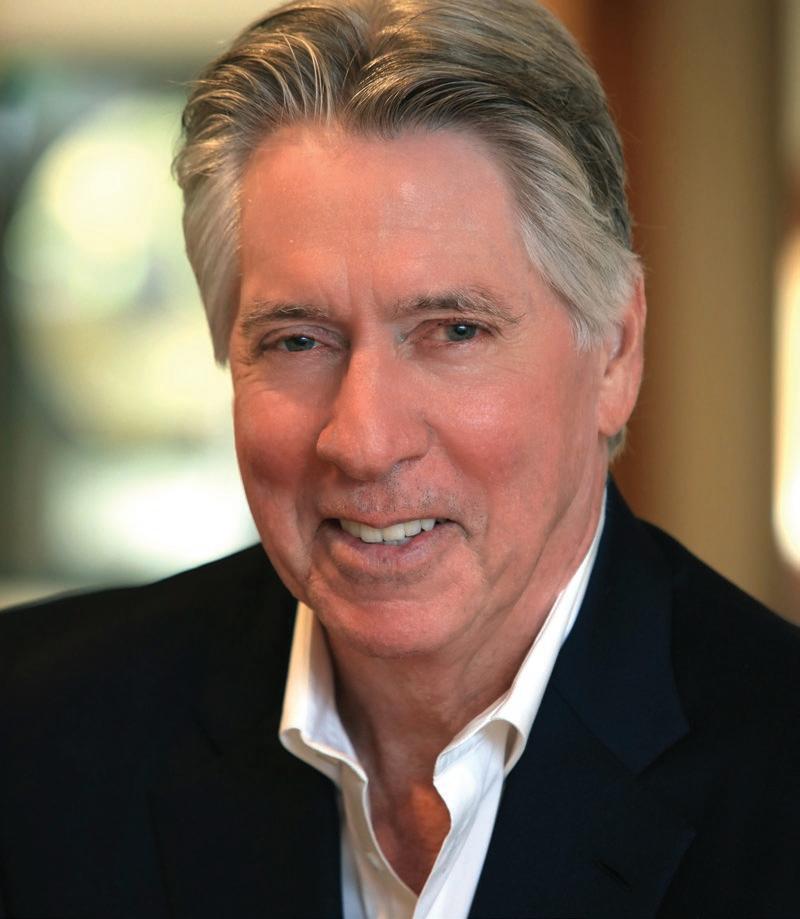
Great Scott! After 40 years we find ourselves being sent Back to the Future. This time the reentry is in the concert hall, bringing a new sense of excitement through gifted musicians all around the world. Unlike Doc Brown, I could never have dreamed that I would have the opportunity to set the time circuits back to 1985 and have the chance to relive the excitement of the arrival of Back to the Future
“Where we’re going, we don’t need roads. …” With a timeless film, and a timeless machine known as an orchestra, we can go anywhere.
—Alan Silvestri
Composer Alan Silvestri has scored some of the most beloved and profitable films in Hollywood history, with over 100 credits to date, earning him two Oscar and Golden Globe nominations, two Emmy awards, and three GRAMMY awards. While stylistically diverse, his scores feature unmistakable rhythmic melodies that continue to embody cinematic excitement and drama for generations of moviegoers.
Mr. Silvestri was born in New York City and raised in Teaneck, New Jersey. His first ambition was to become a bebop jazz guitarist. He studied at the Berklee College of Music in Boston, eventually

finding his way to Hollywood at age 22, where he composed the scores for several successful films including The Doberman Gang and its sequel The Amazing Dobermans. This led to his composing the music for the hit TV series CHiPs, which caught the ear of budding filmmaker Robert Zemeckis. Their first collaboration, Romancing the Stone, was a runaway hit, and its success formed the basis of a decades-long relationship that continues to this day. Their numerous collaborations include Who Framed Roger Rabbit?; What Lies Beneath; Death Becomes Her; Contact; Cast Away; A Christmas Carol; The Polar Express, from which his original song “Believe” garnered an Oscar nomination; and Forrest Gump, for which Mr. Silvestri earned an Oscar nomination for Best Original Score. Mr. Silvestri’s other films include Predator, Judge Dredd, The Abyss, The Mummy Returns, Soapdish,
Stuart Little 1 and 2, Disney’s Lilo and Stitch, The Bodyguard, The Father of the Bride 1 and 2, Young Guns 2, The Quick and the Dead, The A-Team, and The Avengers.
Mr. Silvestri and his wife, Sandra, are residents of California’s central coast. The Silvestri family embarked on a new venture as the founders of Silvestri Vineyards, creating wines that show lovingly cultivated fruit has a music all its own. Whether in his studio or vineyard, he continues to find inspiration and passion for music, film, family, and wine.
Steven Reineke is one of North America’s leading conductors of popular music and is in his second decade as music director of the New York Pops at Carnegie Hall. He is also the principal pops
conductor of the National Symphony Orchestra (NSO) and principal pops conductor of the Houston and Toronto symphonies. He is a frequent guest conductor and can be seen on the podium with the Chicago, Dallas, and Detroit symphonies. He made his Philadelphia Orchestra debut in 2009.
On stage, Mr. Reineke creates and collaborates with a range of leading artists in hip-hop, R & B, Broadway, television, and rock including Killer Mike, Maxwell, Common, Kendrick Lamar, Ne-Yo, Bob Weir, Trey Anastasio, Barry Manilow, Cynthia Erivo, Ben Rector, Cody Fry, Sutton Foster, Amos Lee, Dispatch, and Jason Mraz. In 2024 he led the NSO on PBS’s Next at the Kennedy Center featuring Ben Folds DeClassified with Jacob Collier, Laufey, and dodie. He was previously seen with the NSO on PBS’s Great Performances with hip-hop legend Nas performing his seminal album Illmatic. In 2017 he was featured on National Public Radio’s All Things Considered leading the NSO in live music excerpts in between news segments—a first for the show’s 45-year history.
SATURDAY, AUGUST 23, 7:30PM
Mr. Reineke is the creator of hundreds of orchestral arrangements. His work is performed worldwide and can be heard on numerous Cincinnati Pops Orchestra recordings. His symphonic works Celebration Fanfare, Legend of Sleepy Hollow, and Casey at the Bat are performed frequently in North America, including by the New York and Los Angeles philharmonics. His Festival Te Deum and Swan’s Island Sojourn were debuted by the Cincinnati Symphony and Cincinnati Pops. His numerous wind ensemble compositions are published by the C.L. Barnhouse Company. A native of Ohio, Mr. Reineke is a graduate of Miami University of Ohio, where he earned Bachelor of Music degrees with honors in both trumpet performance and music composition. He currently resides in New York City with his husband, Eric Gabbard.
Back to the Future is a trademark and copyright of Universal Studios and U-Drive Joint Venture. Licensed by Universal Studios. All Rights Reserved.
Back to the Future in Concert is produced by Film Concerts Live!, a joint venture of IMG Artists, LLC, and the Gorfaine/Schwartz Agency, Inc.
Producers: Steven A. Linder and Jamie Richardson Director of Operations: Rob Stogsdill
Production Manager: Sophie Greaves
Production Assistant: Katherine Miron
Worldwide Representation: IMG Artists, LLC
Technical Director: Mike Runice
Music Composed by Alan Silvestri
Music Preparation: Jo Ann Kane Music Service
Film Preparation for Concert Performance: Kristopher Carter and Mako Sujishi
Technical Consultant: Laura Gibson
Sound Remixing for Concert Performance: Chace Audio by Deluxe
The score for Back to the Future has been adapted for live concert performance.
With special thanks to:
Universal Pictures, Amblin Entertainment, Steven Spielberg, Robert Zemeckis, Bob Gale, Alan Silvestri, David Newman, Michael Silver, Patrick Koors, Tammy Olsen, Lawrence Liu, Chuck Nilsen, Mike Pastrano, Thomas Schroder, Tanya Perra, Chris Herzberger, Noah Bergman, Jason Jackowski, Shayne Mifsud, Darice Murphy, Mark Graham, and the musicians and staff of The Philadelphia Orchestra.









As a nonprofit organization, SPAC depends on the generosity of members, corporate and institutional partners, and our loyal philanthropic community.

Because of YOU, SPAC has become the Capital Region’s home for arts, nature, and community— proudly offering the best artists from around the world, inspiring arts education programs, and a unique array of arts and cultural experiences.

Thank you for being an integral member of the SPAC family.




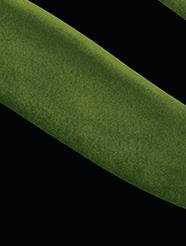







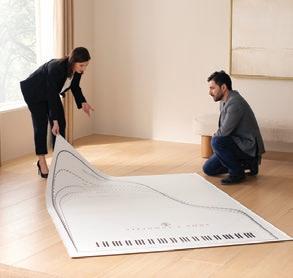



Your first ballet, romantic dates in the amphitheater, that family feeling at Jazz Fest, and grandchildren dancing on the lawn...these are moments at SPAC that will always hold a special place in your heart. What better way to honor your memories than with a gift that will support SPAC for generations to come?
Your path to a legacy gift to SPAC can be as simple as:
• Adding SPAC as a beneficiary to your will or trust
• Naming SPAC as a life insurance beneficiary
• Donating a gift from your IRA
SPAC Evergreen Society recognizes those who have made a commitment to support SPAC with a gift from a will or trust, beneficiary designation, or another planned gift.
SPAC was born in 1966 thanks to the philanthropic support of its community. As a member of the Evergreen Society, you will ensure this legacy continues.
For more information, please contact Christine Dixon at 518-485-9330 ext. 112 or cdixon@spac.org.
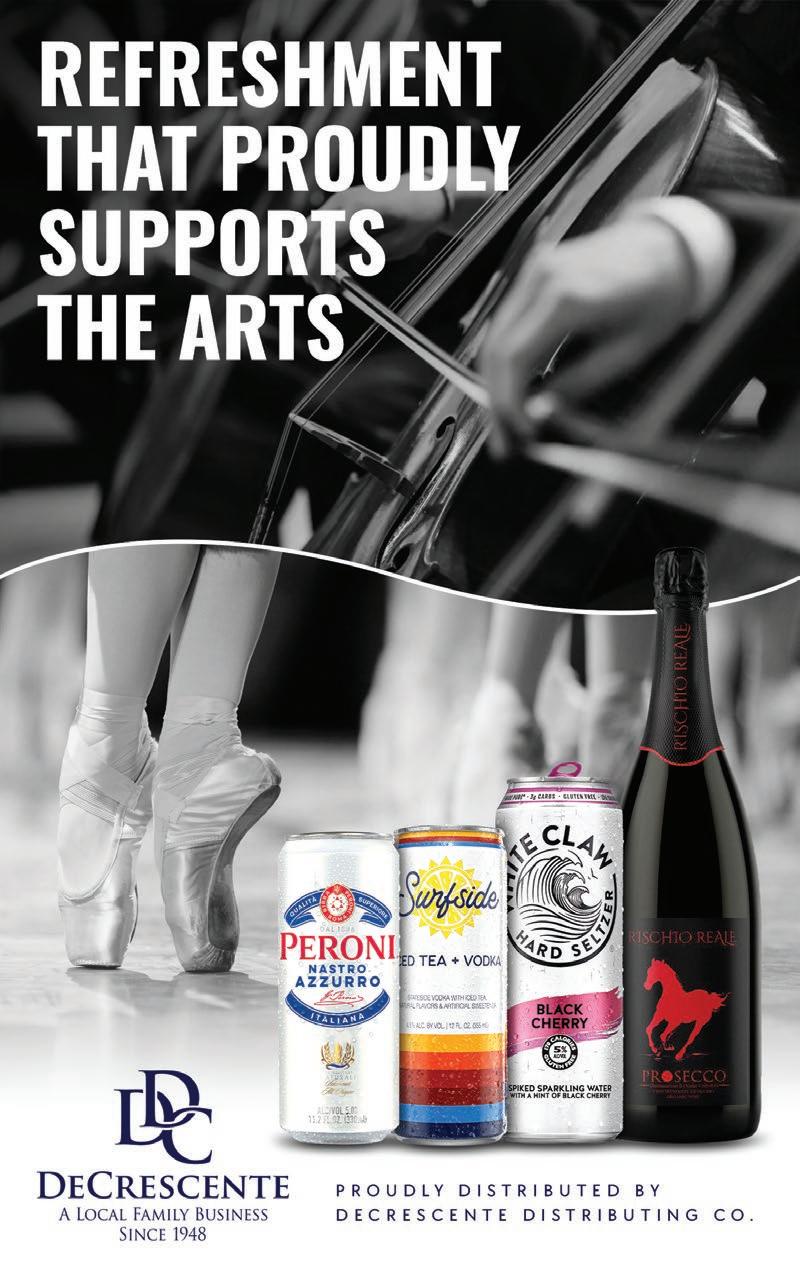













































































The Saratoga Performing Arts Center is grateful for the contributions of the following individuals, businesses, foundations, and government partners. As of May 19, 2025.
LEGACY
Michael & Stacie Arpey
Stewart’s Shops & The Dake Family
Linda & Michael Toohey
HERITAGE
Marybeth & C.J. DeCrescente
Lois & Matthew Emmens
Geraldine Golub
Jane Sanzen & Richard Higgins
Lisa & Robert Moser
Diana Ryan
The Swyer Family Foundation
CHAIRMAN
Anonymous (1)
Sally Bott
Gary DiCresce
Kenneth Ellis
Judy A. Harrigan, PhD
Teresa A. Kennedy
Steve A. Lemanski
Rebecca & Sean Leonard
Chris Mackey
LouAnn & John McGlinchey
Norma Meacham
Jeffrey R. Ridha
Peter & Jane Smith
Stephen Verral & Susanne D’Isabel
Heather & Jason Ward
MAESTRO
Kristin & Dennis Baldwin
Thomas Caulfield & Sandra Eng-Caulfield
Terry & Carlton DeBrule
Keeley & Stephen DeSalvo
Kristen & Matthew Esler
Mary & Richard Flaherty
Linda & Bernard Kastory
Dorothy LaCombe Adult Healthcare
Mary K. & Leland Loose
Sharyn & George Neble
Hon. Susan Phillips Read &
Howard J. Read
Andrea Spungen
DIRECTOR
Anonymous (2)
Judy & Grady Aronstamm
Laura & Adam Bach
Shelley & Jim Beaudoin
Leona & Tom Beck
Kristen & Daniel Bobear
Patricia Bokan
Joe Bokan
Claudia & Kevin Bright
Elizabeth G. Brown
Zane & Brady Carruth
Linda & Ron Chen
Therese & Sean Connolly
Jane & John Corrou
Noreen & Richard Coughlin
Brigid & Charlie Dake
Marsha Dammerman
Joan Dash
Doris Fischer Malesardi
Jill & Jonathan Gainor
Neil Golub
Carol Hammer
Jane & Thomas Hanley
Anthony R. Ianniello, Esq.
Kimberly & E. Stewart Jones
Pam Abrams & Paul Kligfield
Valerie Dillon & Daniel R. Lewis
Mallory & Murray C. Massry
Don & Judy McCormack
Nancy & Bruce Mullen
Francine & Robert Nemer
John J. Nigro
Jessica Niles
Marilyn S. Nippes
Linda Nizolek
Maureen Parker
Amy & John Peckham
Marjorie R. Philips & Henry Fader
Christopher & Sue Ford Rajchel
Samantha & Tyler Rajeski
A.C. Riley
Christine Rowe-Button & John Henley
Jessica & Yli Schwartzman
Deborah & Dexter Senft
Rylee & Keith Servis
Brandy & Richard Simmons
Julia Snelham Stokes
Frances Spreer Albert
Lewis Titterton
Donna E. Wardlaw & Robert F. Bristol
E. Richard Yulman
Thalia & John Zizzo
Natalie & Charles V. Wait, Jr.
PREMIERE PATRON
Anonymous (1)
Bart & Jeff Altamari
Lee L. Auerbach & Leah Leddy
Raymond Bryan & Hillary L. Swithers
Lucie Capek
Dan Cohen
Courtyard Saratoga Springs
Jamie Dodge
Carolyn Fagan
Stephanie Gardner & David Ingraham
Suzanne & Stuart Grant
Evelyn & Ken Hefner
Mike Iannotti
Maureen Lewi
Heather & Tim Mabee
Adam Stepansky & Pam Mahler
Casey McCarthy
Kathleen M. Pierce
Ann Seton Quinn
Meghan & Jason Raymond
Michael Rosen
Carla H. Skodinski & Michael M. Fieldman
Adam Stepansky & Pam Mahler
Lisa Sternlicht
Stephen & Jane Kurr Sussman
GOLDEN PATRON
Anonymous (2)
Adam Abrams
Linda & Larry Ambrosino
Susan G. Anderson Limeri
Raimundo Archibold
Jane L. Baker
Maureen & John Baringer
Ruth Ann & Bruce Beers
Shawna Begnoche
Michael Bergman
Cheryl & Barry Boyd
Cynthia & Peter Bulger
Patrick Burns
Jerome & Katie Chao
Sujata N Chaudhry
Kate & Ben Clark
Jonathan Coffey
Dale & Jack Cohen
Allan Cohen
David & Stephanie Collins
Cynthia Corbett
Ellen-Deane Cummins
Natalie Deese
Shawn Delp
Susan K. Depaula
Paul & Jean DiCaprio
Ariel Dickson
Christopher Dolinsky
Blaine Dunn
Barbara & David Edelheit
Lee Einsidler & Aimee Brisson
Rachel Eisenhauer & Dyllan Beck
David Terrence Engels
Emily Farnham Mastrianni & Timothy Cartwright
Ronda & Lawrence Fein
Carol & Arnold Firestone
Patrick & Ashley Fogarty
Jeannie & Timothy P. Fontaine
Charles C. Freihofer III
Erica & Scott Fuller
Timothy L. Grenon
Eudice & Jay Grossman
James & Mary Elizabeth Hall
Brian Hall
Jessica Hall
Paul T. Heiner
Nancy Hershey
Beth Ann & Michael Hutcherson
Pete Kaiteris
Danielle & Kyle Kinowski
Ellie & Michael Ingalsbe
Doug Kolk
Maryann Kopack
Agatha & John Koziarz
Beth & John Larow
Kristen & Jeremy Lawless
Jessica & Gregory Longo
Andrea Longoria
Brian D. Lussier
Kimberly & Jon Paul Mahar
Kate & Marco Mancini
Paul & Sandra L. Markatos
Kathy Mattes & Andrew Marsh
Peter Martin & Christine Alexander
Louise & Lawrence Marwill
Maryellen & Patrick Maxwell
Christopher Wilson & Shannon McCarthy
John E. Meczynski, Jr.
Jennifer & Steven Meglio
David Merwitz & Crystal Ayers
Grace Frisone & Michael Metzger
The Miller Family
Carissa & Geoff Mina
Jonathan Montag
Mike Morgan
Carissa & Scott Morganstein
Eleanor K. Mullaney & Robert H. Coughlin, Jr.
Marianne Mustafa & Kyle Kordich
John L. Myers & Christine Ames
Jeffrey Oskin
Maura & David Paler
Talia & Marc Pallozzi
Zachary H. Passaretti
Stephane Pelletier
Christian Perez
Carlin J. Phillips
Chris Pickett
Todd Plemenik
Scott D. Powers
Erin & Charles Pritchard
Halina Radchenko
L. Oliver Robinson
Dale & Charles Roemmelt
Dennis, Jane, & Ryan Rose
Mark Rosen
Michael Rowan
Robert Sanson & Cynthia Wright
Michael Scheidler
Charles & Angela Scully
Bridget Sheidler
Holly Shishik
Jessica Skura-Capone & Craig Capone
Margaret Smith
Dr. Steven & Mrs. Kristine Solomon
Karen Squires
Ilene & Chip Stein
Hon. Ann Marie Taddeo
Jim Taylor
Konstantin Tikhonov
Rosemarie Tobin
Caryn & Robert Tyre
Sanchi & Santosh Vaghela
Carol & Pierre von Kaenel
Matt Wallen
Eileen G. & Donald J. Whelley
Kenneth D. Wilkins
Kelly & Jay Woods
Meredith & James Woolford
Tara & Arin Wright
Carol & John Zanetti
Andrea & Michael Zappone
Jeffrey B. Ziegler
Anonymous (6)
Karen & Victor Abate
Joseph Abed El Latif
Donna & Donald Adam
Mylea & Buzz Aldrich
Elaine & Arnold Alfert
Kelly & Rick Alfred
William Allen
William J. Allerdice
Eric & Danica Andersen
Gabe & Jennifer Anderson
Susan K. Arehart
Patricia & Thomas Auer
Joanne Avella & Peter Bernstein
Nancy Bambara
Mary Jane Baumback
Theresa & John Behrendt
Darla J Belevich
Diane Benton
Annie & Mike Bergner
Bruce & Robin Biegeleisen
Mary Bigelow
Mark Biggs
Michael R. Bishop & Pauline M. Holmes
Susan & Richard Blanchard
Betty & Bill Blume
Andrew Boccio
Susan Bokan
Marianne Bokan-Blair & David Blair
Nicholas H. Bomba
Joyce Hunt Bouyea
Arthur Zobel & Ginny Brandreth
Meghan Brassel
Michael & Linda Breault
John Broderick
Erika C. Browne
Linda & Ted Bubniak
Ashley & Sandy Budd
Saratoga Dermatology/Spa City Spa
Susanne Buhac
Ann & Bob Bullock
Julie & John Burke
Thomas F. Burleigh
Sara & Aaron Bush
Gina Butera
Christy A. Calicchia
Nancy Carey Cassidy
Michael J. Carpenter
Maryellen & Nelson Carpenter
Matthew Carras
Brandon Acres & Allen Caruso
Jack & Siobhan Celeste
Bruce Cerone
Nora & Jeffrey Cheek
Dawn & Matt Chivers
Julie Chlopecki
David C. Christopher
Robin & Brendan Chudy
Glenn Clancy/Filtersource.Com, Inc.
Susan Clare & Terry Dimick
Holly & Stan Coleman
Elizabeth & John Collins
Heather Comora
Mary & Dan Conboy
Jim Connolly
J. Gregory & Marilyn J. Connors
Wendy & Neev Crane
Jean Cremen
Mark & Elizabeth Cummings
Kevin Cushing & Sue Hensley-Cushing
Deborah & Richard Czech
Katherine & Jeffrey M Daly
Nicole D’Amore
Abigail & Quade Dansie
L. Berkley & Katharine H. Davis
Giovanna de Filippi
Robin & Terry DeArmas
Christine & Ed Decker
Linda & Albert Dettbarn
David N. Deutsch
Michael Devellis & Bradley Farrell
Jeremy Dole
Dr. and Mrs. David Dolinsky
Dan Donovan
Judy & Kevin Dooley
Ellen & Todd Downing
Stan & Sharon Drosky
Denise Dubois & William DeLuca
Ann Duffy
Alan Ellis & Mary Dunbar
Christine Dunbar
Anita Dunn
Mina Dunnam & Tom Barkley
JoAnn Duquette
Jeremy & Jennifer Eager
Dr. Richard & Mrs. Ruth Cheris Edelson
Judy Edwards
Elizabeth King & Charles Engros
Michael Erario
Susanne D. Erb
Carolyn & Oliver Esman
Lisa & Phil Evans
The Saratoga Hilton
Erika & Peter Fallon
Carol & Tracy Farmer
Mary & David Farr
Adam Fink
Michael & Debbie Flaherty
Susan Rosko Fogarty
Rita & Dan Forbush
Brian Fountain & Jill Burton
Cassie & Harvey Fox
Dr. John & Mrs. Deanne Fox
Mark A. Franzoso
Nell & Robert Fraser
David Frederick
Rhoda & Avram Freedberg
Phyllis & David Fusco
Patricia A. Gallagher
Anne & Thomas Gaughan
Mary Gavin & Jim LaVigne
Kelly & Eric Geckler
Lynne Gelber
Stuart L. Ginsburg
Carol & Dave Godette
Mr. & Mrs. Jay S. Goldman
Perry & Joe Goldsmith
Elizabeth & Jerry Goldstein
Peggy & Rich Greenawalt
Robert Greenbaum & Lynne Knauf
Catherine LoMonico
Laurie & Philip M. Gross
Zachary Grossman
Jonathan Grossman
Laura Cloke & Thomas Grouard Lillelund
David Guillet & Debra Mailberg
Rick Guior & Barbara Frank
Madison Gurga
Susan Gurian & Bob Sommerville
Galina Guterman
Mona & Jon Haas
David Haggerty
Pauline & Henry Hamelin
Frieda Hammond-Carmer & Britt Carmer
Maria Harrison
Patty HasBrouck
Barbara Havenick
Susan Hawkes-Teeter
Joanne & Roscoe Haynes
Jason & Susan Hellickson
Martin Hellwig
Mary Hendrickson
Jessica & David Hennel
Joy & Steven Heyman
Adam Hills
Joseph A. Hinkhouse
Glens Falls Eye Associates P.C.
Felicia & Stephen Hoffman
Kathy & Stu Hoffman
Jon Hosler
Laura & William Hotchkiss
Sabrina Houser
Jason Hover
Robert & Mary Hoyer
Nancy & William Hunt
Elaine & Peter Hutchins
Sara J Jackson
Mr. Andrew James
Susan & Bill Jeffreys
Patricia Joy
Marilyn Kacica & Joseph Dudek
Harriet J. Kalejs
Grant Kamin
Allison & John Karcher
Ruth & Douglas Karrel
Nancy Kass
Jordan Kassoff
Aaron Kassoff
Dana & Tucker Kear
Gail & Alexander Keeler
Chad Kelman
Sean Kerls
Becky & Greg Kern
Richard C. King & Gail Grow
Sally & Larry King
Mara King
Shaun Kippins
Rod Klassovity
Kim Klopstock
Brenton Koch
Erin K Koenen
Vincent & Milly Koh
Thomas J. Kubisch
Jan McCarthy Kurposka
Greg J. Kutzuba
Eric & Heather LaCoppola
Kurt Ladu
Anne Lagan & Jean-Paul Poulin
Marti & Greg Laird
Michael Lanides
Barry & Sara Lee Larner
Gloria M. Lawrence
Darryl Leggieri
Barbara & Andrew Levine
Jeannette & Eddie Liebers
Chris Litchfield & Seth Yates
Anna & Charles Lobosco
Andi & Phil Lodico
Meredith & Jon Loeck
Ann & Doug Logan
Tiina Loite & Fred Conrad
Susan A. Lucente
Ginny & Paul Lunde
Marcia MacDonald
Todd Macejka
The Honorable Earle I. Mack
Leslie & John Cashin
M. Lynne Mahoney
Susan G. & Louis R. Malikow
Kathryn Manning
Ruthann Marcelle & Paul Gozemba
James Markwica/LaMarco Physical Therapy, PC
Charles Marshall
Dawn & Mario Martinez
Cathy DiMiceli Masie & Elliott Masie
Michele Massiano
Sue Ellen Mathers
Mike Mauriello
Michael & Cory McCarthy
Brian & Stacey McDonald
Patricia McKay/Celtic Counseling Services
Susan & John McPhillips
Linda & Peter Meenan
Lisa S. Mehigan
Allison & David W. Meyers
Marcia & Robert Miller
Valerie Mitchell
Judy & Charles Monson
Julia Moore Vogel
Kathleen & Michael Moreland
N.J. Morris
George & Anne Morris
Kathleen & Michael Mullins
David R. & April S. Murphy
Mary Murphy
Jamie & Scott Neverett
Victoria & Thomas Niles
Dan & Sally Nolan
Georgie Nugent & Eric Miller
Brian O’Connell
Jackie & Chuck Okosky
Sharon & Fred Olbrych
Sharon O’Meara
Steven J. Oshins
Sheila Parkert
Ritchie Parrotta
Leslie Baker & Geoffrey Patack
Deborah Peavey Graves & Daniel Graves
Dottie Pepper & David Normoyle
Lindsey & Vince Pettograsso
Natalie J. Adler & Gregory L. Pinto
Andy Pinto
Lois & Donald Porter
Kendra & David Pratt
Lenore Punk
Mrs. Lisa Queeney Vadney
Helen Rack & Erwin Guetig
Corey Rashkover
Caroline & Justin Ray
Eileen Rea & Lynda Castronovo
Mary Grace & Jack Reed
Hildy & Herb Reich
Emily S. Reilly
Nancy O’Malley & Jonathan T. Reinhardt
Carol Kautzman & Ren Reynolds
Dorothy Reynolds, MD
Linda Rhodes
Nelly & Brian Rice
Carla & Steven Richards
Jessica & Alan Richer
Debra & Thomas Riell
Patty & Vincent Riggi
Michele Riggi
Alexander Rodriguez
Bill Rooney & Elizabeth Pasnikowski
Lynn & Peter Young
Amy Ryan
Cynthia & Daniel Ryan
Sherry and DJ Sablich
Elaina Richardson & Isam Saleh
Gary Sancilio
Dee Sarno
Michael & Anne Savitch
Kevin Sayet
Katie Scalamandre
Susan Schuster & Jean Trewhella
Ellen & Andrew Serling
Tracy & Michael Shannon
Alex Shea
Melanie and Michael Fraher
Malcolm J. Sherman & Elaine Rubenstein
Rabbi Scott Shpeen
Cynthia & Herb Shultz
Elaine M. Sillery
Silver Cannabis Company
Simmons Covering Services Inc
The Boger Family
Theresa & Richard Sleasman
Wendy M. Smith
Denise Smith
Elissa & Justin Smith
Tim & Libby Holmes
Ida & Larry Snavley
Gail & Louis Snitkoff
Donna Snyder
Joyce Soltis & David Long
Cindy Spence
Bernadette & Lance Sprinkle
Paul E. & Deborah Spurgas
Christine & David Stack
Joanne Stazio Silverman
Matthew Stein
Tas Steiner
Christopher Burns & Kathleen Stellrecht
Grace Sterrett & Ben Falcigno
Steven & Pam Stiansen
Stifel
Robert A. Stout & Audrey Choiniere
Heather & Brian Straughter
Jeff & Susan Stuhr
Robbin & William Suess
Hilton Garden Inn Saratoga Springs
Carol B. Swyer
David J. Taffany & Nancy C. Sapio
Gloria Tawil
Eric A. Tepper & Patricia Lane Tepper
Michael & Judiann Thomas
Laura Tilton
Mr. & Mrs. Michael Tisinger
Toby & Melissa Tobrocke
Daniel & Kerry Tomson
Mary Ellen & Mark Toomey
Jennifer & Brian E. Topping
Mr. & Mrs. Joseph A. Torani
Nathan O. & Nancy Towne
Lynette & Michael Tucker
Margaret E. Tuft
Holiday Inn Saratoga Springs
Sunday & Joseph Verrillo
Jeffrey & Brenda Vredenburg
Mary Kay Vyskocil
Angela Nadine Wakefield
Catherine & Robert Allen
Ms. Susan Waldron
Bill Walker & Helen Edelman
Ed Selig & Renee Walrath
Laurie Wasserstein
Leisa Diane Waterhouse
The Weatherwax Family
Jeff & Megan Wegener
Timothy & Karen Welles
Kenton A. Wengert
Garry & Joyce White
Joan & Lance Wilkins
Mallory & Grant Willsea
Fredrick Winkler
Windy Wyczawski & Keith Wharton
Judith & Harold Zassenhaus
Daniel Zelem Jr
Harvey Zirofsky & Sharon Dunn
ENCORE
Anonymous (2)
Amy Azarow
Karen Becker & Anthony Galloro
Joyce P. Gurzynski
Liz & Martin Brayboy
Janice E. Burns
Daniel Caputo
Dorothea & George Casey
Brian Christiansen
Jim Conti
Peter Cook
Stephanie & John Copeland
Kirk Cornwell
Caroline & Matthew D’Abate
Heather & Darel Dacus
Nancy De Vore
Thomas & Georgia Decker
Beth & Brian Devane
Marji Dickinson
Timothy Edmonds
Nabil ElDib
Stanley Feldman
Judy Fitzgerald
Irene Flatau
Alan Fritch
Tom Gaughan
Joseph Giammalvo
James P. Gold
Joanne & Jim Grande
Matthew Greeley
Norene M. Grose
Paula & Jeffrey Gural
Steve Hanson
Nancy & Steve Hovey
Tim Daniels
Robert M. & Debbie S. Jaffe
Dennis Jaffee
James Jankowski
Tim Jones
Bill Justice
Laury G. Kerr
Michele & Roy Lance
Vincent Lazzaro
Megan Lepp
Lori & Robert Liebert Van Vranken
Lisa Livingston
Karen & Paul Macielak
Victor Macri
Charles & Debra McCambridge
Michele McGeoch
Virginia L. Mee
Judy & Charles Monson
Matthew Morrissey
Arliss Nygard & C. Murray Penney
Bill Olender
Glenn Olson
Joy Olson
Simone & Jonathan Piraino
Michael Plaia
Judy & Jim Pohlman
Hilary Tyson Porter
Conor Rappaport
Daniel Reilly
Terry & Michael Reilly
Elizabeth Reuter
Kevin & Sue Roach
Jo Anne Robbins
Len Rockenstyre
Don Ruberg & Marin Ridgway
Heather & Christopher Rusiecki
Elizabeth & Doug Rutnik
Jane Sanzen
Ray Sayour
Tyler Scott
John & Jean Shaver
Jed T. Shpur
Kimberly Simmington
Mitchell Simmons
Sue Gronczniak
Monaco Cooper Lamme & Carr, PLLC
Rosemary W. & Michael L. Somich
Gail Stern
Dorene & Michael Sternklar
Harold S. Trimmer, Jr.
Jennifer L Van Ort
Lucille A. Varney
Jenny & Mike Vidoni
Virginia & Jason Vitullo
David Weare
Vera Weiss
Diane White & Ted Orosz
Lori A. Whitney
Frank & Cynthia Williams
BRAVO
Anonymous (4)
Judith & Gregory Aidala
Madeline Akel
Naomi & Jeffrey Allen
Mary L. Anderson
Sally Andrew
Peter & Susan Antoinette
Judith Archibold
Cindy Arkin
Michael Arnush & Leslie Mechem
Michael Avis
Sharon C. Awramik
Paul J. Azoulay
Michael F. Barrett
Annamaria & Mark Bellantoni
Benaman/Roginski Family
Mark Benerofe
John L. Benvenuti
Michael Berger
Daniel Bernstein
Chris Berry
Mary Beth Bianconi
Angella Rella & Jim Birnby
Louise Bonanno
James Boyer
Marilyn Ammerman Bradley
Scott Brazee
Clarissa Bullitt
Michelle Burlingame
Jo-Anne & Keith Campbell
Judy & Richard Capullo
MaryLou & Jerry Cartwright
James Chapman
David Clark
Anne & Joe Clark
Kenneth Clute
Catherine E. Commerford
John & Gabrielle Coppola
Jo Anna Corbin
Mary A. Corrado
Richard A. Curreri
David Davidson
John Davis
Ilse de Veer & Elayne Livote
Mary E. Degroff & Robert Knizek
Diane Dellaratta
Amanda & David Demasi
Jennifer Mina & Damon DeTeso
Matthew & Blair Dicaprio
Kathleen & Peter Diedrich
Charles L. & Reisa Donath
John & Maryann Donohue
Stephen & Susan Dorsey
Kate & Jerry Dudding
Siobhan Dunham
Theodore Ebersole
Chandra Eldred
Keith & Paula Enderle
David Engel
William A. Epple
Nancy & Richard Erdoes
David Ernst
Sarah Etkin-Sefcik
Mary Anne Fantauzzi
Charles F. Ficken
Lorraine & William Fitzsimmons
Ben Foster
Dr. & Mrs. Richard Fountain
Lisa Frazzetta
Eugene Frost
James E. Galati
Meg Gallien & Bill Hammond
William Gibbons
Givingback
Amy Godine & John Nicholson
Gary Gold & Nancy Pierson
Felice & David Gordis
Joan & George Gould
William Gray
Katherine W. Gurley
Barbara T. Hartman
Wilhelmina A. Haruk
Albert Hauber
Dale Hausman
Jean & Walt Hayes
Kathleen & Charles Heidsieck
Robert Heins & Linda Cox
Ruth & Roland J. Helgerson
Judith & Richard J. Heller
Barbara & Frank Herbert
Kathleen Hogan
Jennifer Hogan
Bertha Holleman
Thomas E. Hommel
Mary Huber
Barbara Hubschmitt
Michelle Hunt
Nannette & Matthew Hyland
Karin Hyman
Martha & Michael Iacolucci
John Iannotti
Terri & Rich Indyk
Diane Irwin
Jon Isaacson
Nicole D. Jaeger
Margie Lee Johnson
Bryan Ju
Maura Kane
Lyndsy Kapustiak
Milly & Al Karoly
Joanne D. Kay
Marcia & John Keefe
Elaine & Robert Kennedy
Judith Knispel
Jeffrey & Michelle Koester
William Krueger
Catherine Krylowicz
Nicole Lanoue
Jack Lebowitz & Kat Griffin
Robert J. Lindinger
Diane Lloyd
Barbara & Jim Lombardo
Joseph Lomuscio
Christopher Lyons
Sharon & Charles Maneri
Stephanie & John Markowich
Richard Martino
Phillis Maucieri
Jo Ann McCarthy
Bill McCartney
Christine L. McDonald
Felton McLaughlin
Richard J. Merck
Peg Minarski
Patricia Mion
Adrienne Mongan
Harry Moran
Edward L. Motter
Jane S. Murphy
William F. Murray
John & Norma Myers
Niki & Paul C. Naef
Debbie & Pablo Lacayo
Chris Noessner
Zoe Nousiainen
Mary Alice Nyhan
Mary T. O’Connor
Michael J. O’Connor
Mary Lynn Olbrych
Margo & Jeff Olson
Angelique & Joseph Olszowka
Allison Orchant
Marygina & Gerald Ortiz
Audrey J. Osterlitz
Carol Pacco-Long
Peter & Colleen Palleschi
Linda S. Parkoff
Christopher Parks & Lauren Baran
Michael & Cynthia Penfold
Johanna Petersen
Patricia Peterson
Peter & Pat Phelan
Gretchen M. Piwinski
Eric Plesko
Helen Porter
Eileen & Daniel Ranalli
Andy Rehm
Monica & Wayne Richter
Mary Ritter
Susi & Ken Ritzenberg
Veronica & Sean Roddy
Timothy Rodgers
Penny Jolly & Jay Rogoff
Christine & Ken Romano
Heather Ronan
Robert F. Rusiecki, Jr.
Sarah Ryan
Kevin Ryan
Steve Allegra
Mark J. Sanantonio
Mary Scanlan
Charles D. Schaeffer
Andrea & John Schneiter
Irene Schultz
Susan Seeley
Bradley Bridge & Dveera Segal
Laura Shea
Pam & Richard Siegel
Steve Sills
Stephen Singer
Julie Slovic
Carol A. Smith
Terence Smith
Jessica Smith
Clara Somoza
Joshua Spagnola
Phillip & Karen Sparkes
Jacqueline & Michael Stampalia
Danny Stevens
Lucinda Strasenburgh
Stacy Styles
Kim Swidler
Catherine M. Szenczy
Deborah H. Tagliento
Katherine Tomasi
Marcia Trotter
Mary & Kevin Tully
Mary Ellen Turner
Scott Turner
Jennifer & Andrew Turro
Amy & Edward Van Gelder
Tim VanBenschoten
Steve Verdini
Nancy Weaver
Amy Wellman
Nancy Werner & Roger Risch
Walter Whalen
Andre Wharer
Sarah & D. Billings Wheeler
Lawrence & Sara Wiest
Michael & Donna Wilcox
Winnie & Fred Wilhelm
Joan Williams
Ann & Fred Wolpert
Connie & David Wood
Marcia Zalbowitz
Melissa M. Zambri & Gina M. Moran
Bruno Zarkower
Richard Zick
CORPORATE MEMBERS
VISIONARY
Fingerpaint
GE Vernova
Stewart’s Shops & The Dake Family
The Adirondack Trust Company
INNOVATOR
Druthers Brewing Company
Phinney Design Group
Skidmore College
Social Radiant
The Fort Miller Group, Inc.
A&A Sultan LLC
Empire State University
Hoffman Development Corp.
Lift Marketing
Merrill Lynch, Pierce, Fenner & Smith Inc
Mohawk Honda
Pompa Bros., Inc.
The Albany and Saratoga Centers for Pain Management
West Group Law
LEADER
BPI Mechanical Service
BST & Co. CPA’S, LLP
Greno Industries, Inc.
KPTC LLC
Mangino Buick GMC
Mechanical Dynamics & Analysis
RJG Enterprises LLC
RoseWaldorf PLLC
Saratoga Schenectady Gastroenterology Associates
Soleno
MENTOR
Arrow Bank
Austin & Co., Inc.
Bouchey Financial Group
Carpe Diem Real Properties, LLC
Carpenter & Associates Insuring
Agency LLC
CDPHP
Couch White, LLP
Ellis Medicine Foundation
Fenimore Asset Management
Krackeler Scientific, Inc.
Lemery Greisler, LLC
LMP Consulting, LLC
Minich MacGregor Wealth Management
Munter Enterprises, Inc.
NOVUS
Olde Bryan Inn
On Call Plumbing and Heating LLC
Point Breeze Marina
Polyset Company, Inc.
R.J. Murray Company
Siemens
StudioA
Teakwood Builders, Inc.
The Adelphi Hotel
The Gideon Putnam
The Kermis Club
Trustco Bank
UHY Advisors - Howard Foote
Vermont Kitchen Supply
Woods Oviatt Gilman LLP
Zippy Chicks
SPAC EVERGREEN SOCIETY
Anonymous
Virginia Alston
Elizabeth Louise Berberian
Joyce Bixby
Susan Bokan
Ann & Robert Bullock
Joanne Chaplek
Jane & John Corrou
Ellen deLalla
Gary DiCresce
Isla & Michael Dreher
Lois Emmens
Chris Freihofer
Dr. Jon D. Globerson
Judy Harrigan, PhD
Richard Higgins
Robert M. & Debbie S. Jaffe
Judith Jameson
Nancy McPhaul
Virginia Mee
Steve Lemanski
Denise Polit
Jean A. Richards
Katie Scalamandre
Joanne Shay
Carla H. Skodinski
Andrea Spungen
James Swenson
Dawn Szurek
Stephen Thomas
Robert Watts
INSTITUTIONAL SUPPORT
Carl E. Touhey Foundation
Empire State Development
Frank and Lydia Bergen Foundation
Gene Robb Performing Arts
Scholarship Fund
Glens Falls Foundation
The Little Family Foundation
Mid Atlantic Arts
New York State Council on the Arts
NYS DanceForce
NYS Office of Parks, Recreation and Historical Preservation
Saratoga County, NY
The Wright Family Foundation
MEMORIAL AND HONORARY GIFTS
In Honor of A. John Popp
Jim & Rose Barba
In Honor of Carol & Tracy Farmer
Judy & John Paul Miller
In Memory of Dorothy Scott
Michael & Mary Biffer
In Memory of Joann Shirley
Mr. Daniel Gibbs
In Memory of Judy Glick
Pamela Grant & Peter Barclay
In Honor of Maddie McCarthy
Peter Kalteris
In Honor of Patricia Titteron
Mr. Lewis Titterton
In Memory of Phyllis Aldrich Anonymous
In Memory of Richard Varley
Mr. Gordon Boyd
Meg Gilmartin
Cindy Spence
Gary J. Bordeau
In Honor of Sherry Bishko
Sean Walmsley
In Honor of Susan & Bill Dake
Mrs. Laura Dake Roche
Zoe McKee & Matthew Fisher
Aimee & Gary Dake
In Memory of Virginia & John Flagg
Nancy Mullen














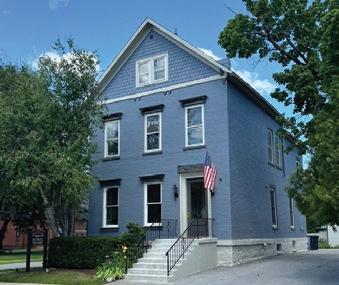
CHAIRPERSON
Charles V. Wait, Jr
VICE CHAIR
Carl DeBrule
SECRETARY
Judy A. Harrigan, Ph. D
TREASURER
Sean Leonard
MEMBERS
Will Aldrich
Raimundo Archibold
Sonny Bonacio
Elizabeth Sobol CEO
Chris Shiley President
Leslie Collman-Smith General Manager
Jay Lafond Chief Financial Officer
Rachel Arduini Ticketing and Member Services Coordinator
Zack Ashcraft Box Office Assistant, and Group Sales Manager
Adrienne Atiles Director of Grants & Development Communications
Austin Bayliss Senior Director of Events & Special Projects
Jess Bien Director of Learning & Engagement
Andreya Cherry Artistic Administrator
Jeff Conkey Director of Event Operations
Sally Bott
Sujata N. Chaudhry
Susan Dake
C.J. DeCrescente
Keeley Ardman DeSalvo
Geraldine Golub
George R. Hearst III
Richard Higgins
Anthony Ianniello, Esq.
Heather Mabee
Chris Mackey
Donald J. McCormack
Bill McEllen
Norma Meacham
Eleanor K. Mullaney
Sharyn Hiter Neble
Chet J. Opalka
Marcel D’Aprile Marketing Associate
Christine Dixon Senior Director of Individual & Planned Giving
Jerry Dumary Facilities & Maintenance Manager
Jana Gordon
Senior Vice President of Development
Emily Graham Programming Associate
Dave Greco Vice President of Operations
Andrew Gunther Digital Marketing Manager
Melissa Howe Ticketing & Member Services Coordinator
Brittany Kendall Senior Director of Marketing
Gilles Lauzon Controller
Cynthia Madcharo Senior Accountant
Maddie McCarthy Development & Events Coordinator
Jeffrey R. Ridha, M.D.
Dr. L. Oliver Robinson
Deborah Senft
Andrea Spungen
Stephan C. Verral
Lisa Vollendorf, Ph. D
Jason C. Ward
TRUSTEES EMERITI
William P. Dake
Charles V. Wait
TRUSTEES OF COUNSEL
John J. Nigro
Edward P. Swyer
Linda G. Toohey
Dennis Moench Vice President of Education
Abigal Monson Creative Associate
Linsey Reardon Manager of Community Education Programs
Hope Relly-Cobb Marketing Manager
Timothy Roylance Box Office Manager
Francesca Soldevere Dance Educator
Scott Somerville Director of Creative Services
Olivia Szczurko- Walton Administrator and Arts Educator
Heather N. Varney Senior Director of Corporate Partnerships
Kristy Ventre Vice President of Communications
Jill Zygo Director of Arts in Education
Mike Zygo Arts Educator



















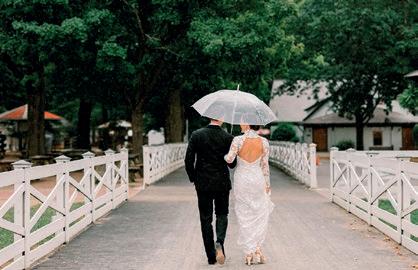









Half-Day: July 7-18th






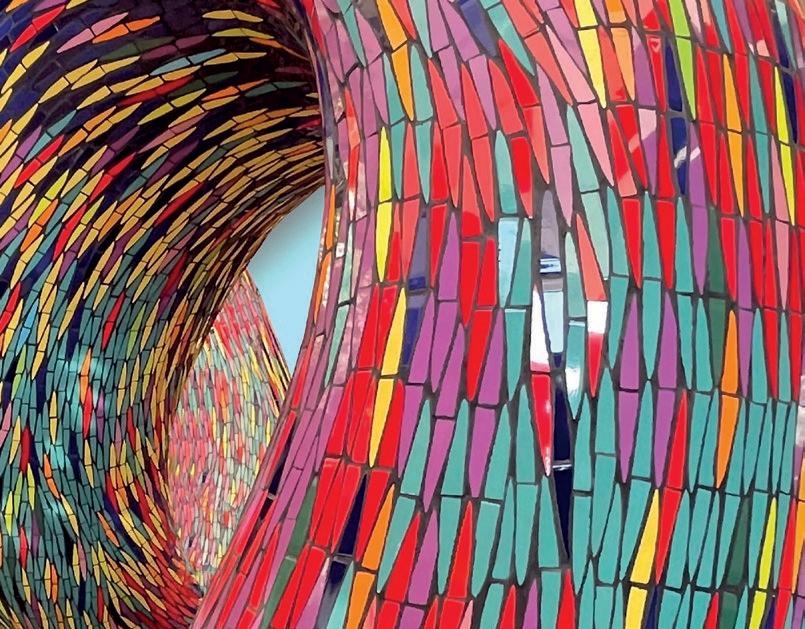

Every




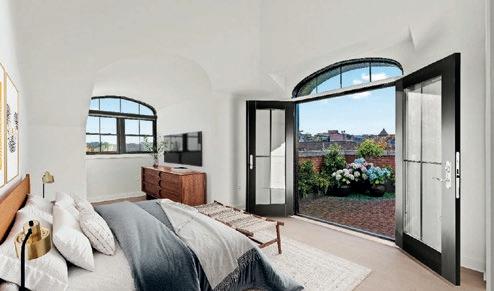

THE ATTORNEY GENERAL OF THE STATE OF NEW YORK. THIS ADVERTISEMENT IS MADE PURSUANT TO COOPERATIVE POLICY STATEMENT NO. 11 ISSUED BY THE NEW YORK STATE DEPARTMENT OF LAW FILE NO. CP250021. SPONSOR: PAVILION
SPONSOR: PAVILION SARATOGA OWNER LLC, PAVILION TIC II OWNER LLC, PAVILION TIC III OWNER LLC, PAVILION TIC IV OWNER LLC, PAVILION TIC V OWNER LLC,






















